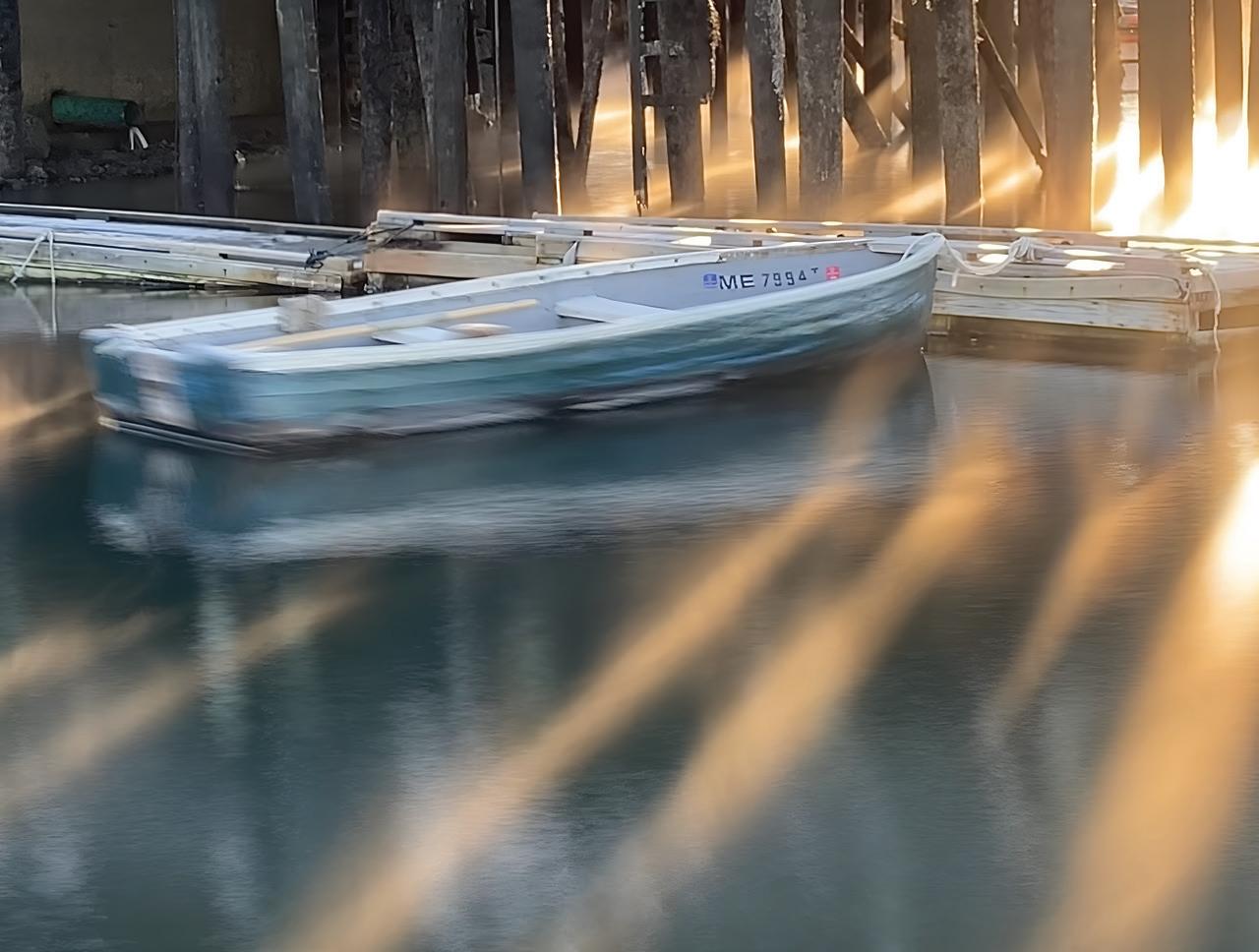





VOLUME 21 • NUMBER 1 • SPRING 2025
COLLEGE OF THE ATLANTIC MAGAZINE







VOLUME 21 • NUMBER 1 • SPRING 2025
COLLEGE OF THE ATLANTIC MAGAZINE
COLLEGE OF THE ATLANTIC MAGAZINE
Editorial
EDITOR
Daniel Mahoney
EXECUTIVE
EDITOR
Rob Levin
COPY EDITOR
Caitlin Meredith
EDITORIAL
CONSULTANT
Jodi Baker
DESIGN
Corey Blake
Z Studio Design
Administration
PRESIDENT Sylvia Torti
PROVOST Ken Hill
ASSOCIATE ACADEMIC DEAN
Kourtney Collum
DEAN OF ADMISSION
Heather Albert-Knopp ’99
DEAN OF INSTITUTIONAL ADVANCEMENT
Shawn Keeley ’00
DEAN OF ADMINISTRATION
Bear Paul
DEAN OF STUDENT LIFE
Joshua Luce
DEAN OF COMMUNICATIONS
Rob Levin
Board of Trustees
TRUSTEE OFFICERS
Beth Gardiner, Chair
Marthann Samek, Vice Chair
Hank Schmelzer, Vice Chair
Ronald E. Beard, Secretary Barclay Corbus, Treasurer
TRUSTEE MEMBERS
Cynthia Baker
Timothy Bass
Michael Boland ’94
Joyce Cacho
Alyne Cistone
Heather Richards Evans
Allison Fundis ’03
Marie Griffith
Cookie Horner
Nicholas Lapham
Howard Lapsley
Casey Mallinckrodt
Chandreyee Mitra ’01
Roland Reynolds
Laura McGiffert Slover
Laura Z. Stone
Steve Sullens
Claudia Turnbull
LIFE TRUSTEES
Samuel M. Hamill, Jr.
John N. Kelly
William V.P. Newlin (deceased, 2024)
TRUSTEES EMERITI
David Hackett Fischer
William G. Foulke, Jr.
Amy Yeager Geier
Elizabeth D. Hodder
Anthony Mazlish
Jay McNally ’84
Philip S.J. Moriarty
Cathy Ramsdell ’78
Hamilton Robinson, Jr.
Nadia Rosenthal
William N. Thorndike
EX OFFICIO
Sylvia Torti
At College of the Atlantic, we envision a world where creativity, presentness, compassion, respect, and diversity of nature and human cultures are highly valued. A world where all people have the opportunity to construct meaningful lives for themselves, gain appreciation of the relationships among all forms of life, and safeguard the heritage of future generations.
COA Magazine is published annually for the College of the Atlantic community.
OVERTHE PAST few months, I have been considering the profundity and complexity of the word reciprocity
A quick online search in the MerriamWebster Dictionary resulted in two definitions: “Mutual dependence, action, or influence,” and, “A mutual exchange of privileges.”
Those were both satisfying enough, even if I wondered at the deeper meaning of influence and privileges Instead of diving into the many possible iterations and historical contexts of Merriam’s definitions, I decided to explore reciprocity through other texts.
The next definition I found online was a proverb: “One gives freely, yet grows all the richer; another withholds what he should give, and only suffers want” (Proverbs 11:24). This notion of reciprocity spoke to me in its simplicity and depth and its fundamental recognition of relationship. It said nothing of influence or privilege
A few days later, I met with a COA faculty member and mentioned to her that I was thinking about this question. The next day I found a copy of Robin Wall Kimmerer’s The Serviceberry: Abundance and Reciprocity in the Natural World (Scribner, 2024) in my mailbox. That very evening, I read through that succinct and very fine book, and I found this line: “We are all bound by a covenant of reciprocity: plant breath for animal breath, winter and summer, predator and prey, grass and fire, night and day, living and dying.”
Here was reciprocity in action. A comment in passing, a book placed in a mailbox, a new world of ideas spread from one mind to another and then another.
The days got colder, well below freezing, and Kimmerer’s book sat on the table staring up at me morning and evening. On its cover is a picture
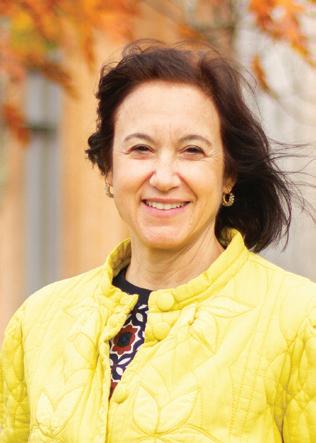
of a serviceberry tree and a waxwing bird. With temperatures in the teens, I was impelled to go to our local hardware store, filled with wonderfully helpful people, and buy a bird feeder for my new home. These past days, I’ve received deep pleasure as I sit with my morning coffee and enjoy the company of chickadees, juncos, and cardinals outside.
Having circled around these many meanings and takes on reciprocity, making my own circles as I trudged through snow and ice around nearby Witch Hole Pond in Acadia National Park, I realize that being asked to write something about reciprocity was a gift, one that led me to internal and external conversations with writers and thinkers from so many perspectives, from conversations with humans and nonhumans around me. In the end, I have come to believe that reciprocity is just that—ecological relationships repeated over and over, whether in giving a gift or receiving one back. It’s a call or a meditation, a prayer or a scientific study, that helps us give daily thanks for breath and food and seasons. Thanks for repeated circles around a pond, the building of new friendships, and gratitude for those that endure and grow.
Sylvia

IN DECEMBER 1956, at Sun Studios in Memphis, Tennessee, Carl Perkins, Elvis Presley, Jerry Lee Lewis, and Johnny Cash were hanging out together playing music. They were young and at various stages of (super) stardom except for Jerry Lee Lewis, who was unknown but who had more than enough ego to match the other musicians. About an hour into this jam session, Sam Philips, head of Sun Studios, hit the record button on what came to be known as the Million Dollar Quartet session. Between one of the songs, Presley talks about seeing a young man performing Don't Be Cruel in Las Vegas—a young, unknown Jackie Wilson—and being blown away by the performance. One thing that struck Presley was the way Wilson intoned the word telephone in the line, If you can't come around, at least please telephone... Presley tells the other musicians that he liked Wilson's version of the song more than his own.
You can see the influence Wilson's performance had on Presley if you google "Elvis on Ed Sullivan 1957" and
watch Presley sing Don't Be Cruel one month later. Presley uses Wilson's stylized telephone and the smile that brightens his face afterward is unmissable. I love that. The smile of a young Elvis Presley directed to a young Jackie Wilson coming to us via YouTube in 2025 when the world feels as upside down as it may have felt in 1956 when the struggle for Civil Rights was ongoing, and war was raging in the Middle East, simmering in Vietnam. I'm not saying that a smile from Elvis Presley is enough to heal the world, but it is a reminder that—upside down or not—life moves on and we move on with it.
For me the act of teaching carries with it the utopian idea that someday, 15 or 20 years after being at COA, a student will remember the class when we discussed a poem by Jane Mead about travelling alongside a truck loaded with chickens in cages, and how that poem was horrifying and miraculous and meant something. Or maybe a student years after graduating will think of herring gulls or velvet worms or palm-wine music or schist... But the idea that people will still be thinking and remembering and building new connections to old knowledge is a boon to me because it's why each of us made the choice to come to COA. We wanted to weave webs of meaning. We wanted to build the reciprocal.
Neither Presley nor Wilson would make it out of their 40s, but we have the music and the performances. If you have not communed with the voice and music of Jackie Wilson in a while, I suggest you find some speakers and turn (Your Love Keeps Lifting Me) Higher and Higher up as loud as you can stand. Swim in that wall of sound. Wrap yourself in that voice. This is a gift!
Dan

AUGUST: COA students conduct an energy audit at a home on Great Cranberry Island. Led by energy director David Gibson and in collaboration with the Campus Climate Action Corps, the group audited 18 homes on the island and provided detailed reports and suggestions. The project was funded by a US Department of Energy Buildings Upgrade Prize.
Honoring COA’s unoffi cial mascot, the Black Fly Society was established to make donating easier and greener. You can join this swarm of sustaining donors by setting up a monthly online gift. It’s the paperless way to give to COA.
NOVEMBER: Protesters gather at the 29th Conference of the Parties to the United Nations Framework Convention on Climate Change in Baku, Azerbaijan, where the annual COA delegation, led by professor Doreen Stabinsky, was in attendance. The US has since begun to formally withdraw from the framework.

JUNE: Opal Architecture Management Partner Tim Lock speaks at the dedication ceremony for Collins House, COA's new residence hall named for president emeritus Darron Collins ’92 and his family. The building is designed and built to stringent Passive House energy standards.

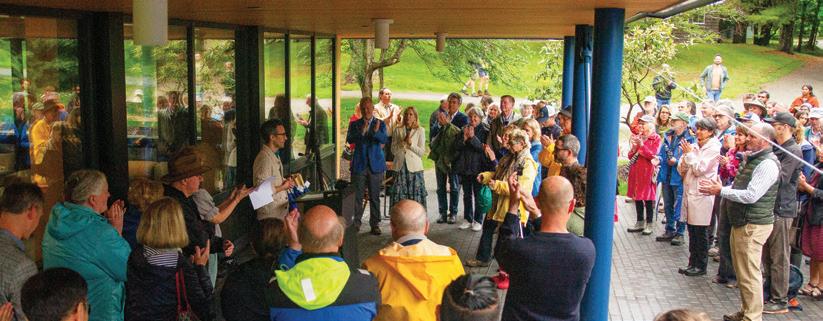
By Jeremy Powers ’24
CAMPUS IS ALWAYS abuzz with new faces. In the fall, there’s the incoming class, eager to craft new memories and discover what human ecology is really all about. This year we have some new staff and faculty, notably our president, who takes the helm as the college finds itself at the cusp of an exciting new chapter. But there’s at least one new face that’s not so new after all:
COA alum Brittany Slabach ’09, who is thrilled to rejoin College of the Atlantic as the new Kim M. Wentworth Chair in Environmental Studies.
A conservation ecologist by trade and a human ecologist by nature, Slabach leans toward an experiential approach to most things, especially her teaching practice—instead of bringing the population dynamics of mountain-top mammals to the classroom, Slabach prefers to bring the classroom to the mountaintop mammals themselves.
“My goal is really to teach students to not fear complexity and instead embrace it—I think one of the best ways to do that is to dive in head first,” she says. “It isn't a matter of just talking about theory and how it works in the real world—it's about actually getting out there and doing it, because nothing is ever as it seems in a textbook.”
This approach lends itself well to fostering a highly flexible and dynamic dialogue driven by student interests. “Say, for example, that we’ve talked about hagfish, and everybody's really curious about hagfish slime. So we’ll spend time talking about what makes hagfish slime special.”
Slabach’s courses include Wildlife Ecology and Biology: Form and Function. She also teaches Invertebrate Zoology, where she takes students on a deep dive into the physiology and ecology of invertebrate organisms, and Ecology: Natural History, where students learn about foundational ecological principles by doing hands-on field work in and around the diverse ecological communities on Mount Desert Island.
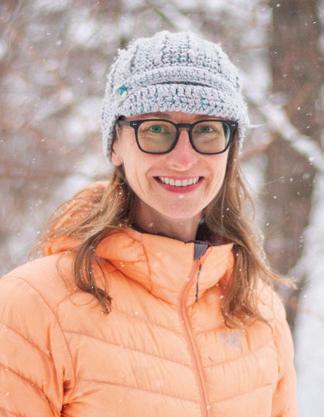
Photo by Will Draxler ’26.
Slabach has spent the last few years teaching and studying vertebrate ecology, culminating in a Schoodic Institute-funded study that investigated how recreational trail use affects mammal populations living on the mountain-tops of Acadia National Park. The project involved several current COA students and faculty, and Slabach plans to implement several aspects of that project into her teaching here.
She also emphasizes that although she’s the professor, she also holds a role as a learner. “My students are in the driver’s seat. They keep me on my toes, which I appreciate,” she laughs. “I really try to build in flexibility and leave room for, as I refer to them, tangents of learning.”
“College of the Atlantic is the place where, as a student, I fell in love with teaching and really decided that I wanted to pursue it as a career, professionally,” she says, remarking that stepping into the role of a faculty member at her alma mater still feels very strange and serendipitous.
“It wasn't something that I thought was in the cards or that I was really consciously shooting for,” she reflects. “It happened fairly naturally in a way that I don't think I've quite yet come to grips with. It's been truly wonderful to be back.”
Slabach holds a PhD in biology from the University of Kentucky and a Master of Science degree in biology from Tufts University. When she’s not leading class discussions on hagfish slime or guiding students through delicate intertidal ecosystems, she likes to hang out with her family, go for walks with her dogs, and bake pies and cakes. “I also like to make candy,” she says. “It’s nice to live in a colder place again—the caramel sets better.”
By Jeremy Powers ’24
MIGHT CONSIDER mud a bit of a nuisance— clinging to boots, dirtying cars, getting on clothing. Children might gleefully roll around in it, shape handcrafted pies for judgment on a baking competition, track it up and down stairs and over carpets. For marine ecologist Kara Gadeken, mud is so much more than its messy presence. For Gadeken, mud presents an ideal opportunity to learn about the past, understand the present, and plan for the future. She's looking forward to bringing students along for this exploration as she steps into the Emily and Mitchell Rales Chair in Ecology at College of the Atlantic.
“There's so much interesting science to be done in Maine. It's such a dynamic place and it's changing so quickly because of climate change. I’m after questions like, How much is there to know? and, How much do we need to know before things change? so we can adapt in time and help prevent some of the less desirable outcomes of that change from happening,” she said.
Her interest in all things marine ecology began as an accident, during the summer between her freshman and sophomore years of undergrad at William and Mary. “I started working in seagrass and I didn't even know what seagrass was. I was like, Sure, I'll do this thing for a summer, but going out into these shallow marine ecosystems and experiencing them and exploring them… it just blew my mind. I was hooked.”
should be the process of getting as far out of the way as possible of students learning what they need to learn. It should be about the facilitation of their development as scholars, as critical thinkers, as people, letting the roots of that process grow naturally.”
Disillusioned with the traditional, often clunky and bureaucratic structures of higher education, Gadeken was looking for something different. “There's a lot of inbuilt structures in academia that can really stifle creativity,” she said. On the cusp of leaving academia altogether, Gadeken said she found out about COA by chance. “I saw an ad come up for this small, interdisciplinary, community driven, and teaching focused college, and it was just hitting all the notes. I thought, They seem to be doing it the way that I think it should be done.”
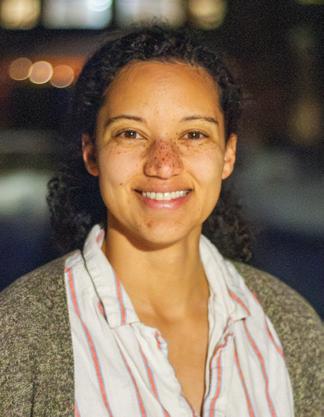
After falling in love with seagrass, Gadeken fell in love with teaching. “During my postdoc work at Stony Brook University, I realized that full-time research was not really where my interests or desires lay. I discovered that I really enjoyed teaching, and that I really only liked doing research when it was with students,” she said.
As a teacher, Gadeken finds that students learn best when they’re set loose.“My job is to remove barriers to students becoming their full selves. Teaching, at its best,
Gadeken, who holds a PhD in marine science from the University of South Alabama at the Dauphin Island Sea Lab, said that she has really enjoyed the tight-knit community feel on campus, and that the community emails that keep students, staff, and faculty in touch with each other have been really grounding. “It’s interesting to hear these little bits and pieces from people's lives and experiences here, as diverse as they are.”
When she’s not teaching or studying seagrass or sediments, Gadeken likes to swim. She hopes to get involved with the YMCA in Bar Harbor to offer swimming lessons and maybe even start a synchronized swim team. “I swim a lot. I was a synchronized swimmer for a very long time.” Chuckling, she added, “Now it's called artistic swimming, but I have opinions about the name change that we don't have to get into.”
Whether it’s in the YMCA pool or in a tidepool, Gadeken is eager to do her part in a place seeing such rapid ecological change. “That's part of what drew me here—and also there's a lot of mud up here, and I really like mud.”
By Jeremy Powers ’24
DUC HIEN NGUYEN has just bought themself a car. Having lived in cities most of their life, it’s the first car they’ve ever bought. They need it to get around Mount Desert Island and to College of the Atlantic, where, as the new Cody van Heerden Chair in Economics and Quantitative Social Sciences, they’ll spend the coming years teaching young human ecologists that economics is about more than dollars and cents.
“We need radical socio-economic change, and education is one of the most effective paths towards peaceful change,” Nguyen said. “The changes that we need should be informed by a new way of thinking that emphasizes not so much the individual quest for maximizing profit, but deals more with what we actually value as people, as community, as society.”
Nguyen’s interest in exploiting alternative methods of visualizing and studying economics blossomed after they graduated from the University of Toronto and landed a job as an economic consultant. It was then that Nguyen experienced the lack of nuance surrounding questions of privilege, gender, and power dynamics in mainstream economic thinking.
“Conventional economics tends to take for granted the distribution of power, the distribution of resources. It doesn’t ask dynamic questions. It assumes, for example, that some people are rich and some people are poor, but it doesn’t consider how that division between rich and poor came about in the first place,” they explained. “To me, it’s not interesting.”
leading the student to think a lot more about how we can change this interplay. We’ll start with foundational economic theories and concepts, but then we go further and look behind the scenes to see what’s there and what we can do about it.”
So far, Nguyen said, they’ve really enjoyed the class discussions they’ve been having as students work through the process of dissecting economic models. “Folks have appreciated the insights that economics theories and models can provide, while remaining clear-eyed about the models' limitations and potential for misuse,” they said.
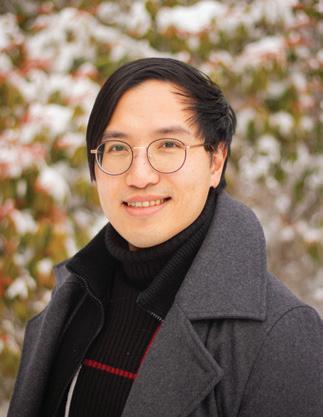
What does interest Nguyen is building a new generation of young economists who are conscious of these important ambiguities. “Political economy really focuses on the interplay between money and power. I focus on sort of
Nguyen’s next two classes are an introductory class on macroeconomics and a class titled Conversations with the Ghost of Marx, which will look at the global variants of the capitalistic economic system through a Marxian lens. For the spring, plans are still a bit loose, but they said that they’re interested in teaching a class on the economics of data and artificial intelligence.
“College of the Atlantic really embodies the kind of community that I value. We really truly care for each other; we do not value marketability and profitability so much that we are trampling upon the most magical people to make way for ourselves. That's not the ethos and the ethics of this community,” they said.
Nguyen holds a PhD in economics from the University of Massachusetts, Amherst, a master’s degree in economics from the University of Toronto, and a bachelor’s degree in economics from Trent University. In their free time, this economist likes to play RPG video games and listen to Dungeons and Dragons podcasts. “The sci fi, fantasy, fiction world is my escape,” they said.
By Biya Gondal ’28
WHAT BEGAN as a College of the Atlantic class project exploring the history of apples in Maine has evolved into groundbreaking research uncovering rare, centuriesold apple varieties. Working in collaboration with several partners, COA history professor Todd Little-Siebold and his COA Maine Apple Lab have embarked on a journey towards rediscovering the forgotten ancestors of American apples.
The discovery of a rare French apple in the nearby Penobscot River Valley is one of their most exciting fi nds. The apple, which may have been continuously propagated since the 1600s, is possibly among the oldest continuously grown apples in America, Little-Siebold says, and possibly one of the most signifi cant French ancestors of modern American apples.
Through DNA testing, which involves collecting leaf samples and comparing them against a vast international apple
database, the team was able to determine that the apple is a very old French variety that may have been planted by early French settlers in the region in the 17th century.
The discovery highlights how modern scientific advancements can illuminate the past, bridging centuries-old agricultural history with cutting-edge research.
“Without DNA testing, we would have never identifi ed this apple,” says Little-Siebold. “Normally, we rely on matching fruit to historical descriptions, but this particular apple would have been impossible to identify without the science behind it.”
The apple's survival tells a remarkable story of resilience. Along with others found through similar genetic detective work, Little-Siebold says, it highlights the importance of preserving genetic diversity in apple varieties, particularly in
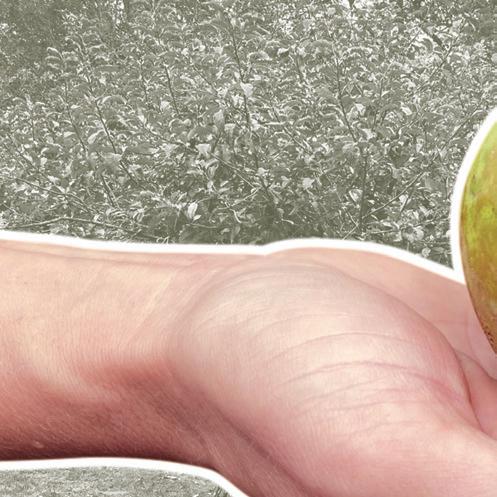
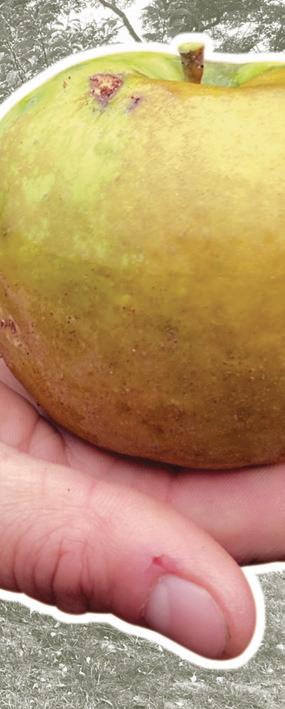

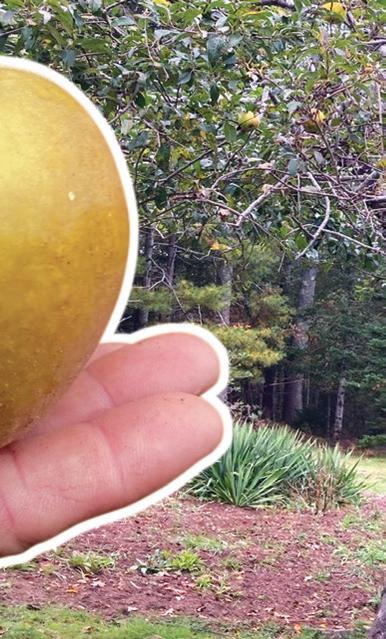
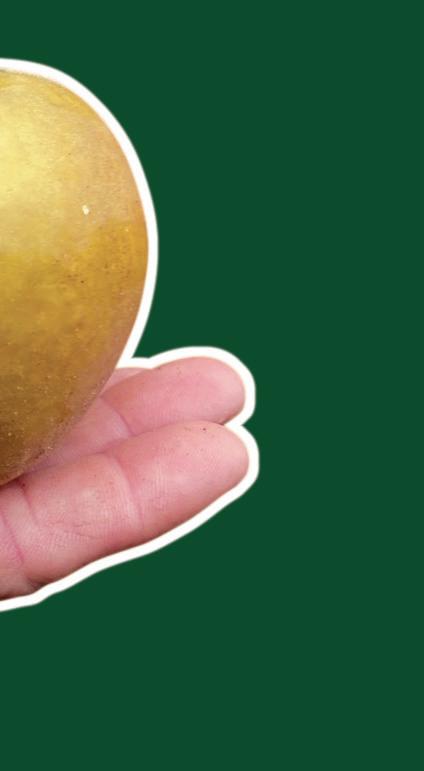



the face of climate change. In fact, this apple’s rare genetic lineage may hold crucial answers for adapting modern crops to future environmental challenges.
“Somebody’s kept it going. They passed it from generation to generation to generation over 400 years,” Little-Siebold says. “That tells you something about how they valued it.”
Further research will hopefully turn up other such apples in the area, which is one of the longest-settled regions of Downeast Maine, he says. Nearby Castine, historically called Pentagoet, was inhabited by French traders and farmers who lived alongside a Wabanaki community for well over 100 years before the English moved into the area around 1760.
In addition to uncovering these rare apples, Little-Siebold and his team work closely with the Maine Heritage Orchard at Maine Organic Farmers and Gardeners Association,
which serves as a preservation orchard for over 400 historically significant Maine apple varieties. This partnership between education, preservation, and genetic research is integral to maintaining the rich history of Maine’s orchards and educating future generations about the importance of preserving heritage crops, he says.
“We're really focused on the research and historical documentation… and they’re really focused on the preservation,” he says. “It’s the perfect complementary work.”
The discovery of these rare apples isn’t just a victory for history enthusiasts or orchardists—it’s a testament to the deep connection between food, culture, and the land.
As research continues, the COA team is on a quest to uncover more lost apple varieties, contributing to a better understanding of our agricultural roots and inspiring future efforts in crop preservation.

The College of the Atlantic Maine Apple Lab engages in historical research, uses genomics to build profiles of heirloom apples, and networks with preservationists around the country and the world.
The lab’s purpose is to contribute to the conservation of heritage apples by tracking down, documenting, and solving the mysteries around their origins. They are helping to reconstruct the history of apples in Maine and America generally to inform conservation strategies.
The lab’s work combines molecular techniques with traditional historical research and fieldwork to rescue and document apples that are the rarest of the rare from around the COA region.
The lab collaborates with the Maine Heritage Orchard to propagate and preserve the rarest and most unique apples from around the state, the Cameron Peace Lab at Washington State University Pullman, and the Historic Fruit Working Group of North America.
Photos by Todd Little-Siebold.
By Eloise Schultz ’16
Written for the inauguration of COA President Sylvia Torti and read by the author at the ceremony on October 20, 2024
When the priests sold this property for a dollar to the college, do you think they knew what would come to be here?
One might think that they lived in unobtrusive ways, in days of solitude and silent prayer, but that’s the trick of the pastoral to soften the audacity of history. Come upstairs with me
to the library window, I’ll show you where their giant neon cross once stood, a beacon for boats crossing Frenchman Bay.
In its place, the first hopeful students built a windmill, which ignited years later from the friction of its own movement and left a flat ring of stones which now faces, across the bay, an array of modern turbines, turning steadily.
Ours is the story of beautiful failures and our faith in what follows. Every ruin beneath your feet stings of those who arrived and laments those who were forced to leave; those who cut the paths and laid the tracks, paved the roads and stacked the stones that lined the sidewalk on your first walk to school, as someone took your hand and held hope and grief in the other.
The earth now is as noisy as it’s ever been. Never has it been harder to hear the calls of birds or the commotion of insects, the ocean’s chatter drowned out by engines of trade, the flow of water long since turned to the flow of money and endless interest.
But these ways of living are not inevitable. Beneath those mountains are even older mountains. Behind this sentence is a door we haven’t seen before.
Three miles from here, there’s a path in the forest leading to the crumbled stones of an old estate atop granite scraped by glaciers and glazed by fire.
A porcupine lives there, and a fox, regarding each other from mossy dens on either side of the collapsed road. I’ll take you there, after it rains, to smell the sweet
firs and see the few chanterelles emerging steadily from the litter of oak leaves, to climb carefully down the steps
and find the moldy old boot perched atop a stump in an empty grove, a stage in the forest’s theatre.
There’s a common ground for us here beyond priests and robber barons, a place where actors and audience
change places: in the classroom, the field station, the auditorium. Here, generosity is our greatest
asset, and our inheritance not something owned but shared in how we tend and attend each other.
Where a child brings a box to the wildlife vet and removes the lid to show a monarch butterfly
whose fragile wings are torn. So small it is, beside the cages of bobcats and eagles; small like that child’s hands
in one moment in time, in one small place. Such a small thing couldn’t make a difference. Something so small is all that makes a difference.
By Rob Levin
AN ENERGETIC and heartful ceremony marked the inauguration of Sylvia Torti as the eighth president of College of the Atlantic. Hundreds gathered on the North Lawn October 20, 2024 to cheer Torti on as she laid out her vision of COA as the future of education. The day included keynote speeches from Deep Springs College President Emeritus and University of Utah Professor Emeritus L. Jackson Newell and University of Utah Inaugural Dean of the School for Cultural & Social Transformation Kathryn Bond Stockton, as well as an original poem written for the occasion and read by poet Eloise Schultz ’16.
“Sylvia Torti is an educator, a nurturer, instinctively advancing everyone around her,” Newell said. “Today, we celebrate the appointment of a new leader, someone who lives the narrative, breathes the spirit of art and science, and knows the competing demands of both discipline and freedom. A perfect match.”
Torti, an accomplished writer, ecologist, and innovative academic leader, was invested by COA Board of Trustees Co-Vice Chairs Marthann Samek and Hank Schmelzer, with Schmelzer placing a medallion with the COA seal around Torti’s neck. The seal includes three runes representing humans, earth, and water.
“COA—with our tradition of being a benchmark for change and addressing the challenges facing current and future generations—represents the future of education,” Torti said. “Here at COA, we fulfill our yearning to connect with one another and with the marvelously diverse more-than-human world. Ultimately, it is our sharp and adaptable, ecological minds, shaped by this connected education, that will allow us to discover new ways to flourish collectively.”
Also involved in the ceremony were COA Provost Ken Hill, Associate Dean of Faculty Kourtney Collum, trustee and member of the presidential search committee Cynthia Baker, and Board of Trustees Chair Beth Gardiner.
Torti previously served as dean of the Honors College at University of Utah, where she initiated and implemented a vision for globally oriented, integrated curricula in ecology, health, and human rights. Before that, she was the director of the university's remote, 400-acre Bonderman Field Station.
“Today marks a beginning, but in reality, it’s just a continuum of everything that COA stands for,” Gardiner said. “In a complicated and often confusing world, the values of COA are more important than ever, and we feel extremely fortunate that we found, in our new president, someone who feels our values as strongly and passionately as Sylvia does.”

Fall term All College Meeting moderator Keenan
Ovrebo-Welker ’27 provided opening remarks, followed by Schultz’s reading of One Small Place
Torti has published multiple scientific research papers, research and opinion pieces on methods of pedagogy, multiple short stories and essays, and two novels: Cages (Schaffner Press, 2017), winner of the Nicholas Schaffner Award for Music in Literature for a novel, and The Scorpion’s Tail ( Curbstone Press, 2005), winner of the Miguel Mármol Award for a novel.
Past COA presidents in attendance included Steve Katona, Darron Collins ’92, and Andrew Griffiths. The audience included dozens of Torti’s friends and family members, along with trustees, alumni, students, staff, and faculty. Attendees enjoyed a reception in the Newlin Gardens following the ceremony.
Earlier in October, a southern Magnolia tree was planted on the seaside lawn of The Turrets, COA’s iconic, castlelike administrative building, in honor of Torti’s inauguration. COA Head Gardener Barbara Meyers ’89 said the species selection was a daring but well-reasoned experiment as the college anticipates climate change on campus.
Torti, who is from a bicultural Latinx background, has lived and worked globally. She holds a PhD from the University of Utah School of Biological Sciences and a BA from Earlham College. She began her tenure at COA on July 1, 2024.
Torti is joined by her partner, Scott Woolsey, a blind triathlete who has achieved significant milestones in his athletic career. He secured the title of Ironman 70.3 World Champion in 2021 and went on to become the Ironman 140.6 World Champion in 2022. For the past several years, he has been teaching first-year colloquia and serving on the leadership team to design integrative first-year experiences at the University of Utah. He is a motivational speaker and a farm-to-table food expert.
By Kiera O’Brien ’18
W HEN FRIENDS Matt McInnis, Jon Carver, and Eliah Thanhauser, all class of ’09, hatched a plan to start a mushroom farm in 2014, they weren’t sure where the idea would lead. “We had all taken different paths after COA,” says McInnis. “Eliah had been managing organic farms, I was freelancing as a photojournalist, and Jon completed a master's in mycology. But eventually we each found our way back to Maine.”
Putting their heads together over a few glasses of wine at a small Portland cafe, the friends considered their overlapping interests and divergent capabilities.
“We figured out which pieces of our very different skill sets could work synergistically together,” explains McInnis. They found common ground in fungi.
“We rented the cheapest commercial space we could find on Craigslist—it was basically a shack, it didn’t have a sink, hardly had electricity—and we turned it into a little mushroom growing operation where we grew edible oyster mushrooms in five-gallon buckets,” continues McInnis. “We sold the oyster mushrooms to local Portland restaurants, and that’s how we started.” They named their nascent operation North Spore.
For Carver, co-founding a business with McInnis and Thanhauser was driven by a collaborative impulse rather than entrepreneurial ambitions. “We stumbled into it. More than anything,
I think we wanted to stay connected and create something exciting in the world together,” he says. Thanhauser agrees: “We wanted to build a community like the one we had all found at COA, to continue learning with and from each other.”
“At the time, I figured North Spore was a cool summer project, or maybe a yearlong thing,” McInnis shares with a laugh. “I didn’t think it was a 10-year plan!” A decade later, North Spore has become one of the USA’s largest suppliers of mushroom-growing equipment and is an industry leader in the field of mushroom cultivation and research. With a team of more than 70 employees and a mission to “make the world of mushroom cultivation accessible to all,” North Spore operates on a vertically-integrated model, meaning that all of their mushroom spawn—the equivalent of seed for mushroom growers—is cultivated inhouse. While the vertically-integrated approach has been part of their model since day one, the five-gallon buckets are long gone. Thanhauser, who oversaw the construction efforts, is especially proud to share that the company now operates a state-of-theart mycology laboratory, housed within North Spore’s very own 25,000-squarefoot production and fulfillment facility in Portland.
The co-founders’ shared commitment to collaboration and education has
proven integral to the company’s success. “Since the beginning, education has been a hallmark of what we do at North Spore,” says Carver.
“After completing my master’s in mycology, I realized that I could spend many more years in school to become an expert within one very specific aspect of the field. But that felt too slow, too narrow. There’s so much to explore in the field of mycology—which is still very much in its infancy in many ways. I wanted to create something that facilitated a broader approach to research.”
This ethos, cultivated in all three co-founders during their time at COA, fuels North Spore’s innovative mission to meld business, education, and community-driven research.
“Everything we do at North Spore is about forging a path for people to engage with mushrooms,” elaborates McInnis, now the company’s creative director. Not only does North Spore create a broad swath of digital educational content aimed at empowering people to grow their own edible and medicinal mushrooms, but it also facilitates a research partnership program, led by Carver, who serves as the company’s lead mycologist. The program provides resources and “materials to aspiring researchers, gardeners, farmers, and individuals with mycological inquiries.” In exchange, says Carver, “North Spore shares our research partners' discoveries with our broader
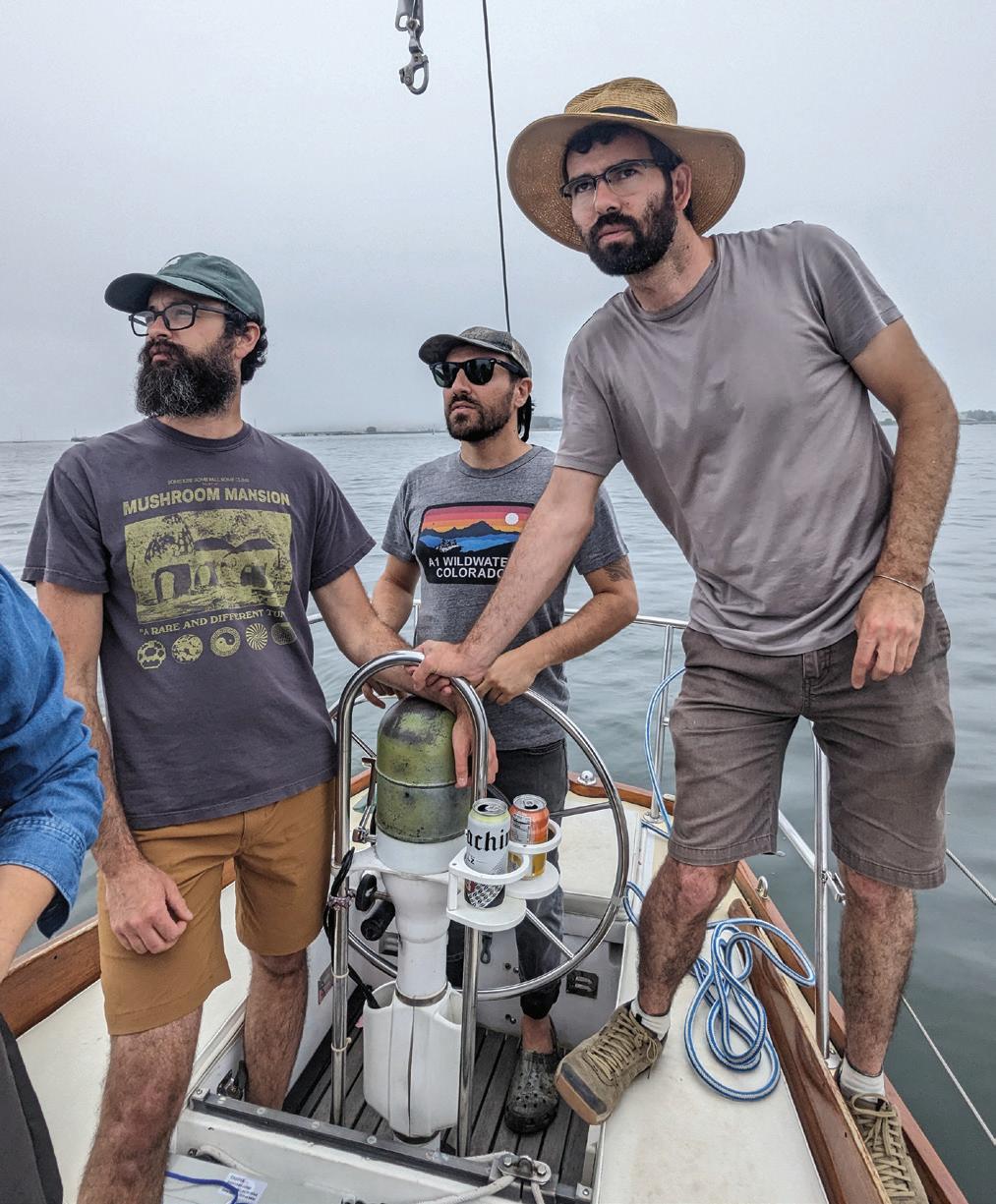
community, all in the service of expanding the collective knowledge base around mushrooms.”
Reflecting on what makes their decade-long collaboration tick, Thanhauser, now company CEO, points to a deep willingness to “change
one another’s minds, to disagree with one another, and then to find a solution that we couldn’t have figured out alone.” Carver concurs: “I can't imagine ever getting to this point without it being the three of us.” McInnis picks up the thread. “We’ve learned how to come to consensus
through conversations that are never dogmatic but are all about valuing other perspectives.” After a pause he concludes: “It’s our interpretation of human ecology in practice. And that extends beyond the three of us. It’s reflected in everything North Spore has accomplished.”

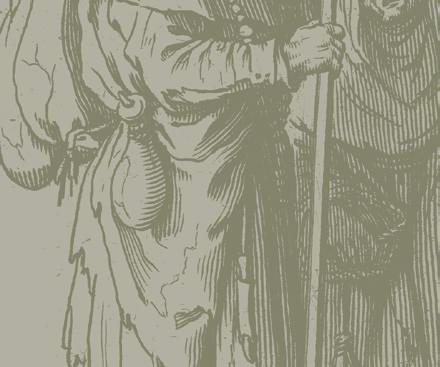


In fall 2024, COA offered a travel course to the Meseta in Spain. Students spent the entire term traveling the Camino Frances; a route traveled for centuries by pilgrims looking for answers, or, perhaps, pilgrims looking for different questions.




College education too often simply relies on secondary sources and the academic written word as the foundation for coursework. This course answered the question of what happens when students are immersed deeply in a new culture, a new place, a different language. The journey motif is often the structure of epic literature, but what if that epic journey is actual and what if the hero of that story is you?
Because the context of The Camino class was by its nature completely novel, our focus was on the internal change, the process, the raw physicality, the deep humanity of the journey.
At its core, the idea of this effort is human ecology in action. We stripped away many of the creature comforts we have always enjoyed and carried our possessions on our back. We were alone with our thoughts, in a small group sharing experiences and developing skills that brought the mental, the physical, and the academic to life.
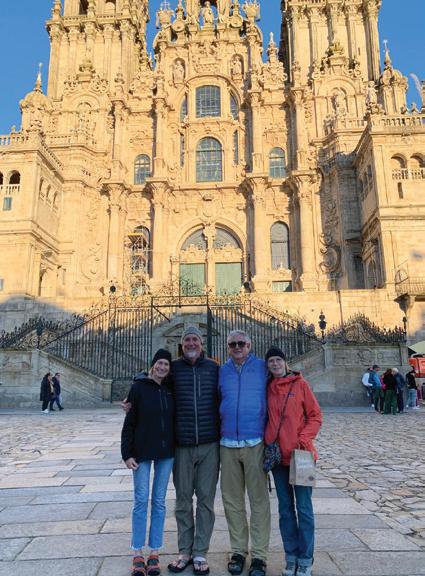
In a world of endless distractions where we juggle work, school, friends, family, and a steady stream of digital distractions, it is not easy to get time to reflect. The Camino offered a chance for 12 students to be with themselves and others as they walked the roughly 500-miles from St. Jean Pied-du-Port, France to Santiago de Compostela, Spain along the medieval pilgrimage route of the Camino Frances.
For over 40 days students walked 30,000+ steps a day, ate, rested, and sat with their thoughts as they moved from town to town alongside people from around the world on a similar journey. Students participated in the Camino Frances’ international community where people are open and willing to share life stories with fellow travelers. With origins as a pilgrimage route, walkers are often amid personal or professional transitions or working through tough issues and easily speak from their hearts and dive deep. This combination of openness and introspection meant that when students met other pilgrims, be it for a moment, a few hours, or over days, exchanges provided new perspectives and insights. A quick interaction could, at times, be the fodder for days of reflection.
Every day brought new experiences, discomfort, and challenges that built character and resilience as the weeks passed. Students embraced these opportunities.
The route was roughly divided into three sections delineating the journey: Body, Mind, and Resolution. Leaving France and adjusting to the daily routine, students and faculty felt the impact on their knees, ankles, and immune systems as they crossed mountain ranges carrying packs, sharing meals, and listening to ample snoring in communal albergues (hostels). The wide-open plains of the Meseta following Roman trade routes were mentally challenging as students walked through record-setting downpours that made normally hot and sunny Spain feel more like damp and cold Scotland. Throughout the trip, assignments facilitated exploration of their environs and themselves.
Students dove into the history and culture of the Camino with videos and presentations capturing their initial impressions of the journey. They also completed research projects ranging from botanical representations in art and soundscapes to reflections on grief and food systems.
As they walked, they completed guided mindfulness reflections as part of three overarching questions about their Camino journey and life:
What burdens are you carrying that you should put down?
What are you carrying that you wish to keep?
What have you seen that you wish to pick up?
The course extends well beyond the time on the Camino. For many, arriving in Santiago and returning to their lives marked the real beginning of the journey.


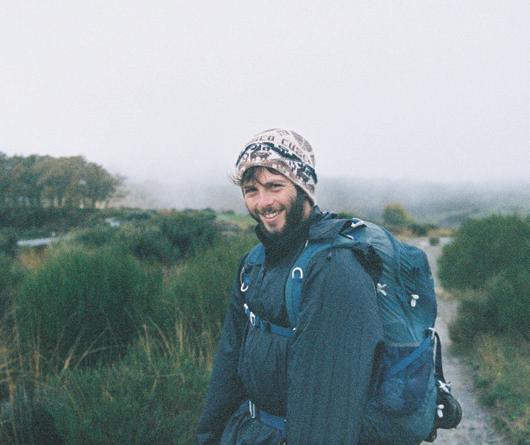


Caminante, son tus huellas el camino y nada más; Caminante, no hay camino, se hace camino al andar.
Al andar se hace el camino, y al volver la vista atrás se ve la senda que nunca se ha de volver a pisar.
Caminante, no hay camino sino estelas en la mar.
—Antonio Machado
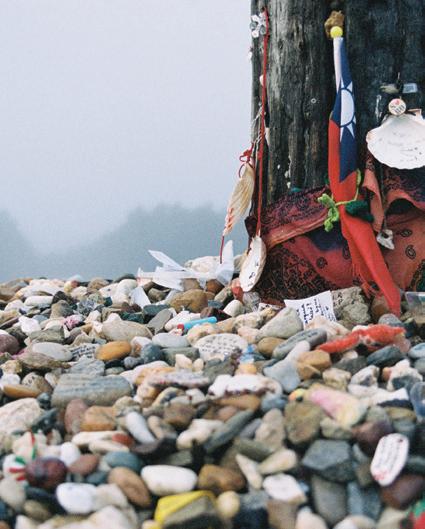
Left, top to bottom: A fellow traveler on the Camino; enjoying fresh tortilla and wine in an albergue—COA students and other travelers from Germany, Latvia, Spain, England, and Denmark; strange sculptures outside of Villafranca del Bierzo. Above: Detail of the huge mound of stones and other objects surrounding The Cruz de Ferro. It is a tradition to carry a stone from your place of origin and leave it at the cross. Photos by Lila Foster ’26.


Walker, your footstaeps are the road, and nothing more. Walker, there is no road, the road is made by walking. Walking you make the road, and turning to look behind you see the path you never again will step upon. Walker, there is no road, only foam trails on the sea. (translation Willis Barnstone)



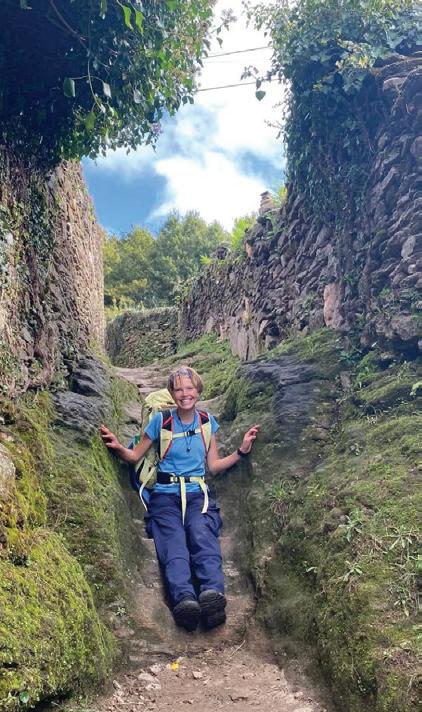
THE SUN ROSE in shades of pink along the red, rocky outcrops. Quickly enough, all turned blue. Hundreds of shades and hues of blue along the distant mountains and cloud-streaked sky. Golden thistle and a plum thistle, devil’s snare, chard. Abundant vineyards and the rare, special fig tree. Quinces as we entered the town.
—Skylar Bodeo-Lomicky ’26 (from a journal entry 9/29/24)





I’M SUPPOSED TO BE thinking about gratitude. I think gratefulness has been the biggest theme on the Camino for me so far. When I got sick in Logroño, I was overwhelmed by the kindness of my new friends who took such loving care of me, even though we hardly knew each other.
When I started walking again, I was so grateful for the simple act of walking, for being able to take part in the Camino again. Those first few days passed easily, and I had such a full heart for all my new friends. As the walking got harder, my gratitude for my legs grew. I look down at them while walking and just feel so much amazement for how far they have carried me.
I am grateful for how much I have felt during this short time: so much love for people I hardly know, so much sadness in saying goodbye. Last night, we drank wine and played guitar into the night at the albergue. All of us singing joyously and drunkenly. It was so silly and loud and beautiful.
—Lila
Foster ’26 (from a journal entry 10/9/24)




Join us on campus this August for an internationally themed Alumni Weekend. We are celebrating the 30th anniversary of our Yucatán Program and the 25th anniversary of the Davis United World College Scholars! Reunite with your friends to celebrate these significant COA programs.

Bring your families, stay in the dorms, eat in TAB, and join fellow alums for activities including receptions, trips on M/V Osprey, visits to COA Beech Hill and Peggy Rockefeller
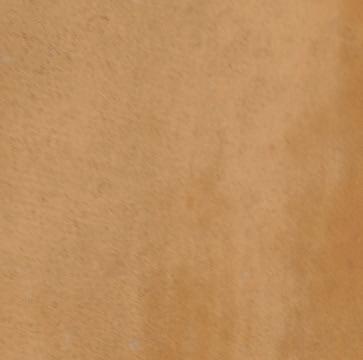

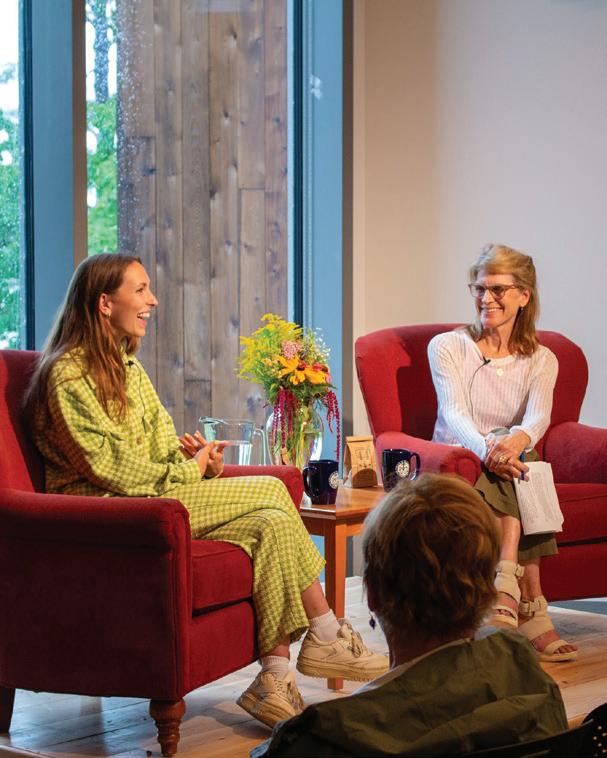

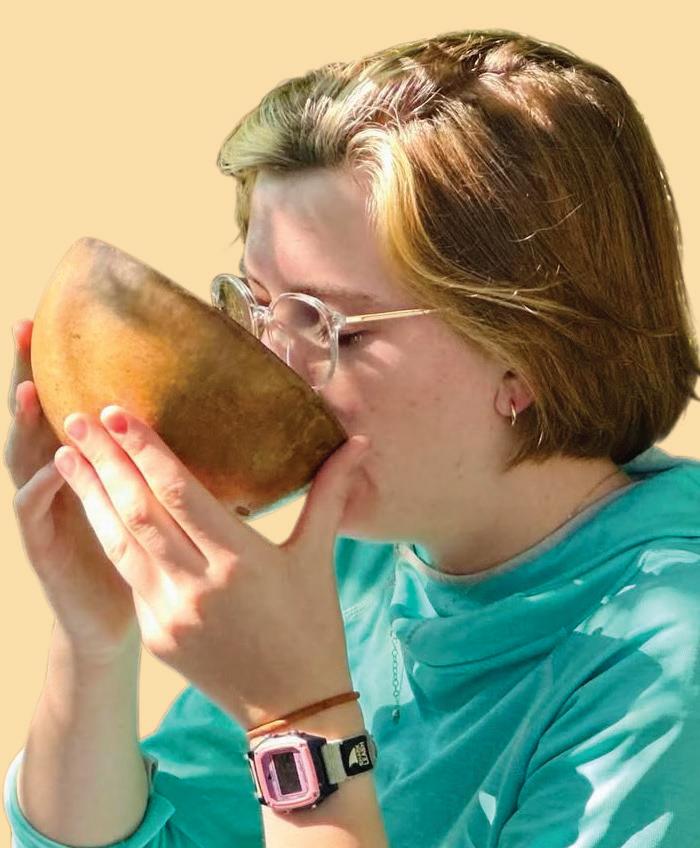
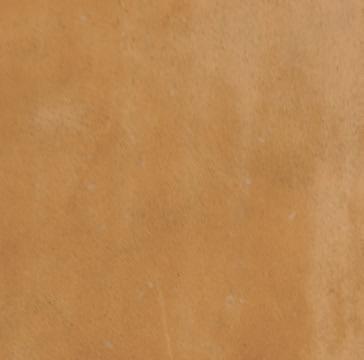

conversations with special guests that engage the audience in thought-provoking discussions. Past speakers include authors Christina Baker Kline, Kim Stanley Robinson, Margot Lee Shetterly, historian David Hacket Fischer, CEO of The Atlantic Nick Thompson, Chase Morrill ’00 of Maine Cabin Masters, and many others.
The Northern Lights Society was established to recognize and thank COA friends who have made planned gifts to the college. These gifts include bequests, charitable gift annuities, and gifts of life insurance. Members are invited to our annual summer gathering (see last summer's gathering at Beech Hill Farm on page 80). If you have made a planned gift to COA, please let us know so we can add you to the invitation list.
To learn more about making a planned gift to COA, please contact Dean of Institutional Advancement Shawn Keeley ’00 at 207-801-5620.

ASA KID from Houston, Texas, arriving at COA in the dead of winter was startling, to say the least. Now that I do winter dips in the ocean next to our school, I’d say it’s actually not too bad! However, I’d still recommend swimming with a buddy just in case. Another recommendation from experience is not to schedule your classes on the same days (especially with work-study and more jobs) like I did this term. And as I reflect, there might have been more than just a few small victories since I've gotten here. Coming to COA has pushed me beyond what I once considered my limits. Each time that happens, I feel like I've been reforged for the better. Without really realizing it, I have grown as a student, a friend, and a person.
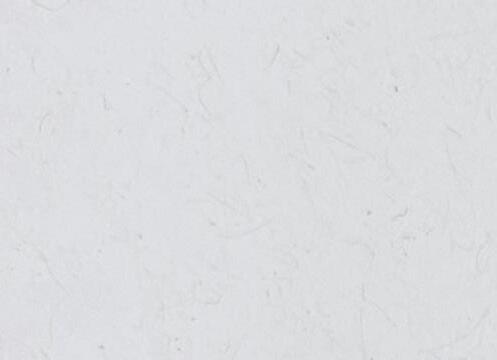






Introduction to the Legal Process with Ken Cline. Phew. I don't know when I started to want to be a lawyer. I knew that on TV, the law is used for its dramatic potential and actual law can be more than soul-draining; still, I saw enough appeal to strap myself to the rails. Kidding. I had a more civic background in high school and made the pivot to science in college. I realized that my biology studies were interesting, but I still had a humanities itch from my previous work. Those topics aren't exclusive per se, but I wanted to more explicitly combine them. I thought, Maybe become a patent attorney! When Ken's class came around in the spring, I knew I had to sign up and see if I could really do this. And the final moot court really sold it to me; dry readings and writings aside, having to hash your points out to judges was really fun. As of now, I'm getting more into environmental law and it's kind of kicking my butt. Hopefully, everything will work out!

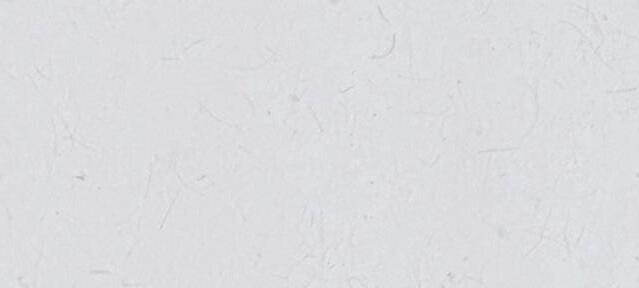




DURING A BUSY summer, I was balancing a 50-55 hour work week between the MDI Biological Laboratory, Take-A-Break, and The Burning Tree restaurant. My decision-making abilities were, understandably, stretched thin. I was moving into my summer housing and found a large grassy rug in the COA free box. I loved the rug, so I set down my uncovered plate of meatball subs on a bench outside, and carried the rug to my room. I returned to my plate to fi nd it absolutely demolished. It was the worst crime scene I’ve ever seen. The plate was face down and the buns and roasted veggies strewn erratically on the ground. I wanted to call 911. Upon further investigation, the trail of food innards led to a tree... Perhaps this sandwich thief made an arboreal getaway. But who? A squirrel, that's who! I discovered squirrels ate more than just acorns that day. Challenge your beliefs, hope for the best, and prepare for the worst.
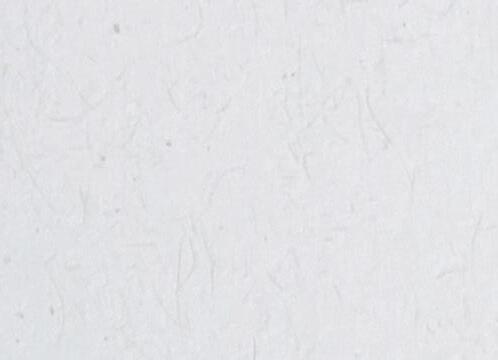
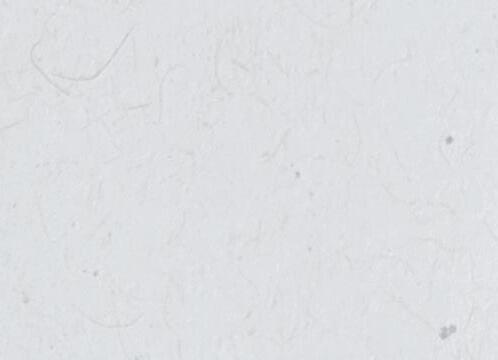


Introduction to Songwriting was my first break from scienceheavy trimesters. Instead of three-hour labs for each class a week, I was writing original song lyrics and belting them out in a studio. I loved the euphoric feeling flooding my lungs after singing for hours in the high school choir. While I had covered pre-existing songs, I’d never composed an original piece and performed it. My favorite piece I wrote would have to be a song called Southern Spice. I created it from the perspective of a person from a politically tense southern state that has its own intrinsic beauty and culture. Even though my hands shook and dread pooled at the bottom of my stomach, I performed it. And I was ultimately relieved since it was well received. Some people even complimented me the next day (*squeal*). This class gave me a chance to revisit a passion that I left on the back burner for way too long. Caroline Cotter really pushed us to validate our inner creativity and destroy the doubtful critic in our minds; a lesson that reaches far into other parts of my life.
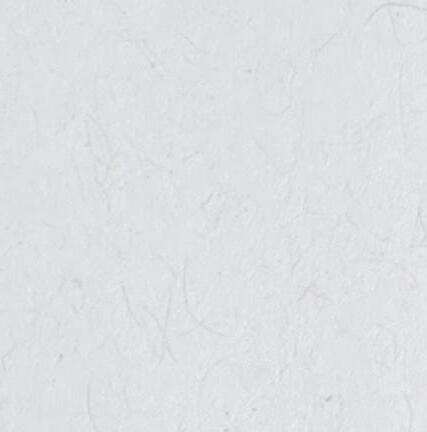

Jay
Kerri




I started Personal Finance and Impact Investing with Jay Friedlander because I thought that some financial literacy couldn't hurt. I'd say some of the biggest takeaways are compound interest and keeping records. I was surprised that this class wasn't just a numbers game. The number of readings that talked about the economy in relation to society, politics, and environment was impressive. Very human ecology. It was also interesting to see how money could be contextualized and used to support personal missions. I don't know if I'd ever join the FIRE ["Financial Independence, Retire Early"] movement but if I ever get rich enough to have an investment fund, it's reassuring to know that there are managers that make it a priority to invest in sustainable companies. Now to find an angel investor for my college tuition.

By Kiera O’Brien ’18
ASAN EMERGING WRITER still finding my creative footing in the world, I consider myself exceedingly lucky to share at least three uncommon affinities with writer Jenny George ’02. We are both poets who came to our craft by way of human ecology; we both now call the high desert foothills of Santa Fe, New Mexico home; and we both spent four years soaking up words and ideas—about literature, gardening, the world that is and could be— advisees of COA Lisa Stewart Chair in Literature and Women’s Studies Karen Waldron during our separate stints at COA, more than a decade apart.
George’s stunning debut collection, The Dream of Reason (Copper Canyon Press), was published in 2018, the same year that I received my degree from COA. I read it with a mingled sense of awe—at its artfulness, humor, and precision—and gratitude for its sheer existence. I didn’t yet know George personally, but reading her poems I felt less alone, bolstered by the evidence that someone else had so eloquently set out to be a working poet and a degree-holding human ecologist. It’s not as common an undertaking as perhaps it should be.
In the conversation that follows, George reflects on what it means to be a poet trained in human ecology, the ethical imperative of remaining “tender and permeable and aware” in the midst of a world that increasingly compels us to be otherwise, and her remarkable new book, After Image, published by Copper Canyon Press in 2024.
How did you find your way to COA, and to poetry?
I thought I wanted to be a marine biologist. But then it turned out I get sick on boats! Also, I thought I wanted to study biology because I was interested in how life works, in the deep nature of our world. At 18 years old, when I arrived at COA, I had only this one idea of how to take up that inquiry: I’ll be a scientist, and I’ll look really closely at the world, at animals, and plants, and ecosystems, and so on, and I will find answers. Then I did a summer internship where I spent many hours tucked up inside a tiny bird blind on stilts, a few feet from the ocean, and I was meant to be counting birds,
acquiring data for a research project. But I spent most of those hours daydreaming and writing poems in my field notebook. My actual allegiance to the hard data was tangential to say the least! In the end I was most interested in the questions themselves, and in the experience of asking. So I switched my academic focus to literature and poetry writing and philosophy.
How did your time at COA shape or inform your writing life? What does it mean to you to be a poet trained in human ecology?
Human ecology is the best training I can imagine for being a poet! Or maybe what I mean is… poetry is the best training for being a human ecologist? Because what poets and human ecologists both know is that there is a meaningful relationship between the individual and the context, between the subject and the environment and the moment. Both poetry and human ecology understand that everything is situated, that everything real must experience the constraints of place and time and the entanglements of relationship. I try to write poems that honor and evoke the realness of things, through language.

What do you still carry with you, from your time at COA?
Something like: Each little thing matters. An understanding—although it’s not purely intellectual, it’s more of a persistent hunch— that everything is stitched to everything else. Interpersonally, ecologically, spiritually, systemically… it’s all reciprocally connected. I carry that from my ecology and biology classes, but also from the principles that pervade life and learning at COA. How lucky are we to come out of an institution and a community like this—that has such an ethic of caring?
Writing, and perhaps poetry especially, are often framed as solitary art forms. Does this hold true for your practice? How does reciprocity feed and enliven your poetics, if at all?
Reciprocity is fundamental to my practice, absolutely. It’s true I am usually physically alone when I’m working, when I’m actually writing things down in the particular way we call poetry. But I write for real others. I write towards the people on the reading and listening end of the literary encounter. The practice would have no meaning without them.
You know how they say a good relationship is 50/50, like with a friend or partner, when it comes to sharing labor or space? For me, the ideal relationship of poet to reader is 100/100. Meaning I try to be fully there when I’m writing, 100% present on the page and in service to the endeavor. And I hope the reader can be fully there, too, in the encounter with the poem. That is to say, I hope my poem invites and earns that depth of engagement with others. If it’s a good poem, then I think it can.
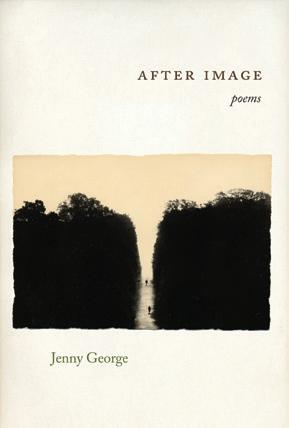
Tell me about your new book, After Image. What central questions animate this collection of poems?
A few years ago a very significant thing happened in my world, which was that my partner of many years died. That experience was— whatever else it was— incredibly mysterious, upending, radical, and baffling. It left me with big questions: Who does death ask us to be? What could it look like to be totally uninsulated from knowing about mortality? What are the limits of transformation? These preoccupations led to the poems in the book.
As much as it is about the irrevocable absence of a loved one, this collection is crowded with nonhuman presences: from bees, to snow and wind, flowers, the seasons, an orchard, a garden. How did these particular presences come to populate this book?
The short answer is that those beings were actually there when I was working on this book… the bees visiting my garden, and the fruit trees coming into bloom, and so on. The morethan-human world is always present, no matter where we are or what we’re paying attention to. And also because it’s hard to show loss in a poem. I hoped that by describing the presences around the edge of it, the feeling of absence would be more palpable.
Nature abounds in your writing, but it is a proximate nature, not quite pastoral but not romantically wild either. There’s intense intimacy in the way you write about the natural world. I keep returning to the line in Mushroom Season: “Everything has a voice, / even if low, diffuse—or / outside human hearing.” Does poetry allow for a different kind of hearing, an orientation towards voices other than our own?
There seem to be many forces these days attempting to deaden our senses. It’s one of the projects of capitalism, of empire—to numb us and de-sensualize us, so we are better consumers and more obedient subjects. In contrast, the project of poetry is to wake up our senses. To make us tender and permeable and aware. We can use poetry—both the writing and reading of it—to keep our senses tuned. Which of course is also a political practice; a person with all her senses open to the world is less likely to stand for its ruin.
There is so much language these days surrounding us and numbing us with endless blah-blah-blah. On social media, in advertising, in mainstream politics, and so on. Mechanistic, transactional language. If the blah-blah-blah is like a veil that keeps us from aliveness, then poetry is a rip in the veil.
Tell me about the title of the collection: After Image. How did you arrive there?
Well, an afterimage is a phenomenon from optics or photography where an image lingers even after the stimulus is gone. It seemed like a good metaphor for the impact of certain kinds of extreme human circumstance, when particular images or events remain in present tense, with a kind of hyper-clarity. When it came to the experience I had of intimate loss, I tried to capture what was not just the retinal afterimage, but the imaginal one.
JENNY GEORGE ’02 is the author of The Dream of Reason and After Image, both from Copper Canyon Press, as well as the chapbook, * (Bull City Press). She has received support from the Bread Loaf Writers’ Conference, the Iowa Writers’ Workshop, Lannan Foundation, MacDowell, and Yaddo. Her poems have appeared in Kenyon Review, The New York Times, Ploughshares, Poetry, and elsewhere. She lives in Santa Fe, New Mexico, where she works in social justice philanthropy.
KIERA O’BRIEN ’18 is a writer and artist based in Santa Fe, New Mexico. A graduate of both UWC Atlantic College and College of the Atlantic, she holds an MFA in poetry from the University of Pittsburgh. Her writing has appeared most recently in Denver Quarterly, Tupelo Quarterly, and New Delta Review. She is a proud alum of the COA Bateau Press editorial crew and now works as education director for Radius Books.




Ima Plume (voiceover): There were things I could draw pictures of, and there were things that couldn't be drawn. More and more I was attracted to the second category. There were things I wanted to describe, but I didn't know how. There were things that I wanted to show but there was no way to show them.


Radio interviewer: Welcome to the Shifting Science of Existence Program. This evening we are very pleased to present another in our series, “The Disheveled Mind.” I am very happy to speak today to Dr. Sheri Myes, our guest for this evening. She is a medical doctor with a degree in neuroscience from the University of Moravia and she is part of a private think tank on consciousness. What has your recent research led you to?
Dr. Sheri Myes: Our paradigm for consciousness is reductionistic. We believe what our five senses tell us, but there are very many other levels of perception that are beyond our innate sensory abilities. I have compelling evidence that we can go beyond the “now” we know. And, I am on the brink of developing a technique of expanding our perceptions and consciousness.
Radio interviewer: Can you talk about your studies and methodologies?
Dr. Sheri Myes: Well, I have not gotten much support for my work from the mainstream scientific community, so I have not been able to secure funding or permits for my work. I have been working at the margins, and using myself as a research subject.
Radio interviewer: What kind of experiments have you been performing on yourself?
Dr. Sheri Myes: They involve transferring to myself the neural pathways of insects, bats, and other creatures whose senses are more extended than our own. I am also working on grafting sense organs to activate the limbic system. My work is revolutionary.

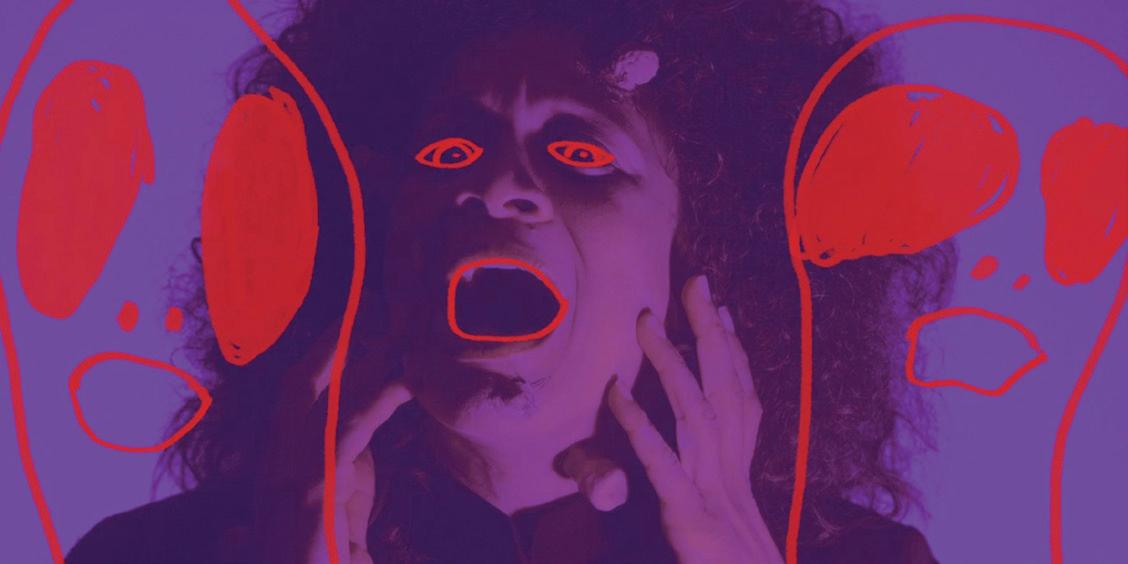
FOR ANDREWS, Mircea Eliade’s Shamanism was crucial in the film’s conception and in bringing us closer to a sense of emotional truth. Surveying shamanic initiation rituals the world over, Eliade identified several of its aspects common from one culture to the next: sickness and delirium; symbolic death of the neophyte; ritual dismemberment of the body; renewal of the organs; resurrection. Within these recurring threads, the filmmaker recognized uncanny parallels to her own encounter with death, as well as an imaginative framework for reconsidering that experience through the medium of film.
On a Phantom Limb hovers in an indeterminate zone, less a place than a state of consciousness. The avian imagery seen throughout is part of this—even more than in her previous films—where birds are quite prominent. In shamanic lore, birds often act as gobetweens moving from Earth to heavens to underworld; the film itself functions in much the same manner.
—Jim Supanick, from “Contemplating One’s Own Skeleton”

The Dreamless Sleep is a marvelous exploration of the possibilities of spiritual transformation. Sections of the film are interrupted by quotations of the five characteristics of St. John of the Cross’ “solitary bird,” the one that flies to the highest point, sings softly and has no color of its own. The flight of the bird represents the mystical ascent. This suggestion of possible heights is juxtaposed to the story of Elsa Bosselman, who drew pictures of deep sea creatures never before seen merely from phone descriptions given to her by William Bebee while in his Bathysphere 3,000 feet below the surface of the ocean. The theme is further played out by a paper puppet who enacts the imaginary life of Seint Cristyn the Mervelous (Saint Cristyn the Marvelous). The proper ambiguity is created about the meaning and possibility of this transformation.
—John Visvader (COA professor emeritus), from “Ima Plume Trilogy”


Though the protagonists in Andrews’ works form a continuing sequence of misfits, outcasts, mutants, and mavericks, they are always content to be as they are and manifest a sense of empowerment that seems to increase in each new film Andrews creates.
Although Myes is charged by the authorities with “inappropriate expression” and “interfering with the order of nature,” she has the confidence—paired with clarity of vision— to continue her experiments in hybridizing her own consciousness with the perceptive organs of a range of insects, spiders, and megafauna.
—Colin Capers ’95, MPhil ’09 from “Nancy Andrews’ Behind the Eyes are the Ears: An Appreciation”


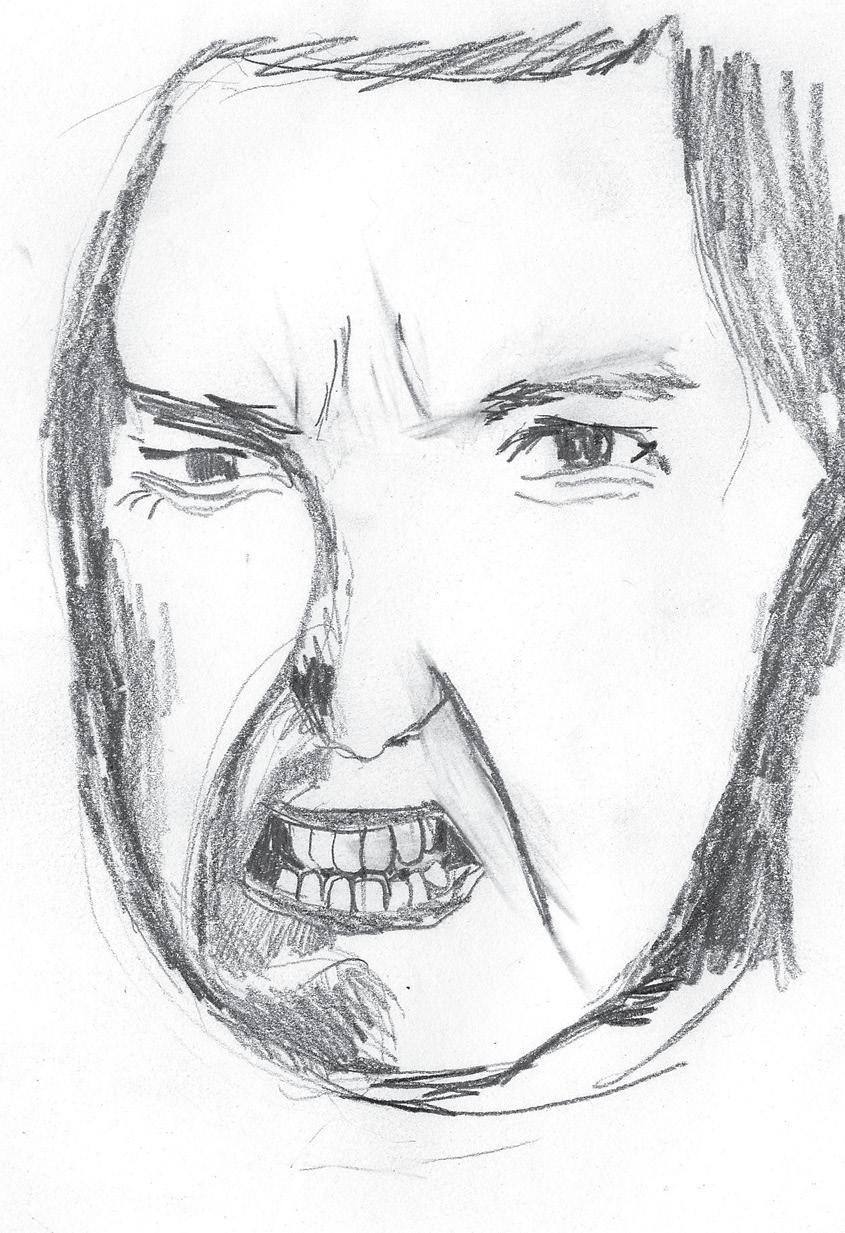
When I watch Nancy Andrews’ work, I am calmly, curiously engaged, then something happens on screen, and I am suddenly deeply saddened, or deeply grateful for the beauty of the human condition. Nancy's work has a quality that is humble and beautiful, her awkward puppets and cardboard effects create a perfect gift that is somehow painfully telling about the receiver and the giver. Nancy Andrews’ films always leave me deeply amused, deeply moved, and deeply grateful for the little lives that make up the world.
Nancy Andrews’ films are small treasures, finely crafted, exquisite in subtle details and as rare as they come. Her cinema is artisanal—beautiful in its homespuness, expressive in its miscellany of hand-made images, whether drawn, animated, or acted, and sly in its humor. The art of performance is integral to Andrews’ short pieces, and disguise and masquerade are keen aspects of her Ima Plume trilogy, which is at once and the same time a meditation on the universe and a hoot.”
By COA Charles Eliot Chair in Ecological Planning, Policy, and Design Brook Muller
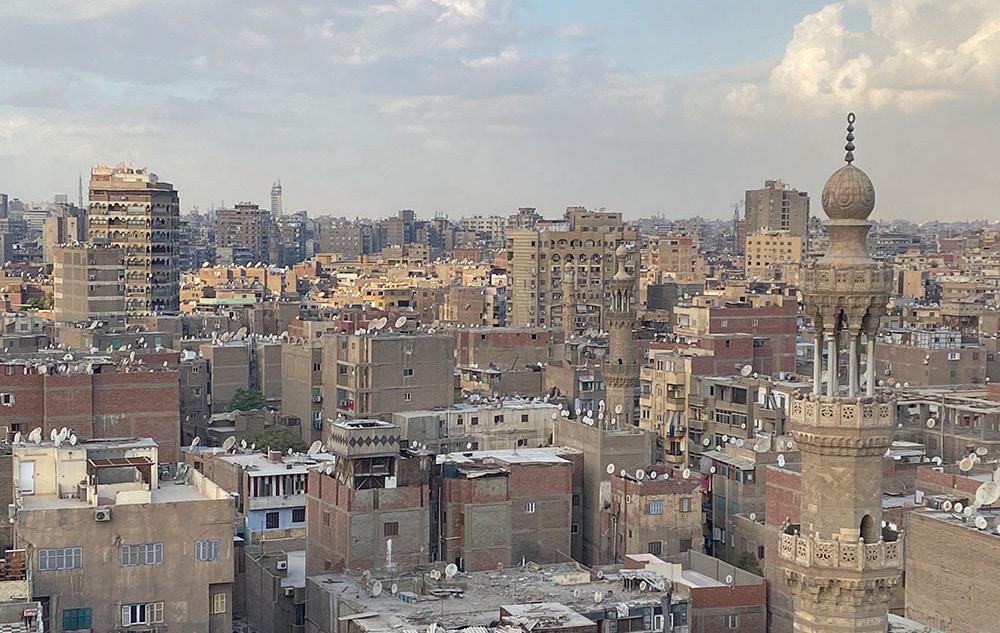
The setting: Late afternoon, early July, 2024. My friend and colleague May al-Ibrashy and I catch up while sitting under a trellis in a gathering area in the recently completed al-Khalifa Heritage and Environment Park. Kids chase each other on paths amidst birdsong, trees, and swings. The crippling heat of the city that surrounds us momentarily loses its hold, dissipating in the dusky smog.
IN2015, CAIRO UNIVERSITY architecture professor Nabil Elhady invited me to participate in a workshop focused on retrofits to low-cost, multi-family housing in 6th of October, a planned satellite city perched on the white desert plateau above the Nile Valley west of Cairo. We engaged CU students in systems-based design approaches for upgrading typical five-story, concrete and brick infill housing blocks to better suit the lifeways of those migrating from rural parts of Egypt (due to climate change impacts), with a focus on rooftop urban agriculture. One day during that first visit, Nabil introduced me to May, taking me to her studio in the al-Khalifa neighborhood of medieval Islamic Cairo, part of the Historic Cairo UNESCO World Heritage Site and readily locatable by the landmark ninth-century Mosque of Ibn Tulun (879 AD) marking the neighborhood’s northwest corner. A collaboration began shortly thereafter and continues to this day, including work on the park we now catch up in.
May’s practice supports an impressive breadth of community development projects through a potent alignment of heritage conservation, urban ecological design,

and the arts. Megawra Built Environment Collective and the associated Athar Lina (Heritage is Ours) initiative that she leads provide alternative models of practice for emerging Cairene designers. Khalifa Heritage and Environment Park intercepts groundwater from leaky pipes damaging two 13th century shrines across the street, buildings May and her team are working to restore. A novel approach intercepts the very medium causing harm to establish a much-needed open green space for women and children where nothing else like it exists. Given the enormous volumes of groundwater threatening heritage sites in alKhalifa, far more than needed for the park, the team now investigates more comprehensive, neighborhood scale water reuse focused on the formation of a chain of “green pockets,” and down al-Khalifa Street, the neighborhood’s main arterial, mini park spaces in alleyways and on rooftops focus on urban food production and evaporative cooling features. Taking advantage of underutilized assets such as plentiful water and acres of rooftops in a highly constrained context, and deploying an economy of “moves” to achieve richness of effect: this is the challenge at hand in transposing ecological design strategies to the city.
The opportunity to apply systems-based design principles in this magical yet precarious place (May describes Cairo as “the sublime mess”) informs the ecological design research studios I teach at the College of the Atlantic. More broadly, experiences in Cairo have engendered deep reflection on my role as an educator and what skills to nurture so students interested in design and community
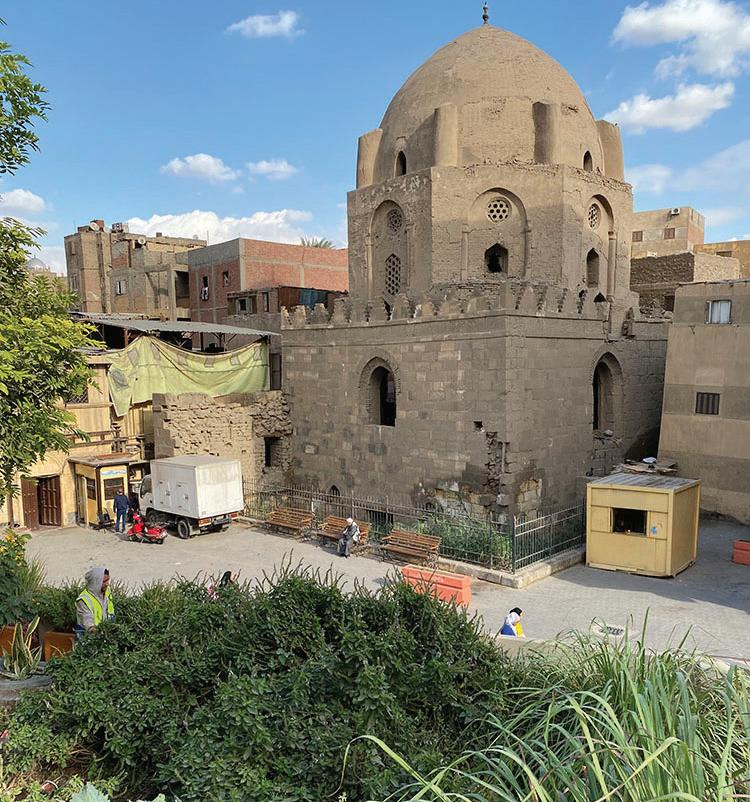
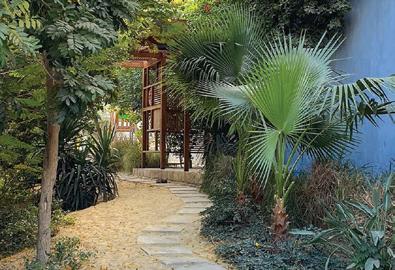

development have future agency in collaborating effectively in complicated, multilayered urban settings. A key motivating question associated with this effort: How can a neighborhood of concrete and stone “regrow” as it confronts unprecedented change, climatic and otherwise? How can we vastly improve the environmental quality of urban settings while radically reducing energy and material consumption and extractive relationships with the nonurban settings—and peoples— that the city relies upon?
A related question energizes me: How can we use the privilege of time and space that a COA studio setting affords, not to mention the unique power of this institution’s humanecological approach, to engage in research—on passive (natural) cooling or urban agriculture as examples—that might be helpful to our colleagues on the ground? How can we contribute to transforming the city site-by-site (vs. massive scale developmentalist projects), taking motivation from architect Sim van der Ryn’s famous claim that the socioecological problems we confront reflect a failure of design. What roles can we play in advancing low-cost, low-carbon, low-energy measures in jerry-rigging existing
spaces and infrastructures to better support the lives of humans and nonhumans in times of great peril and change?

Experiences in Cairo have engendered deep reflection on my role as an educator and what skills to nurture so students interested in design and community development have future agency in collaborating effectively in complicated, multilayered urban settings.
These questions speak to a larger, critical one, so central to the mission of COA: What is the value of collaboration involving multiple disciplines, and how do we engage in it effectively? Here I share with students lessons learned in over 30 years of creative practice, and yet especially as a function of ongoing work in Egypt. The outlook operates as follows: We each bring ideas and skills to a given situation or problem, and yet we are not solutionist geniuses, arriving with answers (alas, such was a prevailing attitude in the architectural culture I grew up within). It is precisely this humble approach that enables us to do good work as a collective and, in the process, for each of us to hone our sensibilities and find our voices. I can think of no higher form of ambition and no better way to advance, as the anthropologist Artur Escobar describes it, a place-based globalism, a networked manner of working committed to replenishment on the ground.
Brook Muller was named a Fulbright Specialist in 2024 in honor of his human-ecological architectural work in Cairo.
By María Lis Baiocchi ’07,
Helena Shilomboleni ’09, Enrique Valencia Lopez ’11, Milena Renée Rodriguez ’14, Abigail Plummer MPhil ’16, Clément Moliner-Roy ’18, and Richard J. Borden Chair in Humanities Bonnie Tai
INANTICIPATION of my retirement from COA this June, I invited recently graduated advisees, former students who have kept in touch, and those whose senior projects or graduate theses I advised to discuss together a number of questions that I thought would interest all of us and readers of COA Magazine. What follows is a synthesis of this discussion; nearly all of us contributed to the continued conversation through the collaborative revision process. As a group, the alumni spanned the years 2005 to 2018, and attended COA from Argentina, Namibia, Mexico, Nicaragua, the US, and Canada. Not all of these alumni focused their studies on education, although all had taken at least one course with me. Other areas of interest and expertise include anthropology, entrepreneurship, food systems, Indigenous studies, gender studies, and quantitative research methods. All of us share interests in education and social, economic, and environmental justice. Each of us speak from our own experiences and do not presume to speak for others—former, current, or future students. Finally, authors are listed according to year of graduation in chronological order; beyond my coordination and facilitation, we share authorship equally. Bonnie Tai
In responding to how higher education has impacted them, some described how different their lives would be had they not pursued postsecondary education. María Lis shared, “It has shaped my life in profound ways. My life would be completely different if I hadn’t had the opportunity to go to university.” Helena, who is teaching in a Canadian university, observed from her recent professional experience, “The learning that you get at university… is not so much the knowledge you get from your professors… You learn to work with other people, meet timelines, [gain or hone] communication skills.”
For María Lis, Milena, and Enrique, COA opened up interests they hadn’t

considered pursuing through courses that influenced their path, including in Enrique’s case, the decision to pursue graduate studies:
The classes I took at COA were the fi rst systematic introduction to specifi c issues that have infl uenced the way I approached a specifi c aspect… questions related to race, related to climate change, questions related to food systems. Some have become personal interests and some have infl uenced to some extent the type of research that I wanted to do— for example, the idea of what motivates people to believe certain information or not.
COA didn’t just “shape [Enrique’s] aspirations; actually it changed them.” The role that peers played cannot be
underestimated. “Until I met several students, I didn’t think about going to graduate school. That made me wonder if that path was right for me and if I wanted to do the same,” he said.
María Lis’ preparation at COA also allowed for an easy transition to graduate school:
Given the training I got at COA, it was really seamless to go on to my master’s and doctoral degrees in terms of the demand of what was required of me as a scholar in training: taking ownership over my education, working independently. COA gave me so many tools.
Abby, Helena, María Lis, and Milena all spoke of the interdisciplinarity of a COA education as central to their learning. For Abby, it was difficult
to find a graduate program that combined her interests in education and food systems while also allowing her to complete requirements toward teaching licensure; ultimately her thesis allowed her to work across areas of expertise as she developed and launched a farm-based summer learning program in collaboration with the former manager of COA Peggy Rockefeller Farm, C.J. Walke, former professor Molly Anderson in food systems, Jay Friedlander in entrepreneurship, in addition to Linda Fuller and Bonnie in education studies. Helena talked about the value of the “hands-on, applied work” that she was able to do in various countries supported by the Davis Scholarship before completing a PhD at University of Waterloo. Speaking of how this applied learning has influenced her university teaching approach today:
“My assignments are very different, [for example] to write a grant proposal [to foster] deep learning… It’s not easy for university students to go to Tanzania so sometimes you have to bring that [place or perspective] to the classroom.” Referring to her time at COA, María Lis stated, “Interdisciplinarity was something that was ingrained in me at such a young age.” As a graduate student and now postdoc, she elaborated:
When I was completing my PhD in anthropology, I didn’t limit myself to working with faculty in my department. I also did a number of graduate certificates as part of my doctoral degree— in global studies, Latin American studies, gender, sexuality, and women’s studies, and cultural studies. My PhD studies, which focused on household work and household worker advocacy in the context of changes in labor law in Argentina, were superinterdisciplinary. The way I was taught to think at COA was a real asset; it made me a more flexible thinker.”
Abby valued specific skills honed from her COA education and how she has been able to teach these to her middleschool students:
Developing critical thinking skills and learning to look at things from multiple perspectives and respectfully debate them are skills that I’m trying to instill in my students as a teacher, and those are skills that COA develops in all of its students. That is a huge value of COA and higher education.
Her experience and study of democratic education at COA also influences what she tries to offer her students, including “the way that COA supports democratic education… to co-create their learning, to be able to give choice to what they learn, to feel valued and trusted.” As Helena also experienced and described above, courses outside of ed classes encouraged direct application in community contexts. Abby was able to develop a curriculum around sustainable energy and pilot it at a local elementary school while taking David Feldman’s Physics and Mathematics of Sustainable Energy “Those chances to step into action are really powerful and important.” Other hands-on activities also offered opportunities to apply learning, such as “co-coordinating the farm-to-school program.” Critical exploration is an educational approach that Abby valued the opportunity to learn while at COA. Abby observed, “I’ve had students say, I like how you don’t tell us the answers and let us figure it out. If I hadn’t gone to COA and gone through the ed studies program, I don’t know that I would have been able to do that for kids; even at fi fth grade, they are able to recognize that as unique to them, to their experience.”
A challenge most felt that COA faces today is ensuring that graduates don’t feel that they must pursue graduate studies in order to be prepared to enter the workforce. As María Lis noted, “It’s the perfect environment for students to become excellent ethnographers or social science researchers more generally without going on to further
studies, because it’s so small. Students in the natural sciences get training on how to write papers and how to publish to have a successful career without the need to go to graduate school, and the same could be done with students interested in social research.” However, not every student will have this kind of mentorship depending on their area of interest due to the small faculty and limited breadth.
Enrique noted a few related challenges and opportunities associated with preparation for academic work:
Keeping up to date with the new methods or the new fields in the social sciences and humanities might also be a little bit of a challenge because they move so fast and require strong connections with industry (e.g., machine learning, AI, the development of new materials). One of these challenges is to balance the goal of working with the community at the same time as creating these broader links with industries and organizations outside of Maine that can contribute and improve COA’s methodological [studies] in the curriculum. This is part of a challenge given the location of the school… I remember there was this strong emphasis on trying to work with farmers and fishermen and women. I think establishing and continuing these connections is crucial, but expanding them is also important.
As the only discussant who completed the teacher licensure program, Abby noted the education program as an exception: “Ed studies stands out in providing the certification program; if you follow that pathway, it can lead to direct employment” after graduation, should you decide to apply for school teaching jobs.
An alum who contributed written input noted the following:
Interconnected challenges like climate change, increasing polarization, pandemic


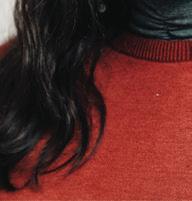
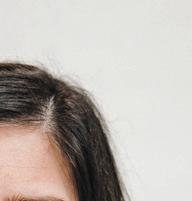
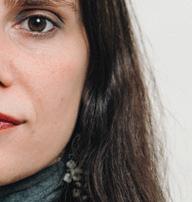
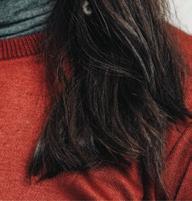










recovery, threats to democracy, and growing socioeconomic disparities continue to amplify and complicate each other. COA, as an interdisciplinary island school with a high international presence and strong commitment to social and environmental justice, has a unique opportunity to be a leader in fostering students’ capacity to lead resiliencebuilding efforts through these challenges across disciplines, arenas, and communities throughout their lives.
Part of a challenge I see is building leadership that can resist the forces of polarization and extremism. In a time where divisions are deepening, I think it’s really important to keep in mind the large-scale social cohesion and collaboration needed to address these crises.
I think building the community’s capacity to bring together diverse perspectives and foster collaboration across opposing viewpoints will be essential in leading the way through these complex, interconnected crises.








In reflecting on the unique paths students often take at COA, Bonnie interjected that not every student can afford a “trial and error” approach to course selection.
María Lis brought our discussion to the question of “how education can be a stepping stone to upward social mobility.” She asserted, “A liberal arts education and preparation for the labor market are not mutually exclusive.” As she elaborated, COA can teach students to “study the issues, think critically, make connections in the real world, and also prepare them for the labor force.” Her suggestion is for COA “to incorporate a perspective of class and political economy into the kinds of training students acquire at the college.” As she noted, not all students can afford to earn an undergraduate, not to mention graduate, degree without going into debt. “I was lucky to have a Davis Scholarship, but most students at COA don’t have that privilege.”
Enrique reflected on some peers during his time at COA who were considering
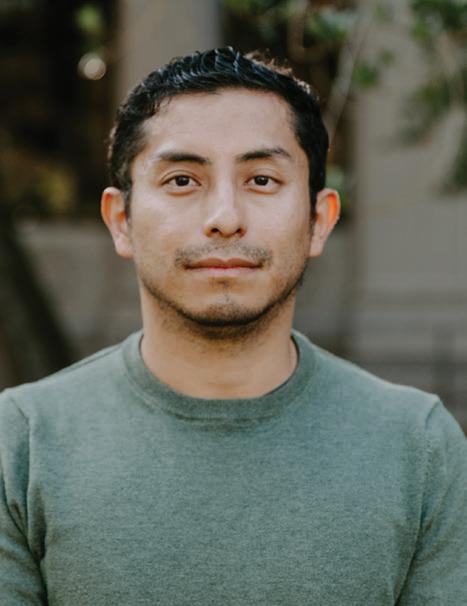
“whether COA was right for them, whether they were academically fit for the college,” and what resources COA provides to students who may be at risk of leaving. His reflection offered Bonnie the opportunity to share about the work of COA’s College Opportunity and Access program (COA2), researched and developed in 2018-2019 by the Student Persistence Working Group—a small group of faculty and several students. Enrique shared his own experiences with a peer mentoring program in graduate school and the possibilities these peer-to-peer interactions can act as bridges between domestic and international students, as well as first-year and continuingyear students. He also offered some provocative thoughts about further institutional research at COA:
I’m wondering if COA has conducted research on what factors contribute to improved labor market integration of their graduates… We know that there are other components of the college experience that also contribute to a successful job search; the quality of the internships, for example, and studying abroad.
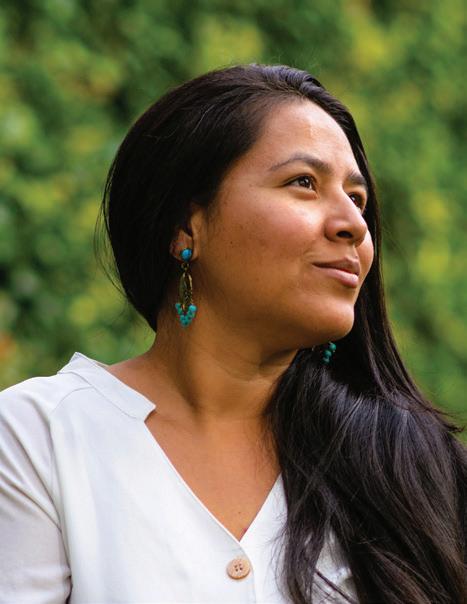
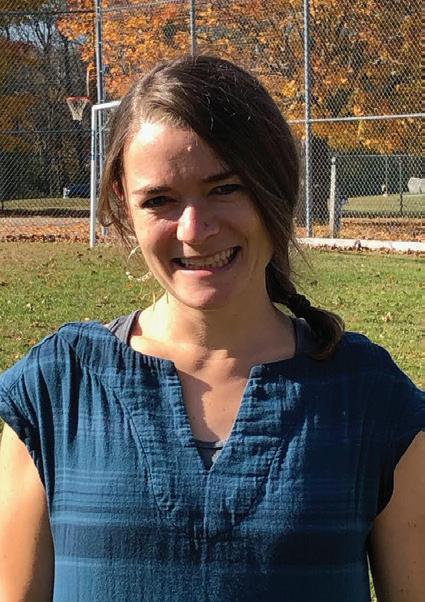
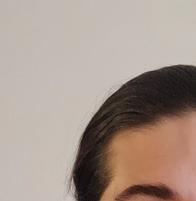
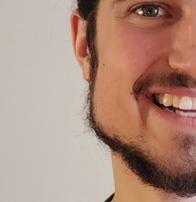

We wrapped up our discussion with some refl ections on what role education studies play in a human ecology degree program. Milena expressed the importance of environmental sustainability and how her doctoral application builds on COA’s human ecology mission, particularly the “understanding of experiential education of children toward sustainable development” and the need for “more intersectional, experiential, and intergenerational climate education. Human ecology has certainly supported how to bring interdisciplinarity into understanding children’s experiences of education for climate justice. It’s very interconnected.” Clément shared about his experience, “I barely ever use the term human ecology, but everything I do falls under that umbrella… And the few times I tell people about my atypical degree in human ecology… it’s always received as a WOW!”
In speaking more directly about past and future faculty, María Lis shared the following:
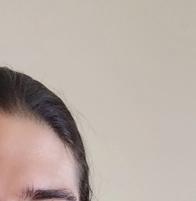
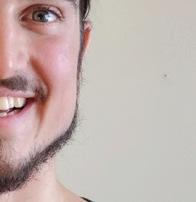
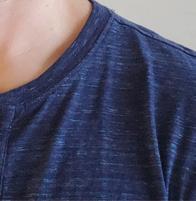
Having feminist teachers, mentors, and role models like Bonnie Tai, Lucy Creevey, and Karen Waldron was so important, as was having an advisor and work-study supervisor like Bonnie who was very clear about boundaries and didn’t ignore the fact of the power differential between students and teachers. Incorporating a more capacious notion of justice that goes beyond environmental justice and that includes gender justice and racial justice has to be at the center of a COA education—not just in terms of what is taught in the classroom but also in terms of how teachers interact with students to create a truly equitable and inclusive learning environment and community.
Milena suggested, “Integrate decolonial thought from BIPOC scholars from all around the world into human ecology core courses, where there are great opportunities to spark discussions about the Native American Land Back movement and other environmental injustice issues that intersect important topics at COA.” She later added, “Bonnie's
courses [including a water-themed core course section] and senior project supervision stimulated my interest in studying education and deepening into decolonial research, Indigenous water-based epistemologies, and contemplative practices. Fifteen years later, this and all the courses I took with Bonnie are still deeply present in my practice as an educator, community organizer, and early career scholar."
Clément closed our discussion with important directions and priorities in the future of COA:
My research in the field of higher education made me realize that we need to pluralize ways of being and ways of knowing. Thus, I think we could benefit from faculty who can open us to other ways of thinking, honoring Indigenous knowledge, feminist knowledge, nature-based, plantbased knowledge. We'd also gain from reflecting on how to create a democracy that’s not just about humans, but that truly accounts for other than human— plants, animals, and minerals. The human shouldn’t always be seen as coming before the ecology in human ecology.

ICHOSE to come to COA precisely because I learned that the human ecology degree would offer me the academic freedom to merge different interests and disciplines into a unique educational path. I have been deeply inspired by the faculty and students in this community. Most of what we do seems to be motivated by a deep love for the land we inhabit, as well as the people we choose to open our hearts to.



The start of my second year marked a deeper focus in my educational path. With a strong interest in the arts, I began exploring how societal changes and the interplay of economic and political systems shape creative expression and forge different avenues for intercultural conversations.


This course, taught by Writing Center director Blake Cass MPhil ’19, was pivotal in preparing me for a tutoring role at the Writing Center, but it unexpectedly became a journey of self-discovery. The principles of mentorship resonated with my experience under other leadership roles, such as being a resident advisor.

Joining Jonathan Henderson’s Samba Percussion Ensemble was an energizing experience. The rhythmic beats of the drumsticks felt like an extension of self-expression, allowing me to find a unique voice within the collective sound. Beyond improving my percussion skills, this experience became a gateway to understanding samba's profound role in political and social movements in its country of origin and around the world.
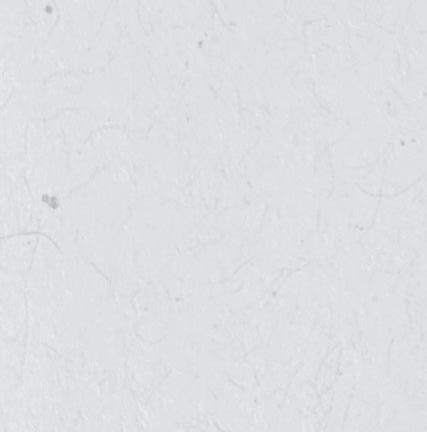
The course challenged me to reconsider academic conventions, institutional norms, and the paradigms shaping higher education. It also provided a platform that allowed me to refine my own voice within writing in academia. Practical applications of these understandings emerged during my time in the Writing Center, where I engaged with translingualism, spoken word, and other conversational approaches to tutoring writing.

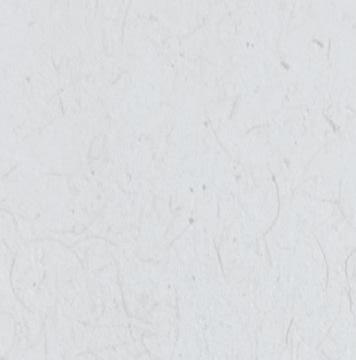
Performing for local schools highlighted samba's community-building power, while class discussions explored its roots in Brazil's race and class struggles. I was particularly moved by the sociopolitical narratives and questions of cultural appropriation that emerged, inspired both by assigned readings and my personal reflections. This deepened my understanding of my own cultural identity and how it intersects with global artistic traditions.



DEPT/ID COURSE NAME
AD 6030 Samba Percussion Ensemble
HS 4102 Methods of Tutoring Writing Across the Curriculum
AD 4050 Sound Studies Practicum



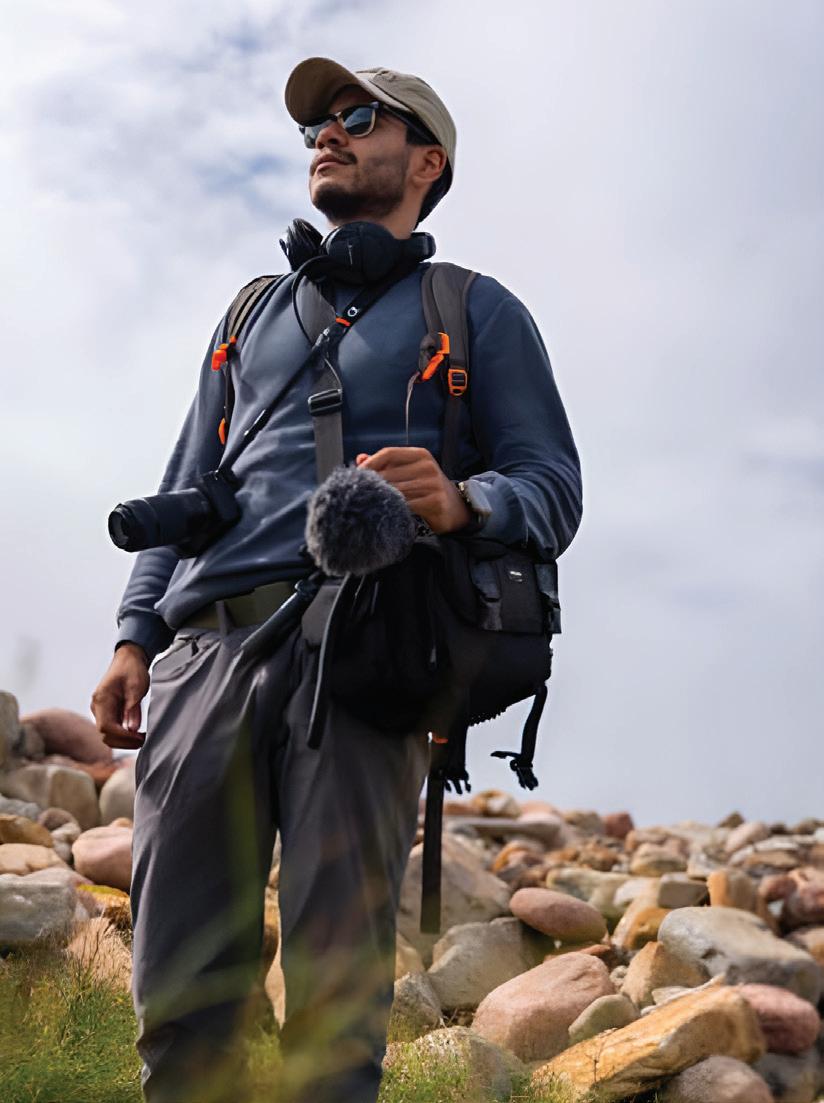



INSTRUCTOR
Henderson, Jonathan
Cass, Blake
Henderson, Jonathan Koch, Galen


This practicum was co-taught by Jonathan Henderson and audio storyteller Galen Koch. I did not have a lot of experience with sound before taking this class, and it transformed the way I perceived the world, focusing on the act of listening as a culturally and linguistically shaped experience. The course also questioned ocularcentrism, expanding my sensory awareness and appreciation for sound as a research medium.


From attending lectures on data sonification to learning about sound as a physical phenomenon and its relationship with human physiology, I was inspired to explore sound in innovative and personal ways with a storytelling intent. Field trips to COA's research stations and handson projects, like sound recording and editing, culminated in a personal project that examined the intersection of the digital world and auditory experience. This creative journey paralleled my passion for photography and videography, further broadening my artistic perspective.

By Luke Madden ’12
WITH INCREASING ACCESS to technology on a consumer level, specifi cally recording technology, the ability to capture moments has never been easier. How do we distinguish between which moments to share and which are better left undocumented?
I am convinced that the answer to this will always be changing as technology continues to evolve, as does our reliance on it. In the years
between my education at College of the Atlantic in visual media and my writing this sentence, my opinions have been altered many times.
I have been asked how I would categorize my visual media work, and my answer is constantly shifting. In my photography I am drawn to quiet moments. My father has been a photographer throughout my life and I see much of him in myself and much of his
LUKE MADDEN ’12 was born and raised in the hills of western Massachusetts. His passion for photography was realized during his high school years, as he spent countless hours exploring abandoned buildings (amazingly without injury). In his first class with T.A. Cox Chair in Studio Arts Nancy Andrews, he was introduced to video production, editing, and, most notably, the complexities of storytelling and audience. Following his time at COA, Madden launched into the art world, working for Marion Boulton “Kippy” Stroud at The Fabric Workshop and Museum in Philadelphia, which Stroud founded. Over the years, Madden has lived in and worked across New England, Florida, and The Bahamas, capturing a diverse array of educational and environmentally focused projects, from the ocean floor to the peaks of the Swiss Alps. This spring, he begins a new role as multimedia specialist at Jackson Laboratories in Bar Harbor.
photographic style in my own. His images often show scenes or details that may be easily passed by, but on further inspection are worth pausing for. The way light hits ice on birch branches; the dying light on snow-dusted mountains; the inexplicable presence of the color purple on a grassy hill in the afternoon. I strive to capture moments that are worth stopping for and reveling in.

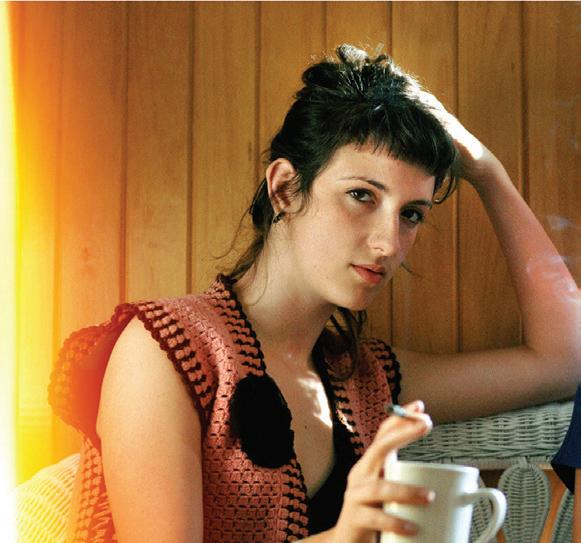



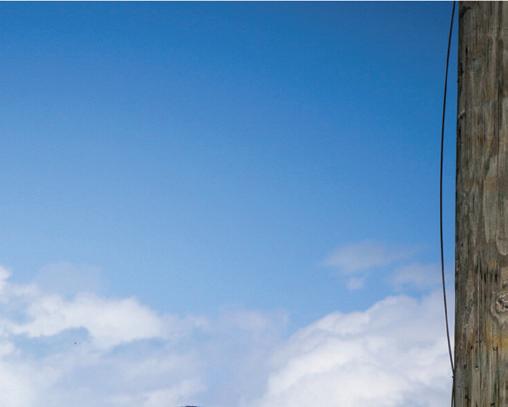
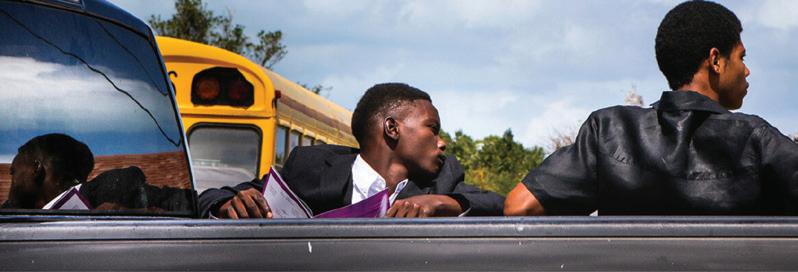

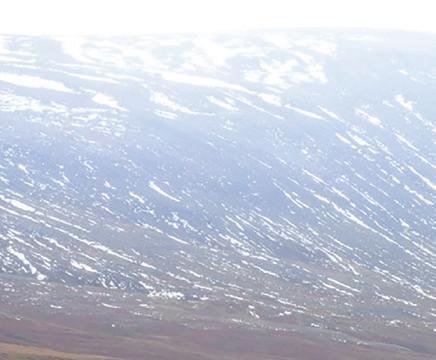

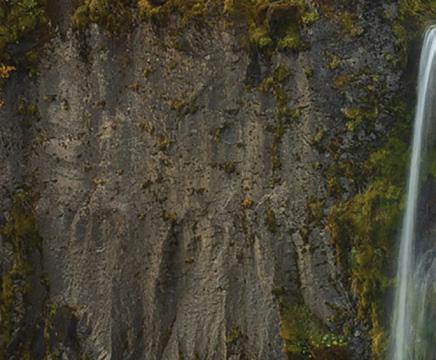
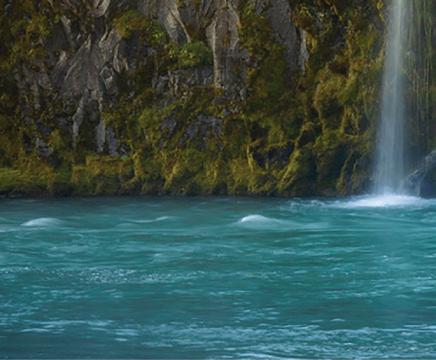
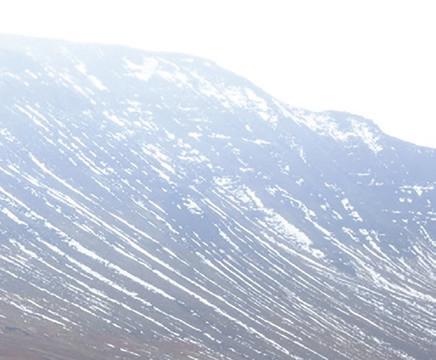



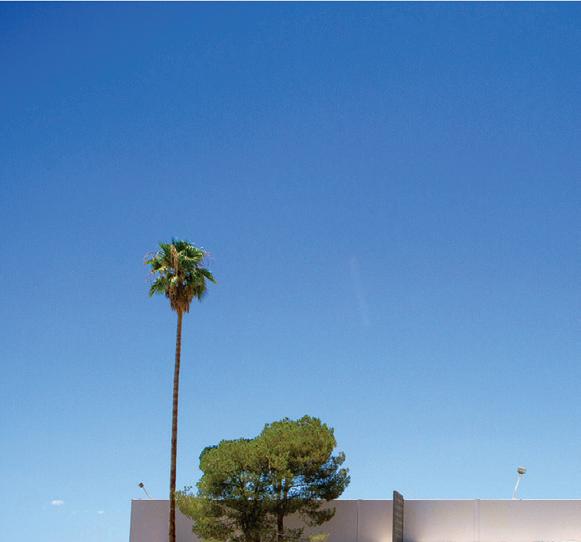



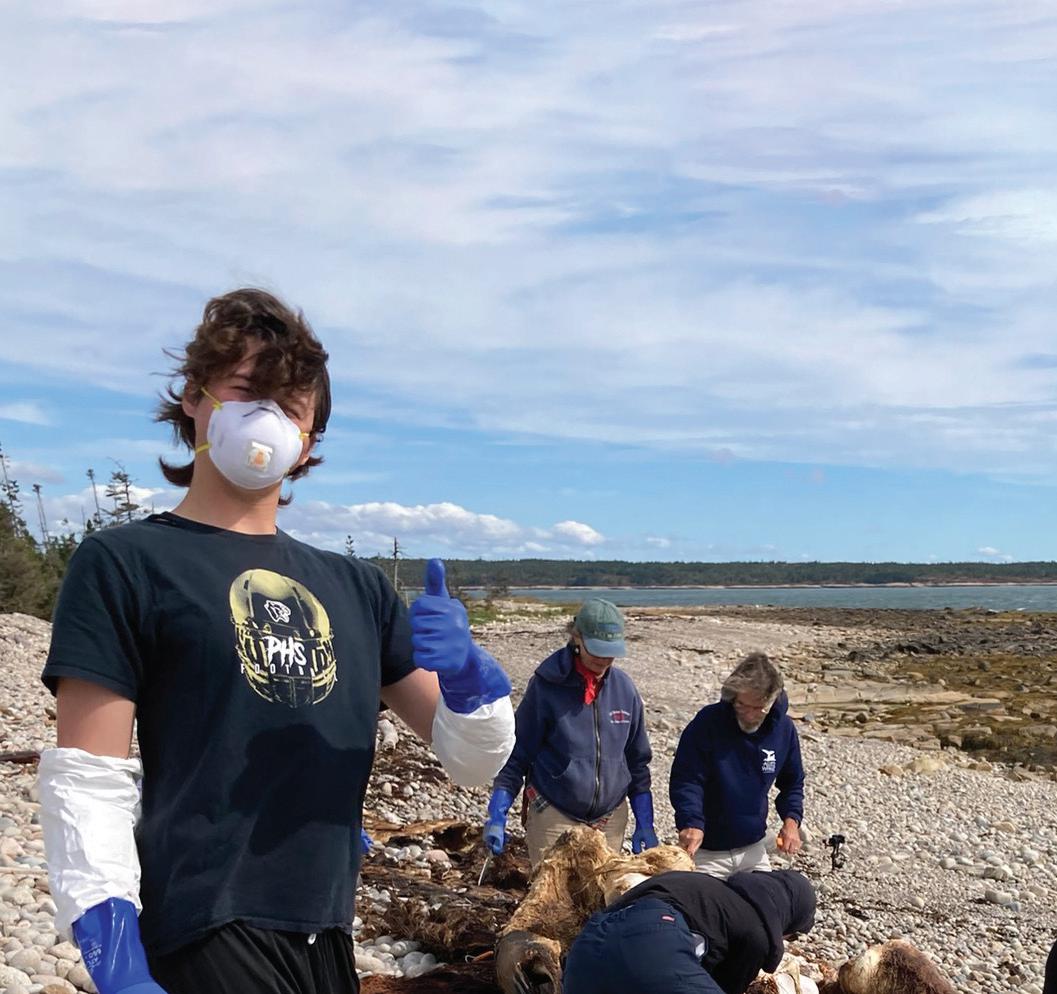
By Anara Katz ’24
other students and volunteers collecting the bones of a young female fin whale that live-stranded and died in the Petit Manan National Wildlife Refuge a year previous (see image on page 45).
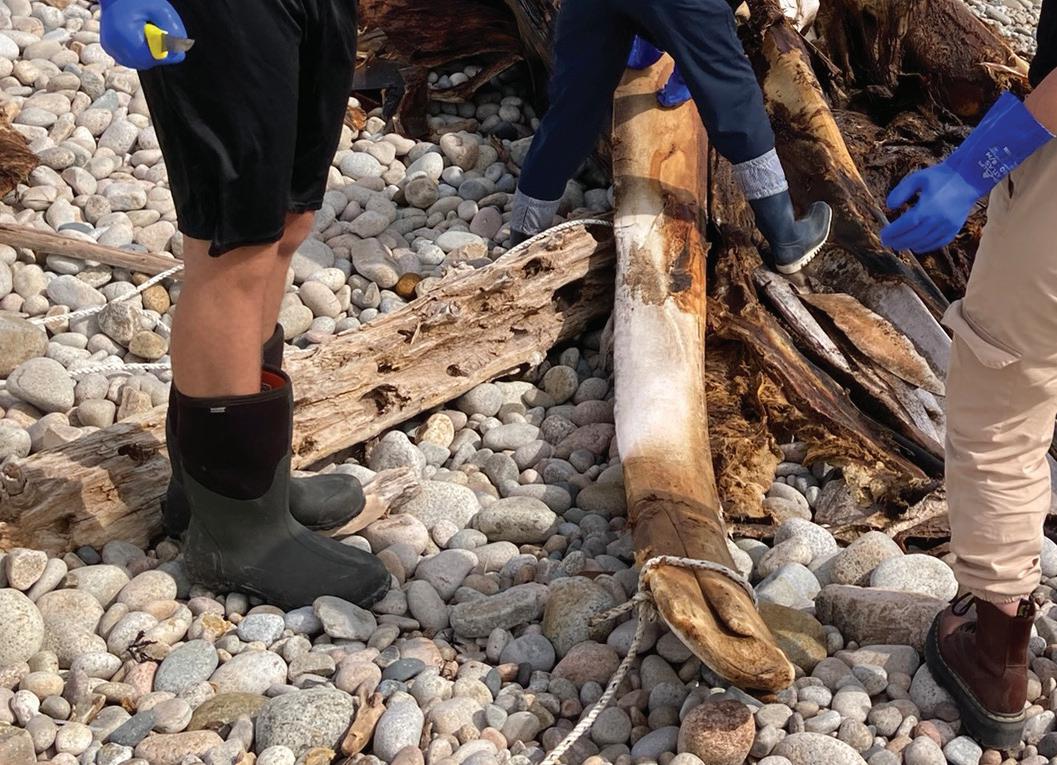

IT WAS A COLD, drizzly dawn when Rosemary Seton, coordinator of College of the Atlantic Allied Whale’s Marine Mammal Stranding Response Program, drove a month-old seal pup to meet up with Gina Silverman and her teenage son Olin at the head of Mount Desert Island. This pup, who had been found with sores and injuries all over her body, was in dire need of medical care, and the closest appropriate facility was the National Marine Life Center in Buzzards Bay, Massachusetts. Silverman and her son had volunteered to drive the pup the whole way.
“I figured Gina volunteered because they had to go to Massachusetts,” Seton recounted. “She said she just wanted to drive the pup. I was so floored by that.”
It took all three of them to carry the crate from Seton’s truck to the back of Silverman’s car. Seton had cautioned that the pup might die along the way. But when Silverman saw the helpless creature, she knew she had to try, whatever the consequences. Seton explained how to best care for the seal, such as turning on the air conditioning and keeping their voices very low, and gave them gloves and protective gear if they needed to handle it.
“We were really worried she wasn’t going to make it, but we just kept going,” Silverman said. They spent the 330-mile ride looking back to check if the pup was still breathing. “We experienced heavy rain, it was coming down in sheets, and it was very intense. We were thinking we had minutes left, just to get her to where she needed to go. I remember asking my son if he could go a little faster, but it was hard under the conditions.”
About halfway through the trip, the pup had peed and was lying in her own urine. Because of all the open wounds on her body, they were advised to mop up the crate. “So, we pulled over on the side of I-95. The car was getting buffeted by the wind from the cars going past. Rosie told us to be really careful because the seal could bite because she might be scared. She bared her teeth when we opened the cage. I had the gloves on and just mopped up any of the urine that was there. It didn't look good at that point. I felt like we were racing against the clock,” Silverman said.
National Marine Life Center staff were texting with Silverman and were prepared to take the pup the moment she arrived. Before they could even park, a team of people opened the car door and carried the pup inside. Silverman remembers hearing one person say, “This isn’t good.”
Silverman recounted feeling a huge relief that they got the pup to the rehab center still alive. “I once heard somebody say that you love the things that you take care of, and at that point, she had taken ahold of our hearts.” That day, Silverman and her son were told that the pup had a 50-50 chance to live. They were on edge for days, continuously checking the National Marine Life Center website for any updates on the seal’s status.

After about a week, the center posted a video of the pup, who had been named Zion, swimming around in a pool. That was a big milestone, Silverman said. Two months later Zion’s release was scheduled.
Volunteers like Silverman are critical to the success of Allied Whale’s work. With Seton working as the only fulltime staff in the stranding program, the group could not come close to fulfilling their stranding response mission without the help of volunteers. Seton, part-time staffers, COA faculty and students, and the team of dedicated volunteers give generously of their time and energy to provide this vital service. Averaging 130 stranding calls per year (not including multiple calls for the same animal), COA Allied Whale is responsible for handling all marine mammal strandings from mid-coast Maine to the Canadian border, a total of 2,600 miles of coastline including all the islands.
In addition to putting their lives aside to come to the rescue of marine mammals in need, volunteers are critical to Allied Whale’s educational efforts, helping to facilitate workshops with COA students and community members, lead necropsies and other opportunities to learn experientially with real specimens, and spread messages of care for marine ecosystems to their own communities.
“It’s not just about marine mammals. It’s about how humans are impacting marine life, the climate, and all life. It’s important to help people understand our role, good and bad, in the environment,” said Dr. Gayle Kraus, professor of marine ecology at University of Maine Machias and retired wildlife rehabilitator who has volunteered for over two decades in the stranding program. “Sometimes the best way to show the bigger picture is to get people to feel connected. You see a cute little seal pup, your heart melts. Now, you can begin to think about the bigger questions. Allied Whale is a part of that.”
When Allied Whale responds to a stranding in the field, the individuals who made the call—and any curious
onlookers—learn about Allied Whale and their work. This process often sparks conversations about these animals, their role in the marine ecosystem, and environmental concerns such as climate change.
"We may not be able to directly impact the rising ocean temperatures or sea levels, but we can continue to educate the public about their potential impacts. What better way to emphasize these stories than by witnessing a stranded or deceased animal," said Laura Lyell, a retired nurse and dedicated Allied Whale volunteer for the last 15 years.
Allied Whale staff, volunteers, and work-study students wear the COA logo during stranding responses so bystanders understand they are authorized to handle the animal. It also lets others know who to call if they ever encounter a stranded marine mammal. Their visibility over the years has paid off—many now recognize the organization as the authority in these matters and know who to call when strandings do occur.
"One day Rosie and I decided that we were going to go for a little hike, it was my day off. We went to the Wonderland Trail because there was a report of a seal pup, so we thought it would be good to hike there to check it out. We assessed the pup, and decided we should bring him back. So we wrapped it in a towel and then were lugging this seal pup back along the trail,” said

Allied Whale volunteer consultant veterinarian Dr. Carissa Bielamowicz. “Once we managed to get him back to the car and load him in, a young couple came up to us and let us know that there was a group called Allied Whale on the island who is really good at this sort of thing and they probably would not want you doing that… but you should contact them. Rosie and I started to laugh. We told them that we are Allied Whale… But, it was really great, we felt so good that they came up and they wanted to intervene, and that they were so knowledgeable about it already. We were like, oh my God, what we do does make a difference!"
Kraus' life's work has been connecting people to the wildlife around them, with the aim of supporting more ecologically caring decisions. Her teaching style is filled with real field experiences, such as taking her students with her to respond to a marine mammal stranding, or joining COA Steven K. Katona Chair in Marine Sciences Sean Todd, director of Allied Whale and professor of biology and marine mammalogy, to check out a beached whale with some of Allied Whale’s work-study students.
Because of Allied Whale and its volunteers, Kraus’ students at UMaine Machias and COA students are exposed to unique undergraduate opportunities, such as working with live marine mammals and learning from dead ones. Allied Whale conducts necropsies (autopsies) on marine mammals that they weren’t able to save or those that have washed up to shore dead. The goal of these necropsies is to find the cause of death, if possible (which is often elusive when necropsying wild animals with an unknown history), to gather data, collect samples for genetics, toxicology, and testing for certain diseases, and to better understand marine mammal populations and ecosystem health.
Most Allied Whale necropsies are co-led by Seton and volunteers Lyell and Dr. Edwin Barkdoll, a retired veterinarian. Interested students are encouraged to join and learn as the teaching trio takes students step by step through anatomy, organ physiology, data collection, photo-documentation, and safety in handling the surgical instruments. There is a focus on as much hands-on experience as possible, and as students acquire more knowledge and practice, the hope is that they can even lead necropsies themselves, Barkdoll said.
Anyone interested can attend the necropsies. Whole COA classes have even observed the process. Lyell, Barkdoll, and Seton have led necropsies in the lab sections of Todd's Marine Mammalogy course, and COA George B. Dorr Museum of Natural History Director Carrie Graham's course Zoological Field Sketching.
"The necropsies give my students very valuable opportunities to see and draw internal and external mammal anatomy," Graham said.
The first step of a necropsy is to do a careful walk-
around and take photos of the animal to make sure that no evidence is overlooked. Then the dissection process begins. Necropsies on smaller animals, such as a seal pup, will usually take at least four hours. The larger the animal, the longer it takes, and more people are needed for a thorough analysis. “The primary goal is to find out why they died; secondary goal is teaching students,” Barkdoll explained.
For all strandings, Allied Whale is required by the National Marine Fisheries Service (NOAA), to gather Level A (basic) data. This includes information such as location, species, condition, measurements, and what has been done with the animal. When it is diffi cult to bring an animal back to the lab, Allied Whale staff and volunteers will do the necropsy where the animal is found. “When that happens, it’s a great opportunity for educating the public because people almost always come up and ask questions. Some of the people who have attended an on-site necropsy will even become volunteers,” Barkdoll said.
Whale formed during COA’s infancy in 1972 as a four-week class, Humans and the Great Whales. Biology professor Steven Katona, one of COA’s founding faculty members and a future president of the college, knew about as much about whales as the students—which is to say not very much—but joined them in the task of learning what he could, with a focus on saving these great creatures that were endangered due to human activities.
At the time, most people didn’t really know what most whales looked like, and whale population statistics in Maine didn’t exist. The group started to gather an idea of the whale population in the Gulf of Maine by looking through archives and surveying sailors, fisherman, and boat drivers. When the workshop ended, the students wanted to keep going. They named themselves in alliance with one of the world’s first whale illustrators, Larry Foster, who was running an organization called General Whale. And, so was born Allied Whale.
In 1974, COA student Kathy Hazard ’76, a member of the college’s first full class, helped start Allied Whale’s stranding network. Soon after, Scott Kraus ’77 started the North Atlantic Humpback
Volunteers like Barkdoll bring energy, dynamism, and unique professional perspectives to Allied Whale’s work, and their presence adds a lot to the student experience.
"Edwin creates a welcoming, inclusive environment for learning, and integrates academic teaching and instructive moments seamlessly,” said Gordon Maguire
’26, an Allied Whale work-study student who first got involved as a volunteer. “I believe he has contributed to the growth and development of aspiring future marine scientists and activists. I’m very grateful for the guidance he has shown me and others at COA."
Allied Whale volunteers, while necessary for stranding response, are also making a huge impact as educators, enthusiastic and ready to teach anyone who wants to learn. Lyell and Barkdoll described teaching as the most rewarding part of their experience volunteering for Allied Whale.
Whale Catalog as his senior project. His photo-ID technique, which captured photos of the unique patterns seen on the flukes of whales, inspired and enabled whale research around the world. That former senior project is currently one of the largest international catalogs of photoidentified humpback and finback whales. The current iteration of Allied Whale encompasses the stranding program, maritime research, licensed use of the COA Edward McC. Blair Marine Research Station on Mount Desert Rock, skeletal articulations, necropsies, and the photo-ID catalogs. COA students are involved in all parts of Allied Whale, through independent research, coursework, work-study, internships, and more.
Through NOAA Fisheries, Allied Whale’s stranding program is obliged to respond to stranded marine mammals from Rockland to the Canadian border. The stranding program is also a part of the Greater Atlantic Regional Stranding Network, the Maine Strandings Collaborative, and works in conjunction with veterinary clinics, rehabilitation centers, and aquariums to help marine mammals.
“Having an opportunity to make even a small impact in a student's life is one of the reasons I continue to enjoy volunteering. I'm still quite curious about our natural world, and being around COA students sparks that curiosity even more," Lyell said. Over the years, she has worked oneon-one with a number of COA students, advising senior projects and lending guidance across various academic interests.
“It is a lot fun working with the students because they’re like sponges. They ask me questions that push me to be constantly learning as well. They teach me things probably as much as I teach them. And, that’s an enormously rewarding experience,” Barkdoll said.
Allied Whale’s longest-running volunteer is Anne McGhie,
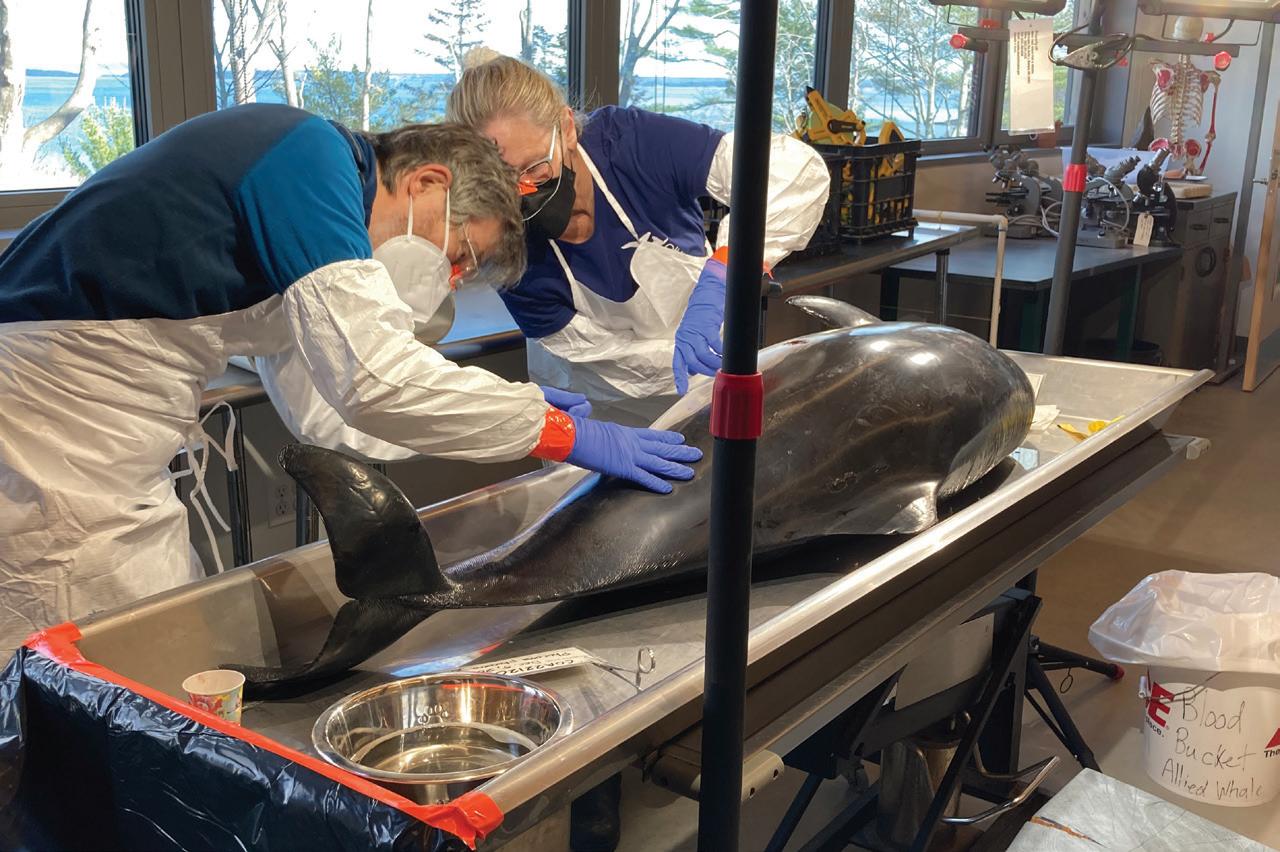
a retired pre-K and elementary school teacher who has been volunteering since 1990. She said that she feels gratified by sharing her love and knowledge of marine critters. Over the past 35 years, she has taught many children and adults, using slide shows of her photos from stranding response experiences, in the schools and organizations around where she lives in nearby Washington County. McGhie has brought her students out into the field, and her daughter, Nile, who grew up assisting with stranding events and necropsies, now works as a veterinarian.
“I’ve used photos and artifacts from my stranding volunteer experiences in my schools throughout my years in education. I have been invited to numerous public guest lecture opportunities. I’ve felt very blessed and very privileged to be able to serve in this way, to serve the animals and the community. There’s something so joyful about it,” McGhie expressed.
McGhie is one of several Allied Whale volunteers who bring their volunteer experiences to their classrooms. Seton encourages teachers to know they are allowed permits for marine mammal parts as educational tools. The North Haven Community School has been able to
articulate several seal and whale skeletons thanks to one of their teachers who is also a volunteer.
Some Allied Whale volunteers, like Bielamowicz, also donate their time and expertise by giving lectures at the free stranding response training workshops that Allied Whale hosts twice a year. Bielamowicz has also helped teach COA students to conduct physical exams on seal pups and about marine mammal disease diagnostics.
Allied Whale provides several educational resources to the public, such as grade-specific at-home activities, curriculum ideas, podcast suggestions, and more, which can be found at coa.edu/alliedwhale.
Allied Whale has about 30 active volunteers, including students and alumni, and around 15 volunteers who dedicate a large amount of time to the organization. There are many, many others who generously offer their help. Allied Whale also comprises nine staff members and research associates, one faculty member, and approximately 14 work-study students (it varies every year).
Along with the active volunteers, coastal residents in general have been really helpful with stranding responses over the years, Seton said, with assistance ranging from
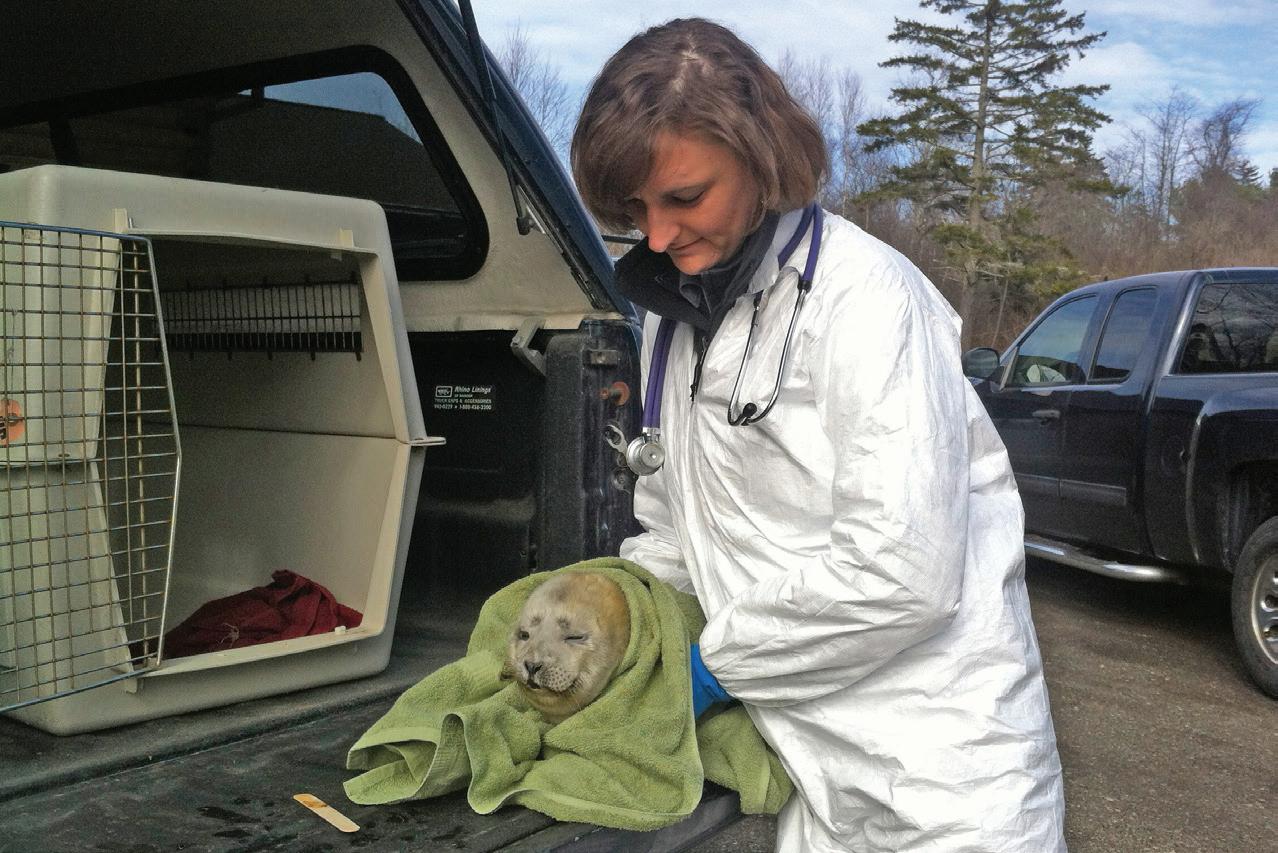
calling about a stranded animal to taking Allied Whale crew out on their personal boats to get to remote locations. Agencies, such as local police, harbor masters, park rangers, Maine Marine Patrol, and the Coast Guard have also been dedicated helpers to Allied Whale throughout the years.
Teamwork, as Silverman and her son proved with their long trip to Boston to save Zion, is critical to the stranding program. The network that Allied Whale has created and continues to expand encompasses a community of people coming together to protect individual animals, educate themselves and their neighbours, and care for the marine ecosystem.
“The volunteers and the wider community around Allied Whale are a very dedicated and ecologically cognizant group of people, who are willing of their time and resources to give back to the environment that we all love,” noted Bielamowicz.
Silverman and Olin, to their delight, were invited by the National Marine Life Center to Zion’s release. They drove back down to Massachusetts. It was a totally different kind of day, sunny and warm. They met with others in the parking lot of a protected marine sanctuary on
Cape Cod. The volunteers and the rehab staff members followed a windy, narrow path to the beach, nobody making a noise.
“It opened up to the most gorgeous, sparkling uninhabited cove of tumbled rocks. They brought the seal crate down next to the water and let her out. Zion looked around not really knowing what to do,” Silverman recounted. “Then she sniffed the ocean, fl opped down to the water and went in. She swam out a little bit, looked back. There were other seals in the water further out. She went under the water and then disappeared, and that was it.”
“It was a very impactful experience for both of us. It gave my son a sense of the kind of teamwork that’s involved, knowing that without all of these people wanting to do this, Zion would not have survived,” said Silverman. “To see her be able to go back to her habitat with such grace and ease, knowing she could go off on her own and make it in the world, was such a relief and so gratifying. I felt so honored to be given the chance to be around this precious creature.”
All photos credit COA Allied Whale.
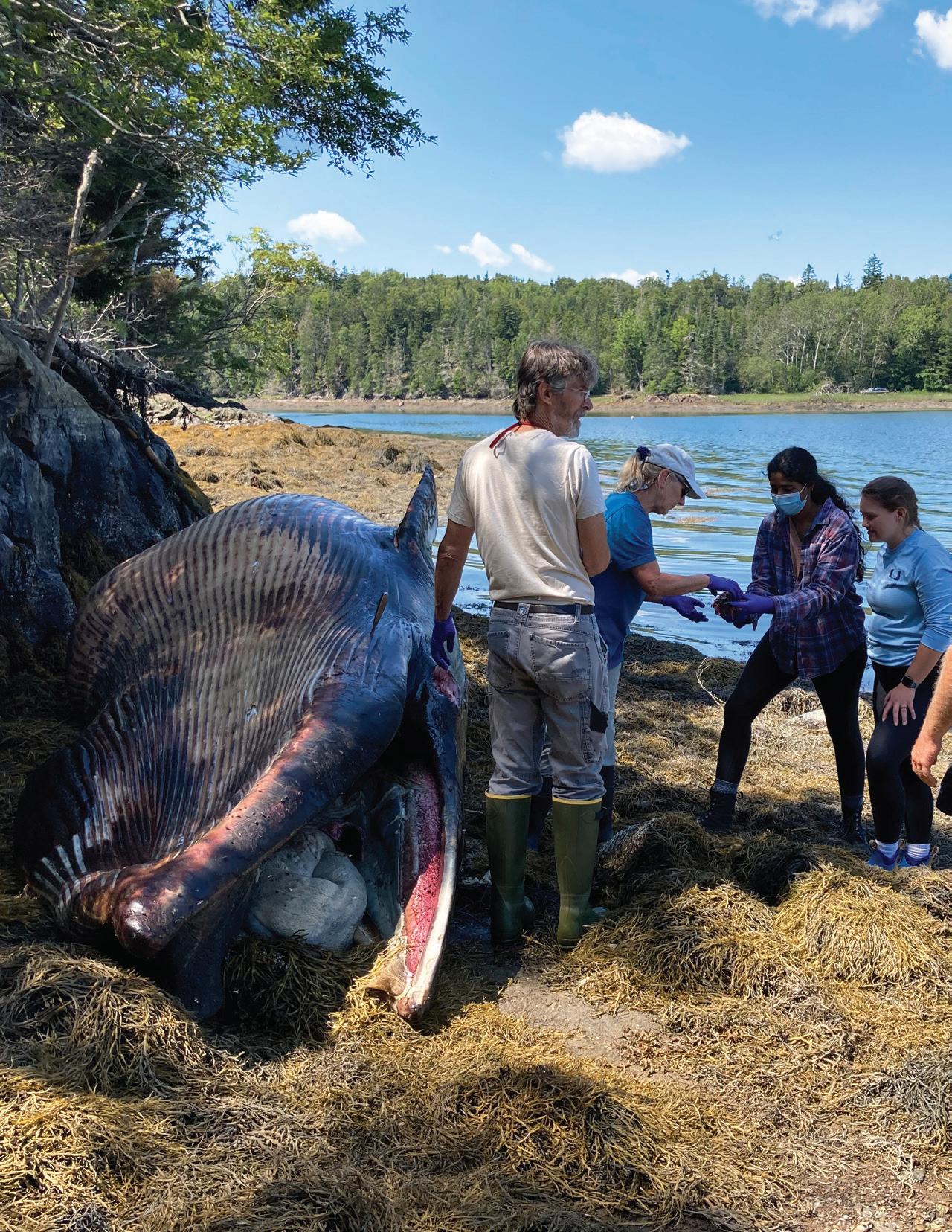
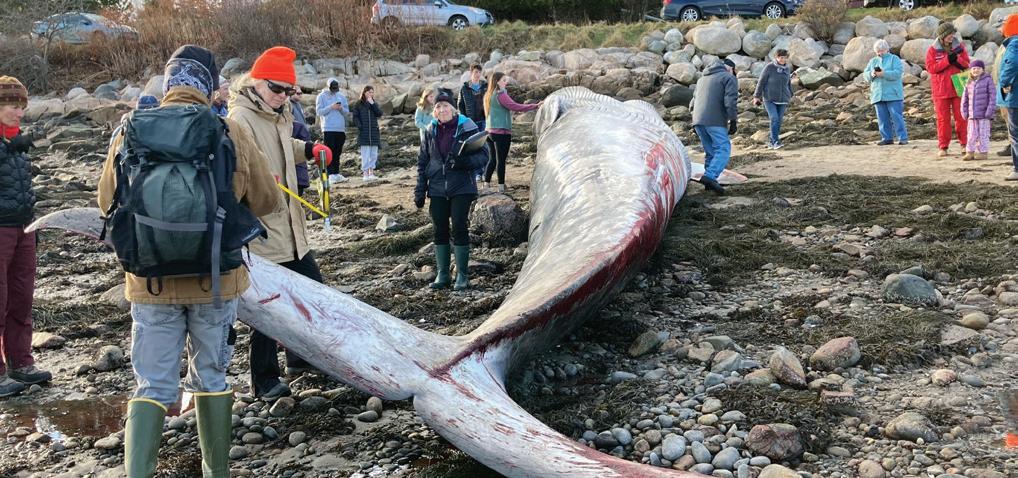
ALLIED WHALE IS able to continue its education, conservation, and marine mammal rescue efforts thanks to the support of key organizational donors and foundations, including the National Oceanic and Atmospheric Administration, Bar Harbor Whale Watch, Maine Beer Company, Maine Coast Sea Vegetables, Baird Foundation, Marisla Foundation, Michele & Agnese Cestone Foundation, and Davis Conservation Foundation.
Maine Beer Company (MBC), has contributed over $113,000 to Allied Whale since 2009. In response to federal funding cuts in 2024, MBC doubled their donation to help cover the gap and encouraged their audience to support the program as well. Their flagship beer, Lunch, is named after a finback whale identified by Allied Whale. With a motto, “Do what’s right,” MBC prioritizes ethical decision-making in everything they do—from employee treatment to environmental responsibility.
Steve Mills, CEO of MBC, shared, “Allied Whale has been part of our nonprofit giving plan since the day we learned about their important work. Being only one of the few, elite organizations in Maine that is authorized to respond to marine mammal emergencies is a testament to their leadership and expertise in this field and certainly worthy of our support.”
Bar Harbor Whale Watch (BHWW), another loyal long-term partner with COA Allied Whale, has co-created internship, research, and educational opportunities for many COA students throughout the years. In 2024, they generously pledged $100,000 to fully fund COA Allied Whale’s stranding program for 2025, ensuring its continued operation. Each summer, four interns are given the opportunity to train in diverse marine mammal research activities with Allied Whale while also serving as crew members and scientists on commercial whale-watching trips out of Bar Harbor. COA alumni like Julie
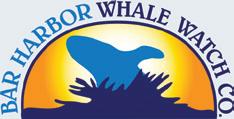

Taylor ’06, lead naturalist at BHWW, have taken on leadership roles in the organization. Committed to whale conservation and education, BHWW has provided $20,000 annually to COA Allied Whale for many years.
Scott R. MacKenzie is an individual donor to COA Allied Whale who has transformed the photo identification program over the past 10 years. To learn more about Scott, please read his profile following this story
Many other committed donors who care about ocean conservation and marine mammal protection support COA Allied Whale in amounts ranging from $10 to $5,000 each year.
If you would like to make a contribution to Allied Whale, please visit them online.
By COA Allied Whale Photo-Identification Catalog & Development Manager Mindy Viechnicki
GROWING UP in East Millinocket, Maine, Scott MacKenzie was captivated by the wonders of nature. A voracious reader with a deep curiosity about the world, he eagerly awaited each new issue of Scientific American, always thirsting for more knowledge. But Scott’s passion for discovery wasn’t confined to the pages of books— he actively sought out adventure. Whether spotting a beluga whale in the Penobscot River or identifying a rare tree species that saved his family’s Christmas, his childhood was filled with awe and wonder.
That curiosity stayed with him throughout his life and has shaped his approach to philanthropy. Today, Scott is a dedicated philanthropist, channeling his lifelong love of science and the natural world into supporting cuttingedge research and conservation efforts, particularly at College of the Atlantic Allied Whale.



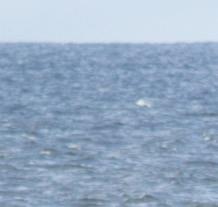


Scott’s journey from East Millinocket to becoming a major donor to Allied Whale is deeply intertwined with his childhood friendship with retired Allied Whale Research Associate Tom Fernald ’91. Their bond, forged at age four on the slopes of Feeney Hill behind Tom’s grandmother’s house, has been a constant throughout their lives. Racing down the hill on cardboard sleds and spending countless hours together at the local library exploring books on astronomy and the natural world, Scott and Tom shared a deep love of science and exploration that fueled countless adventures.
Though their geographic paths eventually diverged—
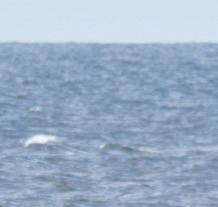
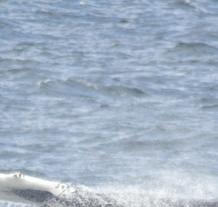

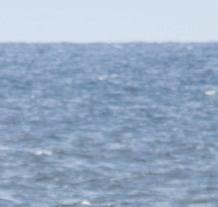

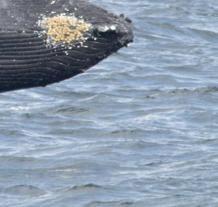




Tom studying marine biology and working with whales at College of the Atlantic while Scott moved south for new opportunities—their friendship remained unwavering. Despite the distance, they stayed connected, and it was Tom’s work at Allied Whale that sparked a new chapter in Scott’s philanthropy.
Inspired by Tom’s commitment to whale conservation, Scott began supporting Allied Whale in 2014. COA’s pioneering work in the study of North Atlantic humpback whales, especially the development of photographic identification techniques, resonated deeply with Scott. In 1977, Allied Whale published the first catalog of North Atlantic humpback whales, which initially contained just 120 individual whales. Since then, Scott’s generosity has been a driving force in the expansion of the North Atlantic Humpback Whale Catalog, which now includes more than 12,000 whales. This critical work in tracking migratory patterns, studying whale populations, and monitoring their health is essential for the conservation of these magnificent creatures.
Over the past decade, Scott’s contributions to Allied Whale have totaled more than $1 million, playing a pivotal role in supporting the ongoing research and conservation efforts that continue to shape the future of marine biology.
Scott’s giving isn’t limited to whale conservation. His commitment to preserving the beauty of our planet—as wide-ranging and boundless as his childhood curiosity— spans many organizations.
When asked what drives his philanthropic efforts, Scott simply says, “It’s good to give back.” For him, this philosophy is rooted in a belief that each of us has a responsibility to make a meaningful impact on the world. Whether it’s supporting groundbreaking scientific research, protecting marine life, or contributing to the greater good of the planet, Scott’s generosity is a reflection of his values and his commitment to the world around him.
Scott and Tom’s 65-year friendship remains a powerful force in both their personal lives and their shared efforts to protect the natural world. Even in retirement, the two continue to explore the wonders of nature together—most recently traveling to Wyoming in search of dinosaur bones.
Scott’s support of Allied Whale reflects the enduring power of curiosity and friendship. From their beginnings in a small Maine town to their ongoing adventures, Tom and Scott are helping to shape a future where the next generation of explorers, scientists, and conservationists can continue the work of protecting our planet.
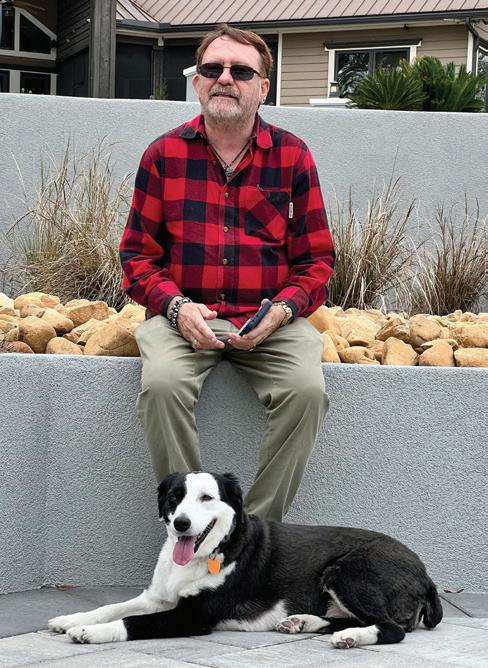
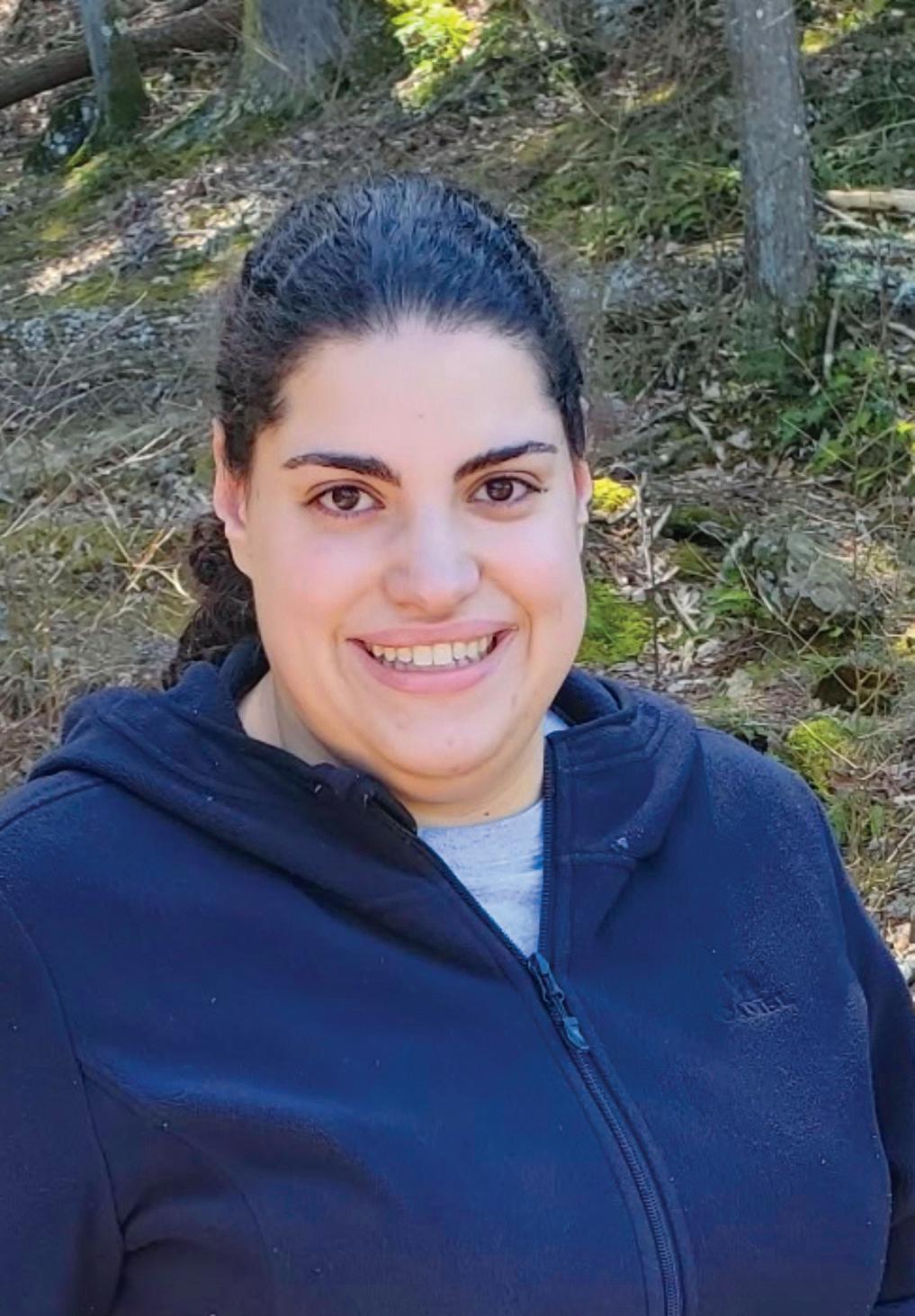
By Kiera O’Brien ’18
F OR LAUREN PEPPERMAN ’16, sustainability has never been a mere buzzword. Instead, the term encompasses a dynamic set of passions, pursuits, and questions discovered during her fi rst term at COA that she has nurtured and expanded upon ever since. Pepperman—now a sustainability developer for IKEA in her home state of New Jersey—considers hers a typical COA experience in that her student journey was entirely unique. “It was a whole process of experimentation,” she says. “I milked every experience that COA had to offer!”
Initially, Pepperman gravitated towards the technical aspects of sustainable energy. “I came to sustainability through the engineering side of things, starting with Physics and Mathematics of Sustainable Energy taught by Anna Demeo and Dave Feldman in my fi rst year.” Her passion was clear from the outset. “I immediately fell in love with sustainable energy, thanks to that fi rst class.” But she wasn’t certain how she wanted to apply her interest. “I didn’t know if I preferred engineering over the social part of the equation,” she explains. It wasn’t until she took a class on sustainable business models with Sharpe-McNally Chair of Green and Socially Responsible Business Jay Friedlander that all the pieces fi nally fell into place. As part of the course,
Pepperman consulted for Milbridgebased nonprofit Mano en Mano, an organization dedicated to supporting immigrant and farmworker families across Downeast Maine. Tasked with developing meaningful strategies to make the organization more sustainable, she quickly realized that before she could offer useful solutions, she would have to adjust her own notions about sustainability.
“Up to that point, my only understanding of sustainability was in terms of energy effi ciency: we need solar panels, we need to look at the heating systems in the building, we need to consider heat pumps,” refl ects Pepperman. “But none of that was relevant for Mano en Mano. For them, sustainability meant time. How do you eke out more time? They are a powerhouse organization and couldn’t have a more hardworking team, so they needed to fi nd a way to use staff hours more effectively.”
In the end, Pepperman focused on identifying digital interfaces that could replace the organization’s outdated paper filing system. “Working with Mano en Mano opened my eyes to the idea that sustainability is a lot like human ecology: how you defi ne it becomes a critical question.” Like human ecology, sustainability requires a deep commitment to both context and community. “The basic defi nition
of sustainability is ensuring that there are resources for future generations without compromising the needs of the current moment. But at the same time, it's all about effi ciency. And asking how you can do more with less.”
Today, Pepperman explores similar questions on a much larger scale. “At IKEA, we have a detailed sustainability plan built into our business. It's my job to ensure that we execute that plan. I do everything from working on solar projects at our distribution center to securing electric vehicle chargers to educating community partners and team members about what sustainability means in the context of our work together.”
Pepperman is grateful to have found success by pursuing a passion she discovered as an undergraduate. “That doesn’t always work out. I feel very proud and very lucky to be doing work that I care so much about and sharing that passion with others.” She’s familiar with the invigorating feeling that comes with “truly falling in love with what you do,” something she fi rst experienced in her sustainable business class with Friedlander. It’s a transformative experience she identifi es as a trademark of any COA education: “I have not met one COA student who, by the time they leave campus, does not know what they love to do.”
By Sylvia Torti

JOSÉ WAS IN HIS CAR on the street when I pulled into my driveway. I think it was summer, though I can't remember for sure. If it was summer, then I know it was hot. My windows would have been rolled up, the air conditioning on just enough to keep my mood in the tempered zone. If it was summer, the Utah sun would have been brilliant and constant, the air dry and brittle, and getting out of my car, I'd feel the familiar absence of trees. I'd look around, squint through my sunglasses and wonder how I ever came to live in an American desert.
I shut the car door, raised my hand toward the street. Though I'd spoken with him on the phone to give him directions, José hadn't yet gotten out of his car, and so I didn't know what he looked like. I also didn't know that his real name wasn’t José.
Basins collect things. Water, soil, rocks, bones, anything that follows the laws of gravity. Salt Lake Valley is part of the Great Basin—that "huge heart-shaped" stretch of western landscape formed from slips in the earth's crust, faults along areas of implausible earthly weakness. It's an endorheic basin, which just means water flows in and gets stuck in the low spots. There is no river or stream going downhill. There is no way out. Except, that is, to change form.
My younger sister, who was living in Salt Lake at the time, had called from work. A young Mexican man, who didn't speak English, had shown up at the furniture store looking for a job. She knew I had a bathroom project going on and the sanding was going to take a long while. She thought I might hire him. My arms were tired, and I was anxious to get back to writing my novel, based on the Zapatista Rebellion of 1994 in Chiapas, México, and so I agreed.
José got out of the car. He wasn't much taller than I but more muscular. His hair was straight and black, his cheekbones broad, his skin dark. We shook hands and introduced ourselves in Spanish, and I remember thinking that his hands were small for a man's. We went into the house. I showed him the work, and he agreed to the job. I gave him an electric sander and a mask and left him in the bathroom, and then I went back down to my basement to write.
Of course, it's only called "the" Great Basin. It's really a multitude of basins, each one collecting its own bit of precipitation, the melted snow that falls each winter and accumulates for a while in the spring. But when the dry heat arrives on the first day of summer, as it doesrelentlessly and constantly--evaporation quickly exceeds precipitation. The van der Waal's forces between water molecules are broken, and each molecule is pulled up into the dry air and held in its new form as vapor. We're left with the salts. White salts that form a reflective film over the dry, gray soil.
I'd started writing fiction about Chiapas in 1998, the year before I met José, as a way to process my experience there. I had arrived in Ocosingo, Chiapas, on New Year's Eve 1993, and after a walk-through town with some Mexican, Venezuelan, and American biologists to buy an old and very tough chicken to grill, I'd gone to bed (a sleeping bag on the tile floor) thinking about bird surveys, coffee plantations, and the shady rainforest. We woke before dawn the next morning and prepared to go out and in the foggy morning air; we found not birds but young men with bandanas over their faces, rifles in their hands. During those first days of the Zapatista Rebellion, I'd clung close to what I knew: Latin American history (though sketchy when it came to México), the lilt
of the Spanish language, and tropical plant identification (Lantana, Ceiba, Simaruba). There was the new and unsettling sense to my twenty-four-year-old self that the world could shift at any moment.
Ocosingo is also a basin, just not an endorheic one. Over one hundred inches of rainfall per year. The soil and air are wet because here precipitation exceeds evaporation; rivers flow out and down toward the forest and then the sea. Ocosingo is a lush, green, and highly productive valley, which is why cattle farmers took over the land and why Indigenous groups were pushed up into the marginal lands on the hills or, worse yet, into the wet rainforest where they didn't know how to make a living. It's a basin that over the millennia has collected species, temples, and stories all hidden below reddish-brown soil and broad green leaves.
Novelists collect things too. We collect and then filter consciously and unconsciously before we process and produce on the page. So far in my novel, I'd written a story from the perspective of an American biologist, a woman who understood neither the Spanish language nor Latin culture and who had, prior to arriving in Chiapas, never been out of the United States. I'd written another story from the perspective of an Indigenous woman fighting with the Zapatistas. (She came out of glimpses of Zapatistas on the hillside and my own love of trees and the rainforest.) Those two stories read to fellow writers, grew to four stories as I rounded out the character to include a male biologist from a prominent Mexican City family (loosely fashioned after an American biologist friend) and a soldier in the Mexican army who was sent to fight the Zapatistas (based on no one I could muster).
I checked in on José an hour later, offered him a glass of

water and engaged in a bit of chitchat. His Spanish was hard to understand because his accent was unfamiliar to me and he used words I'd never heard. And perhaps, as I now guess, Spanish was not his first language because in late conversations I learned that he'd grown up in Guerrero, where many people don't speak Spanish.
In an effort to connect, I told him I'd been in Chiapas in 1994 and that I'd been there during the Zapatista Rebellion. To my surprise, he said he’d spent time in Chiapas too. We discussed timelines, and it turned out that he’d arrived just after I'd left. It also turned out that he'd been in the Mexican army and sent to Chiapas to fight the Zapatistas.
So here, in my home, by a strange coincidence, was a man who embodied the rough outline of Mario, the soldier character in my story. What did I do? I did what any writer would do. I started to collect. I asked him questions, lots of questions. What was it like? What did you eat? What did you think then? What did you feel? What do you think now?
When José left my house that first day, he hesitated at the front door, reached into his back pocket and pulled out his wallet. He held two cards in front of me. ''José is not my real name," he said. "It's the name on this card but I want you to know my real name. I don't like to lie to people." I leaned in and took note of the second identity card and his real name.
If you were to ask me now, I could not tell you what name I read. l've forgotten, perhaps never recorded it, but as I said, novelists collect stories. know that José, the man in my house, whose real name wasn’t José, became, Mario, born in Guerrero, and Mario spoke in my book.

My cousin, Domingo, told me all about it. He's been going for years now, working odd jobs. There's even some rich woman who gives him easy work whenever he wants it. He just shows up at her house, and she asks him to weed the garden or wash the car, and she pays him double what he makes doing anything else.
During the months that followed, José came over a number of times. Sometimes I'd have a job for him, sometimes he'd simply stop by, usually around dinnertime, and we'd set an extra plate on the table and eat together. And then, suddenly, he didn't come anymore. I continued writing, taking what he'd told me about the awful army food, the tough horsemeat, the cold mornings, the utter misery he felt in Chiapas, and worked them into the novel.
A few months later, when there was a ring at the door, José was back at my house. He'd been to Kansas, he said. Working in a chicken factory. He wanted to know if I had a job for him. It was fall, I think, because I remember raking
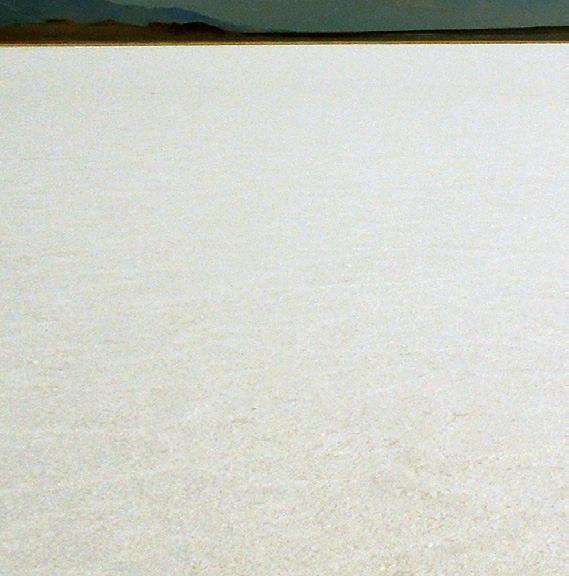
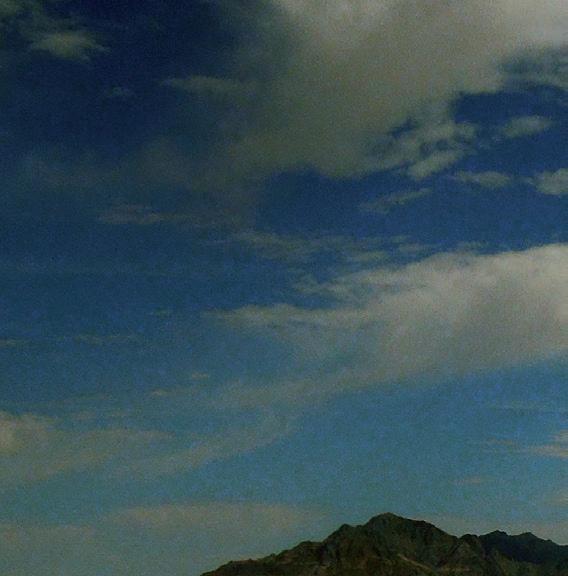
A brief interview with COA President Sylvia Torti
SYLVIA TORTI: I was compelled to do a lot of writing when I was an undergraduate student at Earlham College. I really enjoyed it and I became a better writer over time. As first-year students, we were reading and writing a bunch, and that is when I fell in love with ecology. When you think about it, ecology is all about storytelling. I just loved the stories of how organisms were going about their lives and interacting with one another, and the forces that shaped them in terms of adaptations, evolution, competition, and mutualism.
DAN MAHONEY: From there you decided to be a writer?
ST: No. From there I decided to do tropical biology. Tropical ecology, because I wanted to go to Costa Rica. I went for a three-week course in the Monteverde Cloud Forest Biological Preserve, and I got stuck in the mud and there were these butterflies flying around and hummingbirds everywhere. And I remember thinking, I love this. I ended up applying to grad
leaves in the front yard together. We chatted in the cool air, and he told me about the chicken farm, the dust, the smell, the midwestern summer heat. He said that after he bought better papers, he could get a better job. He wanted to buy a car with new hubcaps. Something that would shine in the sunlight.
Mario spoke: Last year he worked on a chicken farm.''The gringos have huge farms just for chickens," he told me. We laughed hard at that. Everyone knows that the guys who travel across the border are called pollos, chickens. ''Los pollos killing los pollos," we said. "I hated wringing and plucking and cutting up chickens from morning to night", he told me. "You couldn't breathe with the heat and all the feathers flying around. We were supposed to wear white masks over our noses and mouths, but it was so hot we couldn't bear them.We breathed feathers and chicken shit all day long, but I made out good, good enough to buy real papers, good enough to get a real job."
school not knowing anything about grad school.
DM: So, Utah is where you began writing?
ST: Yes, Utah, however I went to grad school not as a writer, but as a scientist with research focused in the tropics. The irony is that it was only after I got to the tropics that my writing started to change and develop. I was in the Congo, sending letters and written snapshots to my husband at the time, and he really encouraged me to write more fiction because he thought I was talented. I remember thinking that I was not a fiction writer, but I was in the Congo for four months doing a lot of solo research, so, in my off time, I began to play around with stories and fables. That was the start of becoming a fiction writer. I really credit him with getting me going down that road.

DM: That’s fantastic. You had a good reader. We all need a good reader.
ST: True. I have since found other really valuable communities of

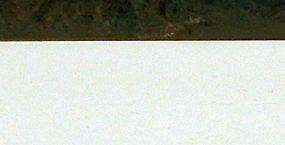
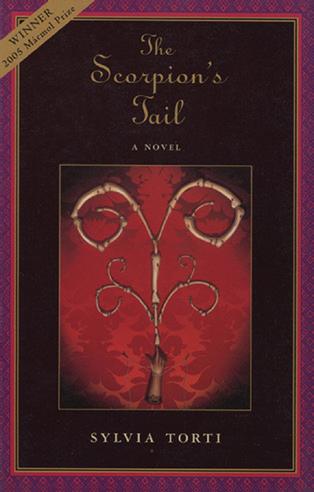

readers and writers. It is essential to have community. Anyway, after returning from Africa, I was thinking about doing my PhD research in Chiapas, Mexico, and was there when the Zapatista rebellion began. I started writing my first novel, The Scorpion's Tail (Curbstone Books, 2005), as a way to process my experience in Chiapas. In hindsight, I probably created fictional characters because the whole experience was pretty traumatic. I wrote a little short
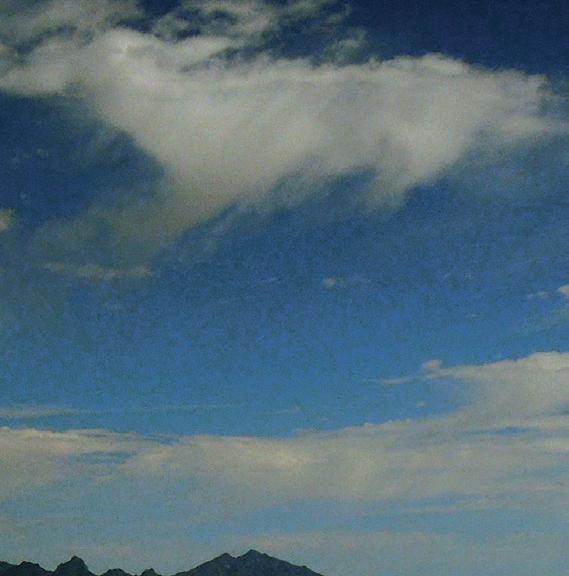
It is entirely possible to live in Salt Lake City and only speak Spanish. There are Josés in every restaurant, grocery store, and hotel. Josés are roofing our houses, weeding our gardens, cleaning our kitchens. They move in for a while. They work. They send money home. They play soccer and volleyball in the parks on Sunday. In the bright light, we barely see them, never know them. And then they are gone.
The Great Basin is being inextricably pulled apart by tectonic forces. The distance between Salt Lake City and Los Angeles grows every year. Every time I think about this, I envision the earth silently ripping, a small tear forming along parched skin, while those of us standing on the edge slip down and under.
Winter arrived with its dry cold, and the sun still shone— harsh and blinding—as it often does in Utah. José didn't come anymore. I finished my novel, and it was published.
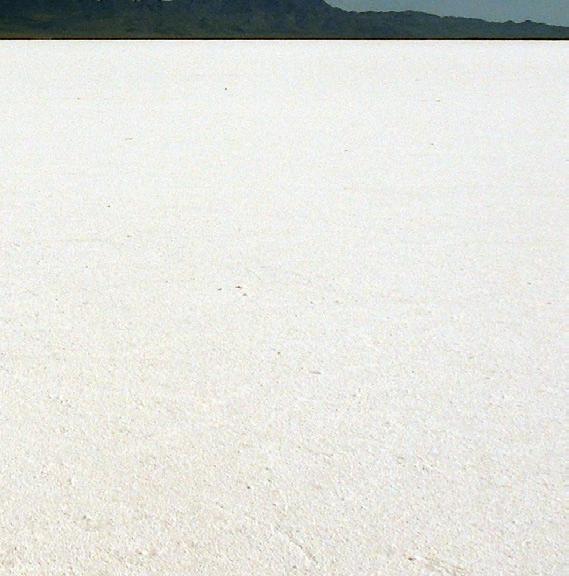
story about a character in Chiapas. And then I wrote about another character. And that is how the book took shape. But it has taken me a long time to think of myself as a writer.
DM: Do you feel like you're a writer now?
ST: Yes, I feel like I'm a writer at this point. I process the world through writing and I feel the most alive when I'm writing. When I think of ecology— ecology is all storytelling— it's no surprise that I was drawn to it. I didn't like molecular biology, I didn't like chemistry, I never took physics. I never took calculus. I'm a humanist who happens to have a PhD in ecology. When I look back on The Scorpion's Tail now, I think of it as me trying to engage with the ecology of the rebellion.
DM: Oh, I like that, the ecology of the rebellion. Ok, so you finish that book, you're in Utah with a PhD, and how did your next book, Cages (Schaffner Press, 2017), come into being?
ST: I was working as a plant conservation biologist at the Red Butte Garden and Arboretum in Salt
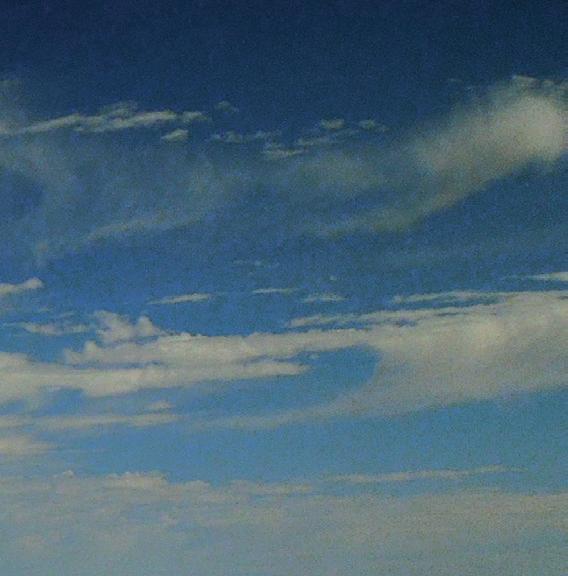
And still I think of him. Did he finally buy that car he wanted, the one with shiny hubcaps? Or did I make that up? Did we ever speak of cars, or did I put those thoughts into Mario and then transfer them back onto José? I believe we spoke of horsemeat in Chiapas and the cold one would feel twenty kilometers outside Ocosingo. But did we? Today, I am unsure. Why can't I remember his real name, and where did he go?
José is present in the way that certain people come to inhabit our lives. Catchments. Mirrors. Mirages. Spaces we seek out, visit and return to in our continuous need to collect stories. Spaces that last for as long as they do, and then, with the shift in the season, they suddenly change form, like water vapor pulled into the shimmering Utah sky. Stories, absorbed into our minds, that become companions to our often-lonely lives.
Lake, developing programming for them, but after a couple of years I got bored with the limitations of the job and decided to join the birdsong lab at the University of Utah. I thought I'd reinvent myself as a physiological ecologist and the principal investigator, Franz Goller, was happy to have me hanging out there, feeding the birds, cleaning the cages...
DM: Wait, like the Rebecca character in Cages? The lab as a place of intrigue…
ST: I think, to some degree, I am all the characters in the book. And, intrigue, yes. What I found most intriguing was that you had all these guys studying communication, and they were terrible at communicating. They never talked about anything personal.
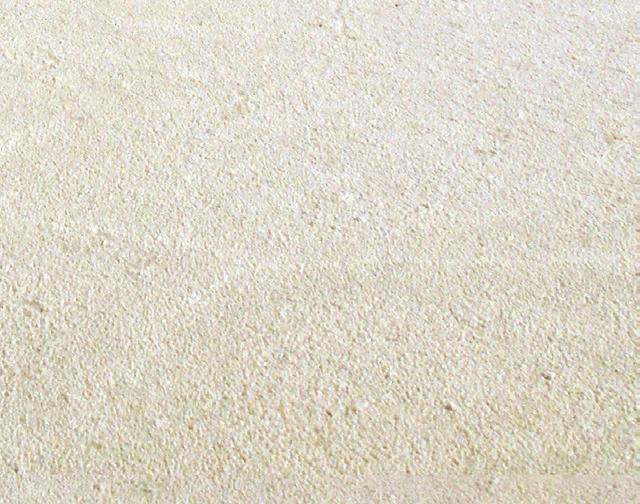
DM: Right. It's great to see the characters in the book wrestle with how to act inside and outside the lab. The two scientist guys never really seem like they are fully outside of the lab. I loved all the science in this book, and you have notes in the back.
ST: All the science in the books is real science. The bird stuttering experiments, birds dying in your hand… The auditory feedback… A
bird needs to hear itself in order to maintain its song. The character of Ed is based on Ted Parker, who was huge in birding and ornithological circles.
DM: Yes, Ed! I love it that there was this elite squad of scientists who parachuted into remote jungle areas to catalogue species… That's some extreme science right there.
ST: Scientists are fascinating. And I'm a scientist too, but I really find scientists to be an almost entirely different species. They're so interesting.




One of the best parts of being the editor of COA is I get to spend time talking to my colleagues about the work they do at the college. What a gift, being forced to spend time listening to really smart, engaging people talk about their passions.
I loved my time as a college student—once I actually accepted that role—and I wanted to be nothing else. I spent many years getting my BA, many more getting my MFA… I would do it all again. The spaces where talking and listening and learning happen are charged spaces, magical spaces, (un)safe spaces. Spaces like that have always been a draw for me.
COA is a space like that.
Enjoy the Reciprocity
—Dan
WHENTHE SUBJECT of food apartheid comes up, I know I'm out of my depth. I'm talking with Partridge Chair in Food and Sustainable Agriculture Systems Kourtney Collum, thinking all is well until I'm suddenly swimming in a pool of uncertainty. So begins my (re)education into food politics and food justice that Collum brings to the table. To tell the truth, I've existed long enough in cities, towns, and rural America to understand the inequities of distribution, but the entire time I spoke to Collum I felt like I was arriving late to the jigsaw party, like I was a small part of a giant puzzle worked on by many, many hands. Collum teaches classes on the human dimensions of food systems and the cultural, social, political, and economic side of food in the United States. About a minute into our conversation she drops food apartheid
DAN MAHONEY: So… is food apartheid like food deserts? I know about food deserts.
KOURTNEY COLLUM: Food deserts are a thing, but we call them food apartheid now.
DM: No, we don't...
KC: Yes, we do, though some people still use the term food deserts... but the terminology change draws attention to the fact that a desert is a natural phenomenon, right? When we're talking about communities that do not have access to healthy food there's nothing natural about that; it's really due to inequality, economic oppression, and systematic racism.
DM: I see. Well, it’s hard to argue with that point.
KC: The USDA still uses the term food desert, but food justice activists say, no, this is food apartheid. If you look at the city, some neighborhoods have access to a bunch of grocers, farmer's markets, and Whole Foods or Trader Joe's, and in other parts of the city wholesale distributors will not deliver food... or there aren't sidewalks or streetlights… the infrastructure is crumbling.
DM: This is mostly a city sort of thing.
KC: Mostly a city thing, but rural food apartheid exists, too. Which brings me to Transforming Food Systems, a class I teach every year at COA. The class assumes that students come to college with a critical view on food systems. I haven't always approached the class this way, I used to begin by trying to convince students that there was something wrong with the food system and then we'd be able to get into it. But now they all come with critiques, they watch food documentaries in high school, they've read Michael Pollan, and they have a sense that there is something fundamentally wrong. That class is
about how we create systematic change in the food system through social movements, policy change, and advocacy.
DM: My big question is, how do we create change in the food system while allowing me to have avocados in the winter?
KC: I don't personally have a problem with avocados, but I remember when I first got to COA there was an email war after a student asked where they could find avocados. Responses were all about the ecological footprint of crops and the morality of eating something not native to the area you live in... The next day in class I pointed out that this sort of individual shaming is part of the problem and how the entire system of neoliberal capitalist agriculture tries to convince us that change is made through individual choices. Vote with your dollar, right? The popular assumption is, If you care enough, you'll buy the good local produce. But by confusing consumerism with citizenship, we completely alienate people who can't afford to participate through the market.
DM: That's so good. It reminds of the graduation address Naomi Klein gave in 2015. She was talking about her book No Logo and how she'd hoped the book and her lectures would serve to rally people to petition governments for policy changes to protect workers, allow them to unionize, and reform global trading systems... She said at the end of each lecture she gave, the first question an audience member would ask would invariably be, Yeah, but what kind of sneakers should I buy? So, I guess the message folks were getting was if I have the right sneakers, I won't be shamed.
KC: Exactly. If we move away from individual shame, we can focus on the structural issue, how the structure works. But sure, if you can afford it and you care, buy the pesticide-free carrots, but realize that not everyone can do that. So, we look at policy. How can we lobby the government to change those regulations? It’s hard to get governments to do anything, how do you force them into action? Social movements. We look at La Via Campesina and other examples of movements from around the world that use collective action to transform systems.
DM: Klein said she thought she was building a movement and ended up becoming a shopping advisor. Which, I guess, buying the "right" thing is an immediate response to an existential problem, but it does get back to that confusion between consumerism and citizenship.
KC: Another tension in classes I teach is, how do you address immediate needs through things like emergency food systems, while doing the long work of creating structural change?
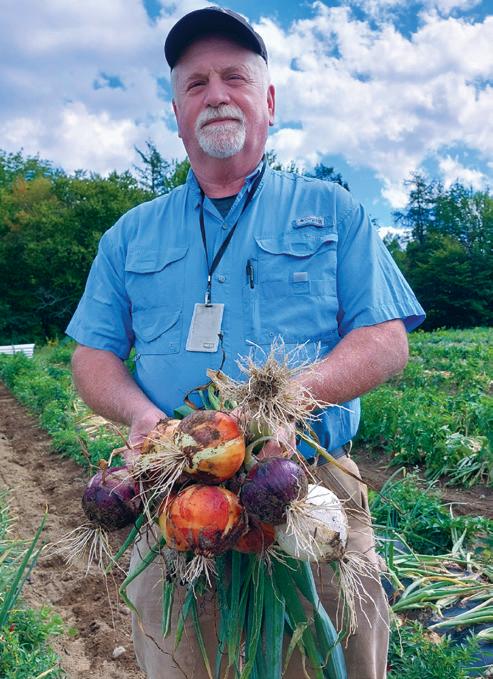
DM: It's hard to do both... Where does one begin?
KC: Many organizations can’t do both. But I encourage students to intern with nonprofits so that they have a more nuanced understanding of the challenges of changing systems while providing essential services. I try to partner with a lot of local organizations to fund internships. I 've been working with dean of institutional advancement Shawn Keeley ’00 and grant writer Kelly Dickson MPhil ’97 writing grants to fund internships with organizations that wouldn't otherwise be able to pay interns. [Shout out here to The Seth Sprague Educational and Charitable Foundation for their commitment to this cause] One of the problems that nonprofits face is that their employees often need the very services they provide because the nonprofit cannot afford to pay competitive wages. Most students need to find funded internships to survive. They can’t survive a summer with no income. If we can write grants to help fund these internships, everyone benefits. We’ve had several students intern with Healthy Acadia in their gleaning initiative. The students go to farms in the community and collect the produce the farm hasn't had the capacity to harvest. The gleaning initiative takes what they harvest and delivers it to soup kitchens and food pantries in the area. This summer we’re funding an internship with Healthy Acadia’s Downeast Restorative Harvest project, which is a partnership with the Washington County Jail, Maine Department of Corrections,
and a few other community partners. A goal of that community garden is to improve access to healthy, nourishing food for jail residents, and ultimately reduce recidivism through programing that helps folks attain agricultural skills and healthy relationships with their communities through food. It’s about recognizing healthy food as a basic human right and a source of dignity.
DM: I love the idea that healthy food is a basic human right. So simple when you think about it.
KC: Another partner in the project working to transform carceral systems is an organization called Impact Justice. They are working in many areas of prison reform, including food. They just recently put out a big report on the state of prison food from around the country and documented truly terrible dining conditions: serving rotten, unhealthy food, sometimes not even meant for human consumption, and food that was not culturally appropriate... Basically, they found that food was being used as another form of punishment. Not surprising, really. However, they also highlighted the best programs in the country, some of which happen to be in Maine. Mark McBrine, the food services manager at Mountain View Correctional Facility in Charleston, Maine, will be coming to campus in winter term to talk to a class director of A/V services Zach Soares ’00 and I are teaching on the state of prison food.
DM: What is the name of the class?
KC: It's called Prison Food Systems: An Audio Production Course. McBrine's story about food reform is instructive. When he first started in the kitchen at Mountain View it was a lot of white bread, sugary baked goods, canned foods, and frozen egg products… in addition to being really expensive. Under McBrine, they cancelled their bread contracts and started making their own bread, bagels, and biscuits using flour milled at Maine Grains, and they also started growing organic produce across the street on six acres leased from the Department of Inland Fisheries and Wildlife. The result has been better, more nutritious, good-tasting food. And they’re running a culinary training program that places folks in restaurant jobs when they are released.
DM: Wow. That is something that makes a ton of sense and something I would have never thought about.
From the website of Impact Justice:
“Prisons function as out-of-sight food deserts, perpetuating patterns of poor health in communities that already experience profound inequities. The growing movement for food justice will not be complete until it reaches inside prisons and jails.”
DM: Let's talk about Bees and Society. I love bees.
KC: In that class we look at the human relationship with bees over time... We've been obsessed with bees for more than 10,000 years.
DM: Because bees are adorable.
KC: They are. They're very charismatic. That human/bee relationship is part of what we look at, and the other part is looking at bees in contemporary food systems. Our food systems are really dependent on pollination, primarily from domesticated honeybees. We do a lot of fi eld trips and bring people in like Maine State Apiarist and Bee Inspector Jennifer Lund.
DM: There's a Maine state apiarist?
KC: Yep. Her job is to serve as a resource for every registered beekeeper in the state. Everyone who keeps bees in the state of Maine is supposed to register. COA has fi ve colonies of bees which costs $10 total to register, so it is inexpensive. When a colony dies, Lund will come do a hive autopsy (really a necropsy) and diagnose why the bees died… it’s pretty amazing to see. And we'll also visit places like Swan's Honey, the biggest beekeeper in the state. Swan's has around 4,000 colonies—which is on the smaller side of commercial beekeepers nationally who sometimes keep as many 80,000 colonies.
DM: And are all those bees local to where their colonies are?
KC: It gets complicated in a hurry. Apis mellifera, the honeybee that was domesticated for crop pollination, is technically non-native. It’s a European honeybee, but they’ve been in North America since the 1600s. Most queens these
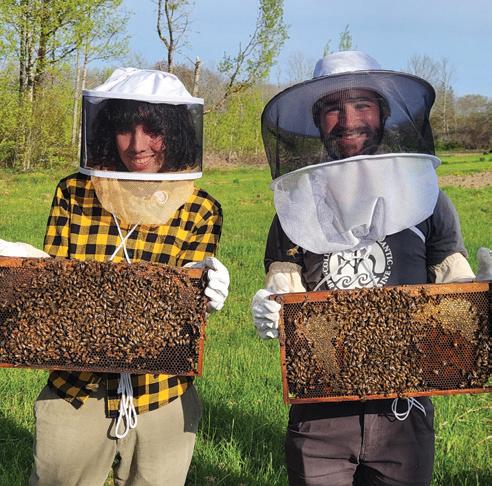
days are coming from Hawaii, Australia, New Zealand. They get shipped out and sent all over the world. But there are also small-scale beekeepers who, in addition to selling wax or honey, will breed queens for extra income. So, if your colonies are in Maine, you might want a queen who was reared here, who has the genetics of bees who have successfully survived Maine winters. Someone breeding queens that have successfully overwintered in Maine can sell 20 or 30 mated queens for $50 a pop… that's good income.
DM: So many moving parts. It just seems nuts to me.
KC: Speaking of nuts, we go visit this amazing woman, Erin Evans in Portland... She is completely nuts in the best ways. Erin is the person who got me into beekeeping. She's always on the move, always has a new idea. At the time she was the controller for Allagash Brewing and now she’s the director of finance at Maine Audubon, but in addition to that she’s had a beekeeping business for well over a decade with around 100 colonies in her backyard in Portland. She lives along a row of power lines and when the power company came to clear one year, she talked them into removing the invasive plants and giving her the money to plant native plants. She’s created a permaculture oasis in this urban landscape where she could keep her bees. The power company agreed! Erin can talk anyone into anything.
DM: Fantastic.
KC: Now in addition to her bees she has goats and chickens. She's the former president of the Maine Beekeepers Association and a master beekeeper—which is a designation you can get that requires specific training. There are only a few master beekeepers in Maine.
DM: How did you meet this Erin Evans?
KC: I was finishing up grad school, living with my partner in Portland, and working with blueberry farmers who were dependent on bees for pollination, and I thought I should understand beekeeping, too, so I could better appreciate the problems these farmers were facing. When I reached out to Erin she said, "If you want to learn about bees you've got to keep bees. Come back on Saturday. You're gonna keep bees with me this summer."
DM: Learn by doing.
KC: Exactly. There's a group in Southern Maine who are training a whole new generation of beekeepers. They have open-hive demonstrations where you go do hive inspections with other folks so that you can see what kinds of problems they're dealing with, which helps you with your own bees. It's a dynamic system of mentorship; someone mentors you, you learn the skill, and then mentor someone else.
DM: Talk about gift exchange. That is living the life, right there.
KC: They are an inspiring community.
HAS ALWAYS been social for me… a social process and a social act. I've never really been motivated by my own virtuosity, though I do pride myself in having developed a craft. I love to practice the craft I've developed over years, and I have some amount of facility—or even expertise at moments—but virtuosity has never really appealed to me as an end in itself.
What I love most is to be in the creative pressure cooker with a bunch of people trying to fi gure something out together. And I love the social dynamic that comes through those kinds of collaborative art projects and music projects. That's what, in a sense, pushed me towards ethnomusicology, because it's the study of music as a social and cultural phenomenon. It's collaborative.
Working on Futurity [a collaborative musical performance produced at COA in 2023, co-taught with Joanne Woodward & Paul Newman Chair in Performing Arts Jodi Baker] was such a good model of collaboration and reciprocity for me... It was deeply collaborative in a genuine way. Jodi and I facilitated the thing and made it possible to pull off, but the students took real responsibility for major components of the work we were making together. Margit Hardi ’24 choreographing, Hanako Moulton ’25 and Kaia Douglas ’25 doing vocal direction, and costumers Elena Brotz ’24 and
Pigeon Voigt ’24... People took on these huge pieces of work and committed fully to the process. Through that, we were able to create something that was just so much cooler than it would have been if Jodi and I tried to micromanage all of the different parts. It becomes so rich when you are pulling from a bunch of different, and sometimes disparate, perspectives.
There's a word in Portuguese, Antropófago, that translates as cultural cannibalism... [Brazilian poet, Oswald de Andrade, wrote a poem in 1923 called the Cannibalist Manifesto celebrating Brazil's history of "cannibalizing" other cultures into their own diverse cultural mix.] In the 1960s bands like Os Mutatntes and the entire Tropicália movement built an aesthetic around this principle... They were eating widely from musicians across the globe, then making it their own. Caetano Veloso famously said of the Tropicálists, "We were eating the Beatles and Jimi Hendrix."
That sort of movement is something that I prioritize in my teaching. Paul Gilroy, who was an influential academic for me, wrote a book called The Black Atlantic where he advocates for attending to the routes of music and culture rather than the roots. This action is about thinking through how culture develops as a process of circulation rather than as disseminating from some pure, imagined point of origin.

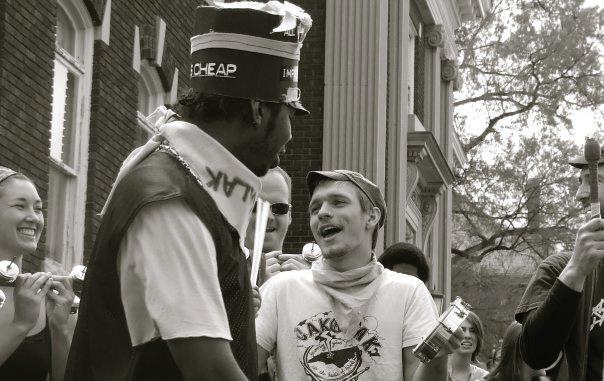
I've had many formative moments as a musician; being in Cakalak Thunder was one of them.
Cakalak Thunder was a musical group/radical street band formed in Greensboro, North Carolina in 2003. We went strong for around 15 years. There were probably 80 people who cycled in and out of the band over that time. This was during a moment in time [the early 2000s] where there was a real uptick in street actions… the anti-globalization movement, the anti-war movement were having large-scale demonstrations. For us, it was an amazing way to participate in those spaces by showing up with a well-organized crew to contribute something specific. We would work with organizers to help conduct people in one direction or another because, when it comes down to it, people will follow a marching band.
There were other people doing this eclectic marching band music for popular liberation. The Infernal Noise Brigade from Seattle was a big source of inspiration. They were born as part of the mass protests against the WTO in 1999. Drums and concussion grenades. A bunch of bands cropped up after those protests... It was a great experiment in collective organizing… a great learning experience in and of itself. Originally, Cakalak was making our own music until a dear friend, who had been living in Stockholm studying samba with an Uruguayan teacher, came back to Greensboro and taught us samba via Sweden, via Uruguay. The band learned samba like a game of telephone. But that experience got me so interested that I sought out Brazilian teachers in the area and, later, traveled to Brazil to study the music.
Samba music offers a certain accessibility that very few other musical styles do because you really can start at square one and contribute to some great music very quickly without a ton of experience. You pretty quickly get to be part of the band and help create this big ensemble sound, which then means you can be of service to events happening in the community. Ellie Oldach ’15 works for an organization called First Light in Bangor. They were having a big symposium at the Penobscot Theatre and Ellie wanted us to come and play. So, we showed up outside the theatre and when the symposium ended, we led the participants on a march through Bangor down
to a park where the Burnurwurbskek Singers [a Wabanaki drumming and singing group] welcomed the crowd with a series of songs. It was a great way to let our students be of service to this organization and throw themselves into a social situation they probably wouldn't have sought out otherwise.
First Light is a collective effort across more than 65 non-native land-holding organizations in the Wabanaki homelands now called Maine. They work closely with the federally-recognized Wabanaki Nations through their collaboration with the Wabanaki Commission on Land and Stewardship. First Light’s aim is to relearn the history of the lands, recenter Wabanaki voice and decision-making, and return land to Wabanaki Nations.
We've been fortunate to have amazing musicians come to campus. This fall [2024], we had Debashish Bhattacharya, a virtuoso innovator of the slide guitar from India, and Baba Commandant and the Mandingo Band, from Burkina Faso, came last spring. Both were amazing concerts to host. When Baba Commandant came, I was teaching a class focused on independence movements in Africa from the 1950s through the 1980s, and the relationship between those movements and popular music at the time. The morning after Baba Commandant’s performance, the band visited our class and the students had the opportunity to perform the musical repertoire we had been working on for them. And Baba Commandant knew all the music we were playing— particularly Bembeya Jazz National’s Armée Guinéenne, which was an iconic song from their parents’ generation. They were so delighted to hear our students play this music—they ate it up, and gave great feedback that was super generous and supportive.
That kind of interaction [that sort of reciprocity] is just so special, when artists come to campus and students can interact with them... It creates such memorable moments— touchstones those students will remember for a long time... moments loaded with meaning. This is what we, as a community, gain when we crack open our little ecosystems and invite other people in.
[In a devastating blow to the music world, Mamadou Sanou, vocalist and leader of Baba Commandant and the Mandingo Bang died of malaria in Burkina Faso in November 2023.]
My dad has played saxophone for 50-plus years. When he was 13 and a budding sax player, he was walking through a shopping mall in suburban New Jersey when he heard this wild sound coming from the other end of the building. He followed the sound and found Rahsaan Roland Kirk standing on a tiny stage in the food court with four saxophones and a nose flute strapped to his chest. My dad listened to him play, and after the gig he went up to Kirk and asked how he could learn to play like that... Kirk told him, “Start with two.” Since then my
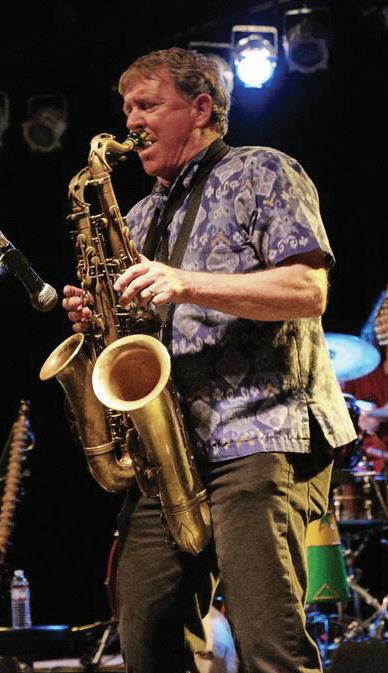
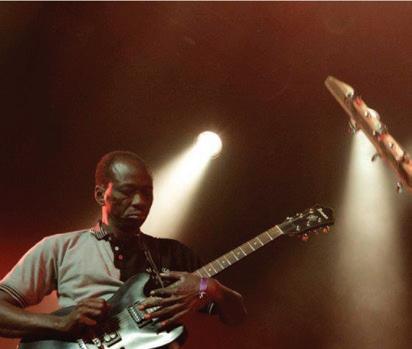
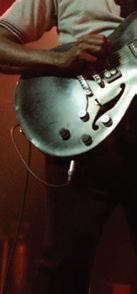

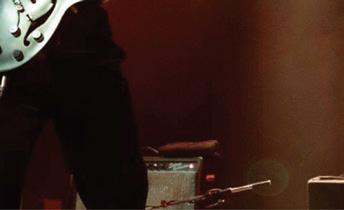
dad has played tenor and alto sax at the same time.
It's a super distinctive thing… he's a great musician. His presence in my life has been one of the greatest influences on me as a musician and as a teacher… His love of playing was always available to me throughout my childhood and music was omnipresent. He's a great resource and I've been fortunate enough to have a variety of great teachers and resources in my life.
When I came to COA, I wanted to make space for other faculty to come and teach music. It's valuable for musicians to learn multiple perspectives; a variety of mentors and teachers makes for better musicians. We have great visitors here. Adam McLean teaches folk music ensemble, music theory, and musicianship classes. Ryan Blotnick teaches guitar performance and jazz improvisation classes—he’s a phenomenal player. Mike Bennett's taught a world percussion class for many years, and Caroline Cotter has just started teaching a great songwriting class. We've had Christina Spurling and Richard Hsu co-teach a chamber music class... a lot of variety.
All of these people are professionals who work in the fields they are teaching, so they are able to share these really specific skills they've acquired with their students. Another cool thing that we have recently gotten up and running is an applied music lesson structure which allows students to take one-on-one lessons with a private tutor for credit. In winter term, we have 12 students studying one-on-one with a host of amazing local teachers.
It's an exciting time to be here because of all that is happening in and outside of the classroom. I'm thinking again of Futurity and how my friend Mark Dixon sent a bunch of hand built
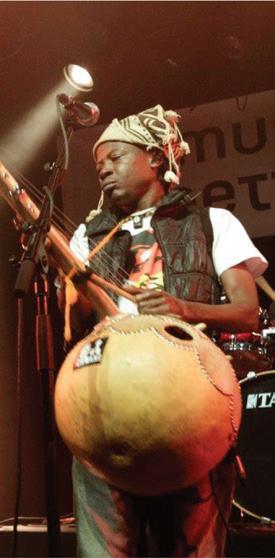
electroacoustic instruments from North Carolina for our students to play during the show… What a gift. The students were able to weave these instruments into the production, and Mark was able to see the instruments he built living in a way he had never conceived of. That sort of exchange [that sort of reciprocity] in an expanded classroom setting is difficult to do, but it is easier to do at COA than in other places. I'd really like to lean into that aspect of the college more and more. We do this experiential, experimental, immersive kind of work with the students because it creates such profound experiences for them, that then reverberates out into the community. For people who saw Futurity, it echoed within them for quite a while after those performances. That's intoxicating. I think those kinds of experiences really can be life changing.
DRIVING across the Penobscot Narrows Bridge, turning right, and thinking I have never been this way before... The rugged beauty, the sunlit hilltops, and the variety of Trump signs was more than I was used to around Bar Harbor. Strange Maine, indeed. I was heading to Monroe in the spring of 2020 to interview Lalage and Steven Rales Chair in Chemistry Reuben Hudson about a COVID-19 bubble course he and his spouse, Kit, were planning to teach in the fall. The idea was to select a cohort of COA students and professors to live and learn together on Hudson's property, effectively creating a pandemic-safe bubble while continuing their work as human ecologists. The property was amazing, a river running through it, a huge butternut tree, the remains of an old mill… everything fit for students and professors to explore. I was in awe of how lovely it was out there and so, when talking to Hudson via Zoom for this piece, I was reminded of how rural his place was when, in the middle of our discussion of organic chemistry, Hudson interjects, "Oh, wait a minute... I might have a tick here. Give me a second... No, that's not a tick..."
I'm sort of out of my depth talking to Hudson: He's a scientist, he lives in a rural part of the state, and he takes it as a matter of course when he sees—perhaps—a tick crawling on his leg. Aside from all of this, Hudson is also a prolific grant writer. "When I came to COA, I had about $20,000 left on a National Science Foundation grant, and I was able to buy an older gas chromatography (GC) machine. But I was so busy setting up my lab and teaching classes that I never really got a chance to use it." This all changed when Hudson got another grant from the Davis Family Foundation and was able to upgrade his older GC to a first-class version. This upgrade meant COA now had state-of-the art analytical capacity, but Hudson ran into the same problem not having the time to take advantage of or maintain the instrument. "Larger labs have a bunch of scientists or postdocs or even have full-time instrument or lab technicians who take care of that stuff, but here it was just me." So Hudson got to work again, appealing to a private donor to help fund a couple of postdocs coming to COA from war-torn parts of the world. Through the generosity of this donor, Hudson was able to bring in Sarah Kheireddine from Lebanon and, later, Anastasiia Pustovoit and Vitali Polubinskyi from Ukraine to help fellow scientists in need, to augment course offerings at the college, and to use and maintain some of COA's high tech instruments.
At this point, you may be saying to yourself, Good news, but what exactly is gas chromatography and how is it important to the work going on at the college? According to Hudson, a GC can both identify and quantify trace chemicals in different samples, which makes it ideal for both college lab classes and for conducting research in the field. Some of the field research in Hudson's lab involves getting in a canoe in the
middle of a lake or pond, pushing a rod with a two-inch barrel (or "glorified straw," as Hudson calls it) several meters into the bottom sediment, then pulling out a sediment core to analyze. Hudson points out that a lot of the techniques for analyzing these cores require fairly straightforward procedures—you take your sample, bake it in the oven to see how much weight is lost, do this for every centimeter, and then examine what is left—but emerging techniques are relying more and more on state-of-the-art instrumentation like the GC.
Hudson normally uses GC to see if a chemical reaction worked. "Let's say you have starting material A and B and you're trying to make C; you can take a sample at the end and inject it into the instrument and see, okay, how much A was consumed, how much B was consumed, how much C was made... When Kit was finishing up her PhD at UMaine, she came up with the idea that we might be able to use GC to quantify the biochemical markers in core samples." In short, they tried it, and the process worked like gangbusters. According to Hudson, his lab at COA is the only one in the Northeast doing these kinds of quantifications.
Pustovoit and Polubinskyi are working on a research project with colleagues from UMaine to identify and quantify human biochemical markers in dated lake sediment zones. By using the above core sample technique, you end up with anywhere from a two- to ten-meter sediment core. In order to get an idea of the chronology of the core, Hudson notes, collaborators at UMaine will pluck out organic material like leaves, bugs, pinecones, etc. and send them away for radiocarbon dating. This gives scientists a profile of the depth and age so when they then analyze centimeter by centimeter, they can quantify some of the human biochemical markers and see if people were on the landscape at specific times. "One of the things about Maine is that there's really poor preservation of archeological sites and we have acidic soil which makes it hard to preserve cultural materials... When you have something like The Native American Graves Protection and Repatriation Act, research like this is invaluable."
The act is a mechanism for Indigenous communities to get back remains or cultural items that are being held at institutions like statehouses or museums. According to Hudson, "The problem is the act leaves the burden of proof on the Indigenous communities to demonstrate that they are descended from wherever or whoever those remains came from."
Using GC to help with this sort of forensic investigation helps fill in some of the gaps in Maine's historical record, one centimeter at a time. "By doing this centimeter-by-centimeter resolution and overlapping that with the age depth model,

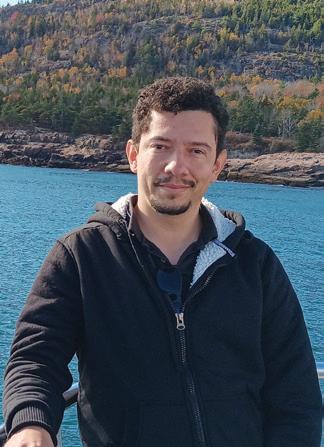
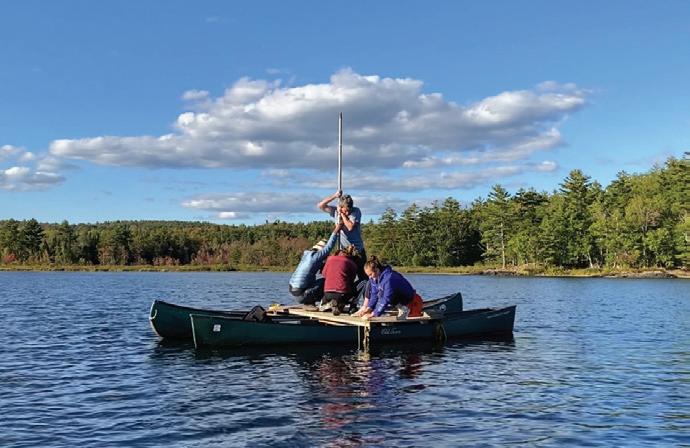
we can say—and be fairly certain—that there were people here in this particular watershed from 13,000 to 500 years ago, or whatever it is. In some cases, we see continuous occupation over time and sometimes we don't. The one really disturbing thing we always see—and we've done this for five or six lakes at this point—is a pretty continuous signal of people in a watershed area for thousands of years, but across the board, no matter in the variance of time frame, we see the signal disappear 500 years ago." Five hundred years ago is about the time of post-European-contact population decline. What these results are showing us is the decline in Indigenous populations, due to disease or forced removal, and then a period of stasis before the population begins to increase with European colonization.
Hudson muses about teaching in a (really) small liberal arts college in Maine and how he would send students to other labs to visit and collaborate with scientists in Japan or Canada. He never considered that students and postdocs would want to visit his lab, but that all changed in 2021 when Hudson, Ruvan de Graaf MPhil ’22, and Mari Strandoo Rodin ’20 wrote a paper on the origin of life at deep sea hydrothermal vents that got a lot of notice in the chemistry world. Since then, Hudson has had a steady stream of interested postdocs wanting to come and work in his lab. This is not a bad thing, but Hudson is quick to tell these eager young scientists that COA is a small undergraduate institution where we focus on teaching and experiential learning... At COA the students come first. "After giving that pitch to Thiago Altair, he decided that this was the place he wanted to be. He was in the last year of his PhD in Brazil, and he came to COA on a grant through the São Paulo Science Foundation. Altair was doing research, but he and I also taught an electrochemistry class. He is an electrochemist by training, and he has a lot more expertise than I do in that field, which made for a really dynamic learning experience for the students." Giving students the experience of studying with a versatile bunch of young scientists from around the world gave Hudson the idea to apply to the Maine INBRE [IDeA
Network of Biomedical Research Excellence] for funding to see if he could bring in Altair as a postdoc.
"The INBRE funding we received allowed us to have postdocs, fund students for doing summer research projects, and fund equipment and supplies." According to Hudson, “INBRE is invaluable for us to do what we do." Altair was the first to come to COA, then Hudson brought in Kheireddine, Pustovoit, and Polubinskyi. "They are all doing different things and contributing in different ways. Whatever we need, sometimes that is more teaching focused and others that is co-supervising student research projects. They've been amazing resources to have on campus."
Which brings up the question of what now? for displaced postdocs from warzones who have spread across the globe to survive and continue their work. This question keeps Hudson up at night. He spent a good deal of his sabbatical in the fall of 2024 looking for other grants to support these postdocs staying put for another year or two. "I was able to get a mid-range grant of $50,000 from Maine Space Grant Consortium, but when you're talking about supporting three people, that's only a handful of months. We've got a NASA EPSCoR [Established Program to Stimulate Competitive Research] grant proposal we are waiting to hear on, and another from NASA MOAiCS [Multidisciplinary drifting Observatory for the Study of Arctic Climate] we are waiting on too, as well as another from the Maine Sea Grant. Any of these would fund the postdocs for several years, which would mean everyone [students, displaced postdocs, the MDI community] is a winner... But nothing is guaranteed." Hudson also has grants out to fund student research in the summer.
The reciprocal nature of science research and learning means it's not a solitary endeavor but an interaction between labs, funding sources, and the world around us. "We've got some irons in the fire," Hudson muses. “A lot of exciting things in the works." Exciting indeed. Here's to hoping the funding comes through.
This piece began as a standard interview and evolved into more of an epistolary between Dan Mahoney and Allan Stone Chair in the Visual Arts Catherine Clinger.
CATHERINE CLINGER: The first thing I did at COA after I was hired in 2010 was interview Alan Jenkins, who was The Times Literary Supplement poetry editor. He and I had a great conversation that turned into an exchange centering on words and boats, forms of reciprocity in leaving and returning, utterance and the undocking from a pier... altogether a good night. Which makes me think now of reciprocity and the complicated nature of what it meant to the Greeks. In myth, literature, song—the ancient Greeks have a different association with what reciprocity is, and what gifting is... A boat journey invents the world. For the Greeks, reciprocity was more about backwards and forwards movement than it is about the giving and taking of items. Reciprocity means to cross distance. What Jenkins and I were talking about in the here and now—and in the poetical sense—is what it means to cross waters.
DAN MAHONEY: When we first spoke at your house and there was strong coffee and Bowie, your dog, it was such a rambling, inventive, fun conversation. You mentioned the Anne Carson book, Economy of the Unlost which sent me down a crazy rabbit hole. I could not write this article until I finished reading that book. I loved it, because, well, Anne Carson. One thing that made a huge impact was Carson's discussion of the Greek word xenia, a ritualized form of hospitality that bound the culture together. Xenia allowed Odysseus to make his journey and count on hosts to put him up on his travels. Xenia means guest but also host, which I think is fantastic. Talk about crossing waters and the movement of being in dialogue with a
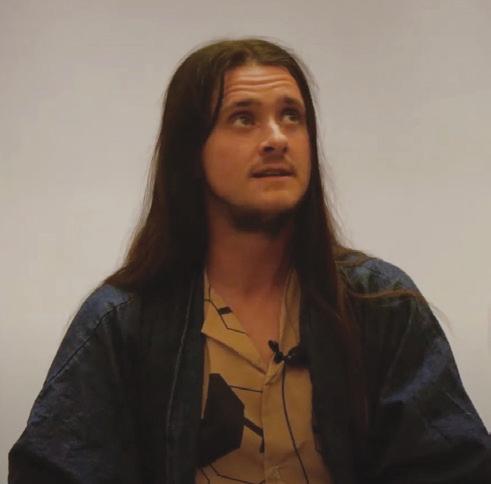
person. The space a good dialogue opens up is exciting and terrifying all at once. In Unlost, Carson talks about one of my favorite poets, Paul Celan, and how he is a poet of negation, but negation for Celan does not mean nothing or crossing out, it means the space between, as in, the negative space that exists between when a poem is written and when a stranger picks it up and reads it. The poem is intention—crazy energy waiting for a mouth.
I met Anne Carson in the early 2000s, when she visited Santa Fe to give a reading. Before her talk, she wanted to see the mountains. We sat on the back bench of a car that made its slow way from dawn on the high road loop through Carson National Forest—ancestral Pueblo land and 16th century Hispanic villages—I wished the ride could cancel the eponymous Kit Carson’s cruel deeds. Like Paul Celan, Anne Carson recognizes that the in-between shelters potency, not-nothingness. In an essay written about Jitka Hanzlová’s Forest cycle, John Berger noted her photographs reveal the forest is what exists between the trees. That day on the road, it was clear that Carson’s glance into the forest of the Sangre de Cristo Mountains educed the Greek dryads. Her silence was an event, just like the air between the trees. Her plunge into the forest without leaving the vehicle melted the road, the depths in the passenger and the land reproduced a xenia of sorts in both the becoming and continuity of going. The Lannan Foundation hosted her reading [and those of numerous other writers and poets], providing experience of unmediated reciprocity with no expectation. This is the character of The Kippy Stroud Foundation, honoring its namesake. Our work sprang from wanting to continue these kinds of conversations during the academic year, here at the college, expanding into performative and visual arts. We've been able to host quite a range of people. Mary Reid Kelley and Patrick Kelley were incredible in so many ways. Okwui Okpokwasili and her collaborator Peter Born were amazing. And then, most recently, Edie Fake. And there's nothing linking those artists except the fact that they've done a residency at COA. The Foundation has been expanding their focus, and together we have expanded the programs, bringing local Maine artists into the mix [Heather Lyon, Posey Moulton, Annika Earley]. The first iteration of the expansion was in the spring 2024, when Posey Moulton came and worked with Jodi [Baker, Joanne Woodward and Paul Newman Chair in the Performing Arts] and Dru [Colbert, COA professor emeritus] on the outdoor spectacle Graupel
It's been extraordinary to share this place with such wonderful artists. I was only familiar with Okpokwasili’s
work from Jodi [Baker, Woodward & Newman Chair in Performing Arts] teaching Bronx Gothic [a performance that fuses dance, song, drama, and comedy to create a mesmerizing space in which audiences can engage with a story about two 12-year-old black girls coming of age in the 1980s]. I don't remember if it was in the article COA wrote about Okpokwasili or somewhere else, but she talks about charging the space in a performance. I love that idea. It brings performance back to ritual and the charged space of ritual where the holy arrives. In Bronx Gothic, Okpokwasili has her back to the audience for the first 20 minutes of the piece, which builds this expectation and frustration where nothing is easy or quickly pleasing... Talk about punk rock. I remember seeing The Residents, I forget what show they were doing, but it was magical because they charged the space with sound in their black tuxedos and giant eyeball heads... They were working long form, slowbuilding an atmosphere, and then someone yelled from the audience, When is the show going to start, and there was this collective groan because it was clear the person was waiting for a present that was already present.
Ah, the range of audience! Being present to the present, or not… A boat ride to cross waters becomes treacherous when the stability of the vessel is endangered because people rush to one side to see something they assume will be there, a mass move to affirm expectation, rather than embrace chance. I was blown away by Edie Fake [fall 2024 College of the Atlantic Kippy Stroud Artist-in-Residence]. Edie’s work doesn’t just imagine a world, it builds our capacity to see worlds in the vernacular and create thresholds through which to move beyond the limits of what we mean by vernacular and normalcy in architecture and social life. Edie's talk was so inspiring; to be there with someone trying to put words to something that's beyond words. Sometimes when an artist or poet speaks, they have prepared a talk or there are prepared questions for the audience, and it is all very nice and tidy and boring. Edie had organized his work in a slide presentation and maybe had some notes but was not led by pre-thought, Edie’s whole being was led by being present in the doing and talking at the time. Seeing that talk and how he went about revealing self, that's part of reciprocity, in terms of gift... Gift is sacrifice, sacrifice is gift, and oftentimes gifts—going back to the Greeks here—gifts are given to the unknown, like to a divinity. But you need to give the gift form, so it ends up becoming an object or a person or blood.
A gift. Yeah. Mary Reufle talks a lot about wasting time in her book, Madness, Rack, and Honey, which is a funny way to engage an audience. She says poets need to waste time because it's part of the creative process and poetry disequips you from the requirements of life. There is
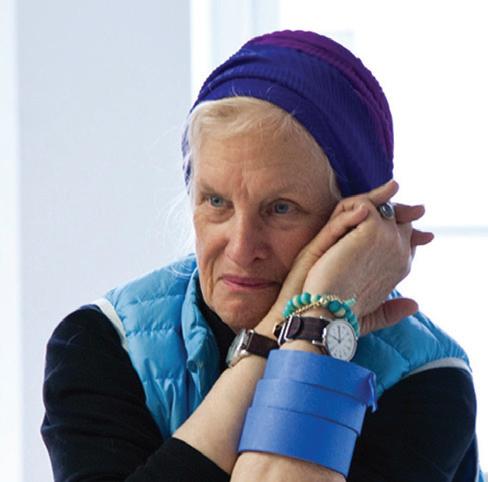
something so wonderfully anti-capitalist about the word disequips, and poetry is certainly anti-capitalist. Sending poems into the world hoping they find another mouth may be a quixotic vocation, but it is also an attempt to make sense, to bridge distances. Carson, too, says the attempt to make sense is an exchange; a gift. She says, You don't make sense for yourself; you make sense to tell someone else. I like that. Fake spoke a lot about moving around the country and creating work with others, about collaborating and building community. It was his artistic journey and, like you mention above, there were notes but I could feel Fake stumbling into parts of his own past as if they were just occurring. Does that make sense? Like, there's that saying about how the past is always changing because of what's happening in the present; when Fake spoke that night, I felt him engage with that sort of changingness in real time. It was stunning.
Well said, you!
My role has always been as a teacher at the college, sometimes as a facilitator of interesting conversations that happen. I love helping to bring people in. We [with the help of the Kippy Stroud Foundation] bring people to COA because my colleagues and I have worked together to identify a person (or people) who would offer an unexpected departure from our pier. In that way, we get to re-gift... and sometimes it all seems so effortless and sometimes it is about trying to ensure that a gift will actually be worked, not just used.
You're killing me with that distinction: worked, not just used. I guess the difference is in attention, right? Like when you are working with a tool you are actively engaged in form and function and improvisation versus simply using a tool to
complete a task. Attention... Celan, in his Meridian speech (which I read because of Carson and Unlost and I was down a deep, deep rabbit hole at that point) quotes Walter Benjamin's essay on Kafka, Attentiveness is the natural prayer of the soul. Attention is prayer. And now I'm off to Whitman and his Crossing Brooklyn Ferry where he anticipates generations to come after him who will journey across the Hudson River to Manhattan as he is doing in the poem, and how we will wonder about him just as he is wondering about us. And what is a poem if not a prayer? And I feel Whitman entirely present when I read that poem. And once when I read Crossing with middle schoolers, they got really freaked out: We don't like it that someone was thinking about us 150 years ago… it's creepy. And I knew they were feeling his presence too.
Oh dear, dear Walter Benjamin, the rabbit hole deepens! In Light, the Danish poet Inger Christensen wrote, "It’s very strange the eggs are everywhere… impossible, We must get closer together, but beloved what will happen with all the eggs everywhere, what will happen everywhere to us." Compounding and amplifying what we already have and know is not the mission of the Stroud Residency Program... It's definitely the opposite. We just hosted Serubiri Moses’ delivery of the inaugural Kippy Stroud Memorial Lecture. Moses was a complete pleasure to be around and engage with. Now that we've established that we have the capacity to host and bring people to COA, I think the next sightline for me is for the interactions to become more porous within the community. The generosity of Kippy Stroud prompts us to remember to make space for intellectuals and artists, rather than keep them in their place. Be hospitable, invite the encounter, over and over again, everywhere, be present within it, summon the Dryads, move forward and backwards, listen, but don’t stop. Keep the eggs and boats and forests shielded from being smashed together, cooked and compounded into a single, stagnant note. Let’s not be hospitable to monoculture.
We need new music and words to challenge and extend ourselves... The algorithm is killing us. One of the things that killed Bill Haley and the Comets (of Rock Around the Clock fame) was the algorithm that made them big stars in the first place. Haley was really attuned to when his teenage audiences reacted to this or that specific moment in a song, and he took very precise notes: this sort of break went over big, this guitar part they loved, sax here... It was a musician as chemist sort of thing with Haley. After Rock Around the Clock came out, The Comets played to massive crowds that reacted to everything all the time... Haley could not hear any specific moments because his shows were now one long moment. Oh, Catherine Clinger, I don't want the conversations to end. I want to keep talking to you and Kourtney and Jonathan and Reuben because I'm afraid of what happens when conversations end. Because I never know what I'm going to write until I begin and trust the words will find me. Because words come from somewhere else, and the job


of a writer is first to listen. Because attending to what people are passionate about is a gift. Because Serubiri Moses is a poet and poetry is a type of prayer. Because Celan says, "The poem is lonely. It is lonely and en route. Its author stays with it. Does this very fact not place the poem already here, at its inception, in the encounter, in the mystery of the encounter?"



The 2025 Summer Institute will celebrate exceptional individuals whose work and beliefs have changed how we see the world. Brilliant, brave, defi ant, the subjects of our sessions exemplify the power of commitment and the value of seeking new solutions. Many of the figures we will hear from or about experienced great personal risk to their careers —some to their lives. They persisted. Their example serves as a reason to hope, a road map for change, a resetting of our moral compass.
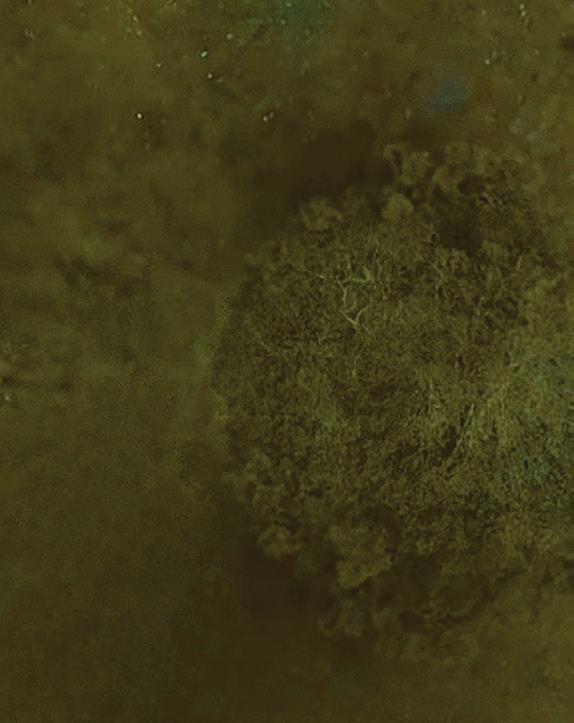
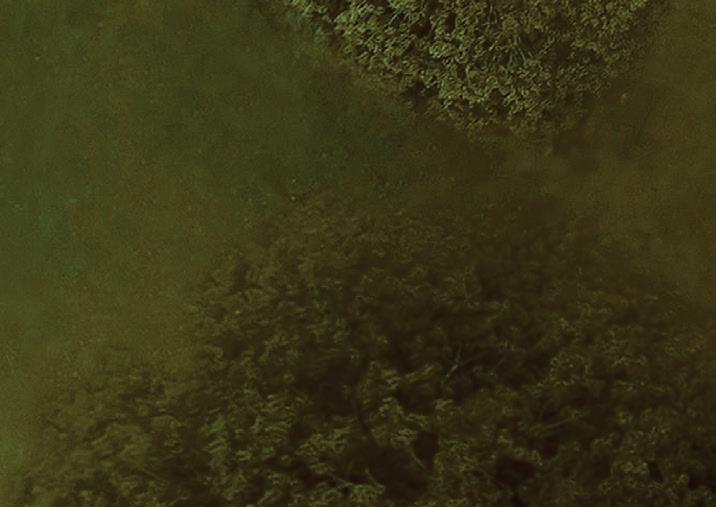



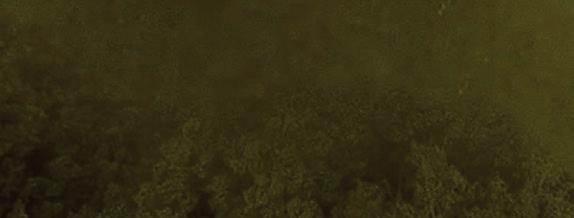

Together, we will explore pathbreakers across society—from Senator George Mitchell’s peacemaking in Northern Ireland and Patrick Radden Keefe’s uncovering a murder during The Troubles, to two iconic museum directors, Thelma Golden & Glenn Lowry, who have pushed the evolution of the art world for decades. David Remnick of The New Yorker will share his account of Alexei Navalny sacrificing everything to resist the Russian regime, while gun control advocate David Hogg will take us on his journey from a teenage voice combating gun violence to newly elected vice chair of the DNC. We will hear about those fighting for the ethical use of Artificial Intelligence with Nick Thompson. COA President Sylvia Torti will talk with Winnie Kiiru about groundbreaking research on elephants and empowering women conservationists across Africa. We will meet Kizzmekia (Kizzie) Corbett-Helaire, whose scientific discoveries helped unlock the COVID vaccine. Lessons from the fight of abolitionists will be brought to light by biographers Zaakir Tameez and Dorothy Wickenden. David Rubenstein will discuss what makes leaders great and Doris Kearns Goodwin will share insights from those she has known. These ten sessions will illustrate how individuals of enormous creativity, talent, and persistence can break through during extraordinarily difficult times and inspire our own path breaking.
By Jennifer Starr and Amy Morley
EUGENE "GENE" LESSER ’78 passed away in 2022, leaving behind a rich legacy that spanned various fields—from birding, baking, and building community to practicing medicine. His deep connection to COA, and especially to Great Duck Island, profoundly influenced his life, blending his love for nature with his intellectual curiosity and dedication to healing.
Gene’s journey to COA began in the early 1970s when he and his family arrived in Maine from New Mexico to join a small, intentional healing community that was on Great Duck Island at the time. This secluded environment quickly became the perfect classroom for a curious kid from Albuquerque. Gene joined the construction crew, honing new skills in carpentry and chainsaw work, while also perfecting his bread and soup recipes in the kitchen. This formative experience nurtured his experiential learning and introduced him to a vibrant community of locals and fellow seekers. The friendships he formed during these years would last a lifetime. During his time on the island, Gene first encountered students and faculty from College of the Atlantic. The progressive, non-traditional college seemed like the ideal place to further explore his burgeoning interests in the outdoors, science, and community building. Gene enrolled in COA and majored in exploring Mount Desert Island, spending countless hours hiking the trails, cross-country skiing, and discovering hidden coves and natural wonders. The faculty and coursework at COA helped deepen his understanding of the world,
while the college’s unique approach encouraged students to play an active role in building the community around them.
a lifelong passion for birding and community
As part of his research at COA, Gene studied the ducks on Little Duck Island. Under the guidance of early COA faculty member Bill Drury, Gene created his thesis, A Study of Marine Birds on Little Duck Island, Maine (1977), which became an important contribution to COA’s ongoing commitment to ecological studies on the island. This early research sparked a lifelong interest in birding and community engagement, passions that Gene continued to share with family and friends on every MDI visit following graduation. Over the years, Gene remained a dedicated COA alum, attending many alumni gatherings and even hosting a few at his home in New Hampshire.
"Gene was actually the first
COA
student
to study the ducks there under Bill Drury’s guidance—a pioneering effort that had an influence on the island’s research."
— W.H. Drury Professor of Ecology/ Natural History John Anderson
Gene was proud to be the first COA alum to complete medical school and
embark on a successful healthcare career. After graduating from Michigan State University College of Osteopathic Medicine and completing specialty training in neurology and clinical neurophysiology at Boston University and Brigham and Women’s Hospitals, he spent over 20 years as a neurologist at Southern New Hampshire Medical Center and St. Joseph’s Hospital in Nashua, NH. Seeking new challenges, Gene became the medical director for Neurometrix, a cutting-edge technology company in Waltham, MA, before fulfilling his dream of returning to New Mexico in 2014 to join the faculty at the University of New Mexico Medical School. Gene’s passion for teaching was evident in his work with medical students, interns, and residents, along with his collaborations with academic colleagues. His thoughtful leadership in managing both the Outpatient Neurology and ALS clinics earned deep appreciation from both patients and colleagues. Even in his final years, as he lived with cancer, Gene maintained a calm demeanor and good humor, always focused on helping others.
In honor of Gene’s enduring bond with COA, MDI, and Great Duck Island, his wife, Jennifer Starr, has made a generous gift to the college. Through Jennifer's gift, two students who would not otherwise have the financial means to participate in field studies at the COA Alice Eno Field Research Station on Great Duck Island will have the opportunity to engage in vital ecological research in summer 2025. These fellowships will allow students to explore topics like nesting birds, island flora, and
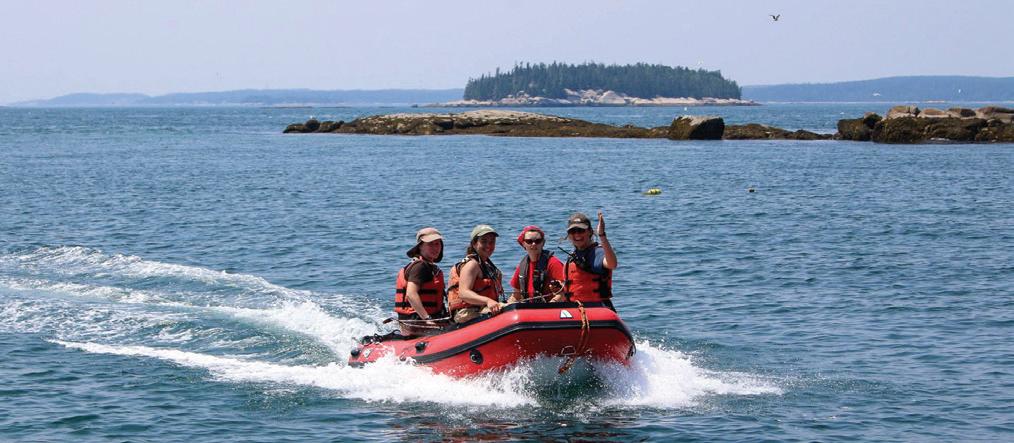
pollinators, immersing them fully in the island’s programs. In addition to supporting students, Jennifer’s gift will also address pressing needs on the island. Thanks to Jennifer, COA will purchase equipment to set up a gull cam—a vital project that will allow COA to share live footage from Great Duck Island, offering real-time insights into bird behavior and island conditions.
"I was motivated to make this gift to nurture the relationship that Gene and his family started more than 50 years ago. Gene would be thrilled to know that COA students are still making scientific and personal discoveries at Great Duck Island. I look forward to watching the gull cam and hearing how a summer on Great Duck can make a difference, just as it did for Gene.”
— Jennifer Starr
As we remember Gene’s time at COA and on Great Duck Island, we
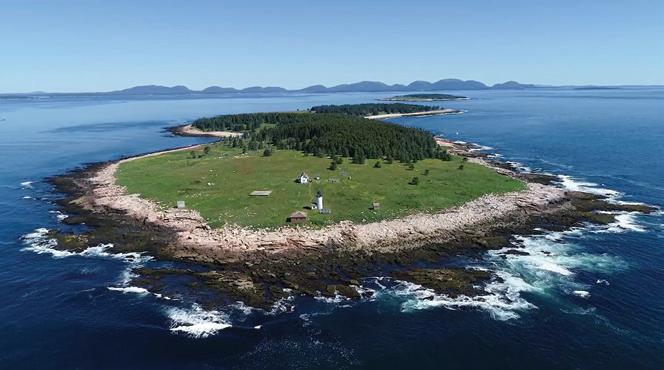
If you have a story you want to share about Gene with Jennifer, feel free to send it along to Amy Morley, manager of annual fund and major gifts, at amorley@coa.edu, for her to share.
celebrate a life marked by curiosity, compassion, and a deep commitment to making a difference. His legacy endures not only in the many lives he touched but also through the continued discoveries taking place on Great Duck Island—thanks to the gift that Jennifer has made in his memory. This enduring support ensures that future generations of students will be able to engage with the same transformative experiences that shaped Gene’s life, continuing the cycle of learning, growth, and discovery that Gene so cherished.

In December 2024, Julián Vélez Álvarez ’15 was involved in a serious hit-and-run car accident in his hometown in Mexico. Over the course of life-saving surgery, Julián lost his left leg to amputation. While Julián and his family and friends are deeply grateful that he survived, the road to recovery and rehabilitation is daunting and costly.
A GoFundMe campaign has been established to support Julián’s path to recovery. The aspiration is that with the right support, he will not only recover his day-to-day mobility and independence but also find his way back to the activities which bring him so much joy and purpose: dancing, martial arts, fencing, and climbing.
Support Julián through a direct donation to the campaign.
CRAIG KESSELHEIM
’76 and his wife, Beth Dilley, spent 2024 visiting one of Maine's 16 counties each month. They randomly picked county, month, date, and a letter of the alphabet out of envelopes on their 42nd anniversary, and then matched those random letters to towns within the selected county. (Somerset County "F" = Fairfield). They have four more counties to hit in 2025. Despite 30+ years as Maine residents (mostly in Southwest Harbor) they have learned a ton of new geography and history, found a lot of hidden beauty, traveled miles of two-lane roads, befriended many strangers, and eaten at diners, take-outs, restaurants, and inns along the way. They dubbed their local adventures, "New to ME."
BENNETT ’77 was recently presented with an award by Maine Governor Janet Mills and Maine Department of Inland Fisheries and Wildlife Deputy Commissioner Tim Peabody. It reads: “It is with deep respect that I announce Alexandra Conover Bennett as a 2024 recipient of the Fly Rod Crosby Outdoor Lifetime Achievement Award. Alexandra is well known in the North

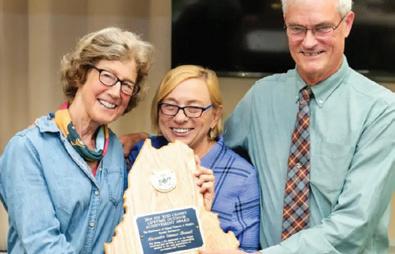
Top: Craig Kesselheim ’76 and wife in Monhegan. Bottom: Alexandra Conover Bennett ’77 (left) presented with Fly Rod Crosby Outfoor Lifetime Achievement Award by Maine Governor Janet Mills (center).
Maine Woods. She has embodied the spirit of the quintessential Maine guide for over 45 years. She has mentored many in a variety of outdoor skills, and to this day continues an apprentice program that teaches her students the art of carving a wooden paddle. Always a champion of conservation, she has fought to keep the Maine woods accessible and available for all… It is for her dedication to passing on a Maine Way of Life, her love of mentoring all in the outdoors, her impeccable outdoor skills she readily shares, and her commitment to education and teaching new generations the importance of selfreliance, conservation, and expertise in the outdoors that I proudly present her with this award.”
’79 left her position as health and fitness director at the Neighborhood House to focus on her online fitness business, Mighty Fit, and to have more time to write. She lives in Bar Harbor with her mom, who will be 90 in April. “It's like watching my future fl ash before my eyes,” she says, “but all lovely and nice to have this time together.”
This year, NEIL MICK ’85 received his fi fth degree black belt in Aikido. As a visual artist who has been featured in Who's Who in American Art, his work has been shown in galleries and shows across the country.
“Hi everyone!” writes CYNTHIA CHISOLM ’85. “I’ve been living and teaching kindergarten in North Carolina for the past 12 years and loving every minute of it. I had major spinal surgery in April and I’m relatively pain free for the fi rst time in over three years. I’m considering retirement in a couple of years and moving back to New England. My dream is to live in a cohousing community and paint full-time. I’d love to hear from you, old friends!”
REBEKAH (RESNICK) PADGETT ’91 is still in Seattle working for the state’s Department of Ecology and recently took on a new role as statewide lead on aquatic permitting for clean energy. “As I write this, I’m visiting South India for a wedding function and enjoying time with the family that adopted me while I was doing socioeconomic research here on sabbatical in 2019-2020.”
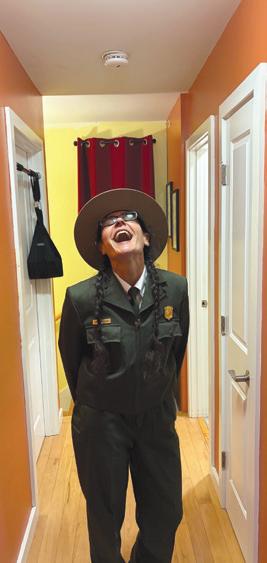
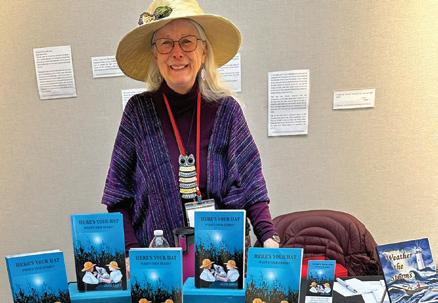

CHRISTIE DENZEL ANASTASIA ’92 has worn many hats for the National Park Service (NPS) across the country. She was present at the Frances Perkins National Monument proclamation signing in Washington, DC on December 16, 2024, and she is now the program manager for the Perkins monument, which is the newest NPS site in Maine. This national monument will inspire current and future generations to understand and uphold the government's role in providing social justice and economic security for all. One woman can change the world.
DARRON COLLINS ’92 has co-edited a volume called Unfurling Unflattening that will be released by MIT Press in 2025. That volume, a look at how Nick Sousanis's graphic novel Unflattening has been used throughout higher education, also includes a piece Darron authored called “The Profound Nudge” that details the use of Unflattening in COA's Human Ecology Core Course. Additionally, Darron has joined the Cromwell Harbor Foundation as its first executive director. He is working with long-time COA trustee and former Board of Trustees chair Will Thorndike in this
role. The foundation is dedicated to supporting early career scholars and the newest, most innovative nonprofits around the globe.
Walking along Seabury Drive in Bar Harbor on December 19, 2024, George and KELLY DICKSON MPHIL ’97 ran into some familiar faces: NISHI RAJAKARUNA ’94, who was visiting BRUCE HAZAM ’92 and ATSUKO WATABE ’93 for a few days before his annual Christmas visit with professor emerita Anne Kozak. The unexpected mini-reunion made for an enjoyable morning.
Over the past two years, BEN LORD ’99 has written and voiced a collection of audio essays on his podcast, I Heart This. They focus on appreciation, complexity, and wonder. He is also a science instructional coach for a school district in southern Vermont where he lives with his amazing wife LAURA CASEY ’01 and his two daughters.
In December, JUDE LAMB ’00 participated in the Bangor Authors' Book Fair and Literary Festival. Her


historical fiction book, Here's Your Hat, What's Your Hurry, is the story of two fatherless boys, set in 1875, not long after the American Civil War. They find many adventures while trying to avoid work, including encounters with cannon balls, old bones, a snake, a polecat, a mysterious book, and dancing pigs. “The thread of the story is based on a time in my greatgrandfather's life, as told to my father who later passed it down to me. I turned it into a rollicking adventure story, aimed at 8–12-year-olds and the young at heart. Included in the back matter of the book is the original story, as told to my father, as well as photos of my great-grandfather. One photo includes me… yes, I am old, but he lived to be 97, and I was 10 when he died!”
RACHEL WORTHEN ’01 is now the real estate officer for the Arkansas Game and Fish Commission. She continues to pursue her love of photography and darkrooms and will be participating in a photography show about small (population 999–2000) towns in Arkansas in fall 2025.
2002 JULIA ROWE ’02 has been promoted


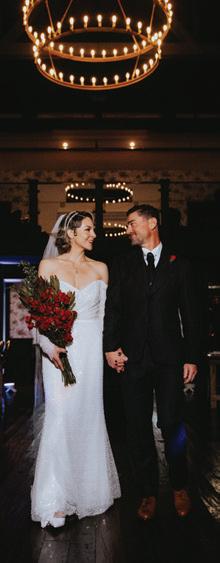
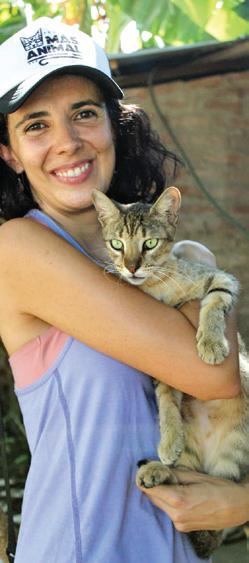


to senior scientist at the Arizona Department of Environmental Quality.
2003 New job! ZHUNA ATKINSON ’03 is the new liaison between Federal Emergency Management Agency (FEMA) Region 10 and the State of Idaho regarding all things mitigation and resilience. The position is embedded in the Idaho Offi ce of Emergency Management in Boise. Idaho’s primary natural hazards are fl ooding, wildfi res, and severe winter storms. Zhuna’s job is to facilitate risk analysis relationships between local communities and subject matter experts and to ease the burden of applying for and managing FEMA grants. The goal is to prevent loss of life and lessen damage to built and natural environments before a disaster event occurs.
’08 is currently working as a lifestyle medicine specialist at a longevity-based medical practice in Manhattan helping her patients improve their overall quality of life through the use of nutrition, exercise, and mental health support. Very human ecological! Outside
of work, Jessica is actively pursuing ballet training and is set to perform this spring as The Wicked Witch in a local production of The Wizard of Oz. She is also teaching at her ballet studio, offering classes in nutrition, body awareness, and stage presence. November brought a great new adventure: Jessica married her best friend, Colin! They celebrated their love surrounded by friends and family in a speakeasy-themed wedding in New Jersey where they live with their dog, Honey.
TATIANA AGUAYO
’09 writes: “Fellow alumni, it makes me so happy to introduce to you my new project, Proyecto Más Animal, which seeks to benefit the animals of Colombia. This is a dream come true! After many years of learning through travel, volunteering, and working at different charities, I decided that 2024 was the right time to start something of my own. I firmly believe that more can be achieved through teamwork, and this is why Proyecto Más Animal looks for collaborations with different charities and foster homes to trap-neuter-return feral cats, find homes, and educate people to benefit the cats and dogs of
Colombia. Please follow the project on Instagram at @proyecto_mas_animal, where I will be sharing this important mission. THANK YOU!"
TESS FALLER ’09 and her partner Dave welcomed the birth of their son River last December. They live and work at an expedition school and organic farm in New Hampshire.
In December, NEITH LITTLE ’09, husband Andrew Davis, and daughter Eloise Davis welcomed Leona Davis to the family. They live in Maryland, in a suburb of Baltimore, where Neith works for the Cooperative Extension Service.
On September 3, 2024, LISA KAY ROSENTHAL ’09 and her husband welcomed their daughter, Margo Eloise Rosenthal, into the world and their family through adoption. “Margo is curious, playful, and starts every day with a smile and a wiggle. We couldn't be happier to be a family of three!”
ALY BELL ’10 and Christian Millan Hernandez are overjoyed to share the adoption of their daughter, Maria Frances Millan Bell.
In May, ROBIN KUEHN ’10 earned



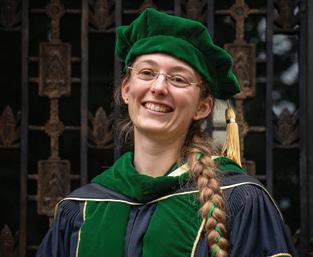
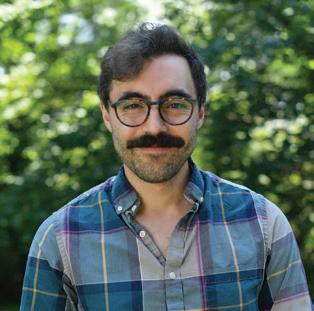
a master's degree in anthrozoology through Canisius University. She’s currently settled with her partner in Highland, New York, working in wolf conservation and serving as a community fellow with PAN Works, a center for ethics and policy dedicated to the wellbeing of animals.
2011
DYLAN PUGH ’11
writes: “Hello! I was recently elected to the Maine House of Representatives, representing District 114 in Portland. ALAN FERNALD ’11 was a core advisor to my campaign. I am also continuing my work as a software engineer at the Gulf of Maine Research Institute.”
HAZEL STARK ’11 writes to announce that “Maine Outdoor School celebrated eight years in business, moved our main office to Ellsworth, and welcomed two new staff members! Also, I bought a house, moved to Surry, and was named one of Mainebiz's '40 Under 40' honorees!’”
2013 CARLY SEGAL ’13 successfully defended
her master’s thesis on biodiversity and community ecology in Yellowstone National Park and started a PhD program in ecology and environmental sciences.
In summer 2024, KATE SHLEPR ’13 bought a house in the Michiana region of northern Indiana and southwestern Michigan, near her extended family. Her two newly adopted cats and an ever-growing postcard collection are making it feel like a home. Kate is approaching the end of her second year working for the Government Accountability Office where she evaluates science and technology for the US Congress. She would like to direct a cheerful "Hello!" to all her COA acquaintances, and wishes everyone a happy and healthy year to come.
2015 NADIA KASPAREK ’15 and JAMES CRAWFORD ’15 were thrilled to welcome baby Arthur in March 2024. They are currently living in Rockland.
2016
ARIANA YBANEZ ’16 gave birth to her first child with the support of her husband José. Francisco Laan Ybanez (Isko, Francis, or FLY for short) was
born December 18, 2024 in Seattle, Washington.
2017
ANEESA KHAN ’17 and George Perry were married by NATHAN THANKI ’14 in a beautiful ceremony with family and friends in London on June 1, 2024.
HILARY ROSE DAWSON ’18 recently graduated with a PhD from the University of Oregon and moved overseas for a postdoctoral position at The Australian National University, where she is researching how subalpine tree dieback affects carbon and water cycles in southeastern Australia.
Lights Out, co-founded by KARLË WOODS ’18, is a nonprofit arts organization that has been making an impact on the Maine art scene since its inception in 2021. The Lights Out Gallery, known for pop-up shows in unusual and temporary spaces, has grown to inhabit a vintage snowshoe factory in Norway, Maine. The future site to a community art center has grown with two more COA alums, BEN TROUTMAN ’24 and CORDELIA PERRY ’24, who are codirecting the 2025 Norway Maine Arts
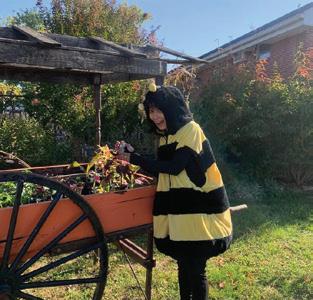




Festival. They are striving to showcase exceptional and unique art coming from Maine artisans and craftspeople while building connections to make art more accessible in western Maine.
HAKIM NOAH ’18 married his love Jesse Rose Komaromi on September 21, 2024 on her tribe's reservation in Kent, Connecticut. They live in Leverett, Massachusetts, where Hakim continues to expand his business, Amherst Massage Therapy. He offers myofascial bodywork, foundation training, coaching, and psychedelic integration/ education, which he writes about at littlemushroom.org.
Since leaving COA, KAT THONGDARA ’18 got a Master Gardener certifi cation for King County Washington, and is currently fi nishing her Master Naturalist certifi cation
for West Virginia. “I’m currently in Charleston, West Virginia working for Pollen8, a nonprofit that seeks to break the cycle of addiction through treatment, prevention, and reintegration programs for women in recovery. I am the farm manager for their social enterprise Cultiv8, through which I care for and plan out the farm and gardens of Pollen8. I hold community educational workshops on topics such as vermicomposting, propagation, and hydroponics, and I teach our clients cultivation skills, sustainable practice in and out of the garden, and farming and gardening basics. Cultiv8 grows all the food for our farm-to-table restaurant Cafe Appalachia, where we serve a greater purpose with every meal and where together we grow, feed, and teach.”
2023
Over the past year and a half, GLORIA ATONDEH ’23 has been navigating her professional journey
with a mix of challenges and growth opportunities. Two months after graduating, she landed a role as an accounting analyst but left after three months due to unfair treatment. A week later, she secured a position with a different company where she was responsible for implementing cost-saving strategies, only to lose the position when her Optional Practical Training visa expired. This motivated her to pursue further education and work toward a master’s degree in business analytics. By September 2024, she had rejoined the same company as a fi nancial systems analyst. Her dedication and strong work ethic were recognized by the senior vice president, who welcomed her back without hesitation; she was promoted to business project manager just two months later. Currently, she is balancing her role as a manager with her studies, and is on track to graduate in July. She is excited for what lies ahead!
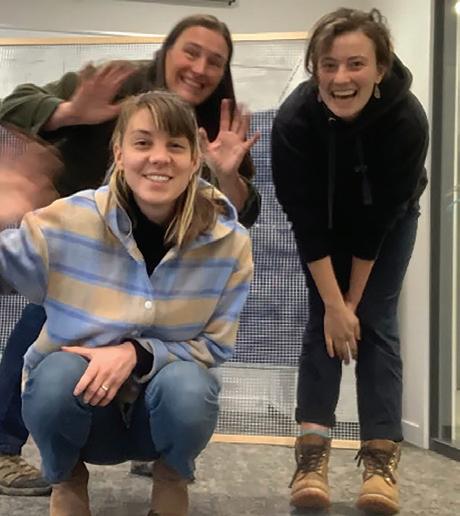

Thomas A. Cox Chair in Studio Arts NANCY ANDREWS is working on a short film called Flower that started from a prompt she was offered, “watermelon sugar,” when she participated in a benefit for the nonprofit arts organization Lights Out, co-founded by Karlë Woods ’18 (see alumni notes). She was a guest at the School of the Museum of Fine Arts at Tufts University as part of experimental animation class by Maya Erdelyi. She also taught guest classes at Bates College and University of Illinois, Chicago in February. While there, she played a gig with Linda Smith at The Hideout. Andrews served as an artist in residence at The Studios of Key West in Key West, Florida for the month of March, and offered a two-day animation workshop there. She is in the process of digitizing several films as she builds towards a retrospective to be shown at Reel Pizza in May.
In summer 2024, Steven K. Katona Chair in Marine Sciences and COA Allied Whale Director SEAN TODD continued his work for the North Atlantic Humpback Whale Catalog (curated by COA Allied Whale) with trips to Iceland and Greenland, visiting the remote Northeast Greenland National Park, a High Arctic fjordic
system visited by fewer people than have climbed Mt. Everest. He also spent time in Antarctica in December aboard R/V Seabourn Pursuit working as a polar guide and collecting data for the Antarctic Humpback Whale Catalog. Sean also worked collaboratively with some Allied Whale colleagues to publish “Examination of Isotopic Signals to Determine Trophic Dynamics and Diet of Gulf of Maine Mysticetes Prior to an Oceanographic Regime Shift” in Volume 50, Issue 1 (2025) of Aquatic Mammals Journal. Authors included Sean Todd, Jooke Robbins, Mason T. Weinrich, NATASHA PASTOR MPHIL ’20, DAN DENDANTO ’91, Per J. Palsbøll, and Allied Whale research associate ANN M. ZOIDIS (2025). This paper contains important pre-warming diet baseline data that can be used for subsequent papers which came out of the group’s current work examining the impact of climate change on baleen whale foraging success.
In the summer of 2024, professor of physics and mathematics DAVE FELDMAN again directed the Santa Fe Institute's month-long Complex Systems
Summer School, and he will do so again this summer. He recently received a grant from the Maine Space Grant Consortium to add model rocketry to Calculus II
Much of spring and fall 2024 were focused on the inaugural Camino course. Sharpe-McNally Chair of Green and Socially Responsible Business JAY FRIEDLANDER and Ursula Hanson, along with trustee emeritus JAY MCNALLY ’84 and Teresa Tierney (MD, retired) led the course and walked with 12 students roughly 500 miles from France to Santiago de Compostela, Spain (see story in this issue). Closer to home, Jay worked with Downeast Dayboat to help them fulfill their mission supporting Maine fishermen and providing consumers with unbelievably delicious scallops. In addition, Jay and Jordan Motzkin ’10 taught courses for hundreds of businesses in partnership with groups like Maine International Trade Center, Maine Center for Entrepreneurs, and other economic development groups. Along with learning key financial concepts, Jay and Jordan use their web app, Profit Decoder, to help entrepreneurs strengthen their profitability. Finally, in 2024 and 2025
Jay collaborated with the Center of Innovation and Leadership at Swarthmore College to redesign and lead their entrepreneurship boot camp and pitch competition, SwatTank.
COA President SYLVIA TORTI’s memoir essay, "The Mortal Shift" was published in Fish Anthology, Cork, Ireland. It's a story of looking for water to develop a field station in the parched desert of the Colorado Plateau while wrestling with mortality and uncertainty.
Elizabeth Battles Newlin Chair in Botany SUSAN LETCHER published three papers in high-profile scientific journals with an international network of collaborators on the theme of tropical forest responses to climate change. Outside of COA, she started a part-time job as the music director at Somesville Union Meeting House, where she directs the choir and plays piano and organ.
MAGGIE DENISON ’09 and professor of biology and Kim M. Wentworth Chair in Environmental Studies BRITTANY SLABACH ’09 attended the Northeastern Alpine Stewardship Gathering in Bretton Woods, New Hampshire, in October 2024. Maggie presented a poster of ongoing research investigating the relationship between restoration activities and small mammal community ecology in Acadia National Park. Current students Sierra Abrams ’26, Jackie Brooks ’26, Nathan Morgan ’26, and Chloe Meyer ’25 are all coauthors on this work, as was Acadia National Park Lead Wildlife Biologist Bik Wheeler ’09.
MARTHA ANDREWS DONOVAN, lecturer in writing, was reappointed in June 2024 by the Select Board of the town of Tremont to serve another three-year term as a member of the Board of Trustees for the Bass Harbor Memorial Library, where she also sits on the Board's Personnel and Policy Committee and the Programs Committee. Martha engaged in a personal challenge to write 30 poems
in 30 days during the month of January; she calls this practice "Thirty (Mostly) Tiny Shitty First Draft Things"—all part of the uncertainty and messiness and vulnerability and hopefulness of this thing we do as writers.
Richard J. Borden Chair in the Humanities BONNIE TAI has completed a year-long mindfulness teacher-training certification program through Inward Bound Mindfulness Education. Her book chapter, coauthored with Abby Plummer MPhil ’16, Beth Heidemann ’91, and Sarah Kearsley MPhil ’16, will come out this year, in Candace Schlein and Sara Crump's Active and Engaging Classrooms: A Practical Exploration (Information Age Publishing). She serves on the boards of Impact Boston and Unified Asian Communities, and continues to serve as a Hancock County Advisor for Maine Community Foundation.
In 2024 adjunct faculty JENNY ROCK ’93 saw her fourth University Centre of the Westfjords (UW, Ísafjörður, Iceland) master’s student, Ela Keegan ’21, defended with high marks. She became Jenny’s 43rd master’s student across all universities. Meanwhile, Katie Culp ’24 is likely to become Jenny’s 44th, also through UW but with research together in New Zealand. In 2024, Jenny’s 6th PhD student also had her doctorate conferred, and Jenny published her 66th research paper/book chapter. More cool COA connections last year included a further research project in New Zealand with Elle Gilchrist MPhil ’21, building on research with Ela Keegan ’21 in 2023.
Title IX coordinator & HR support staff PURANJOT KAUR ’05 competed with Team USA at the 2025 World Ice Swimming Championships in Molveno, Italy in January. The event brought together 752 athletes from 48 countries. The competition was held in a 50-meter, Olympic-sized pool, where the water temperature was 36.1°. Puranjot's events were the 50- and 100-meter breaststroke, and the 50-, 100-, and 250-meter free stroke.
In response to the challenging
conditions for dialogue about IsraelPalestine, professor of cultural and political anthropology NETTA VAN VLIET organized a series of speakers who came to campus during spring term 2024 to share work and facilitate discussions. Guests included Tarek El Ariss, Susannah Heschel, Neta Weiner, and Samira Saraya. Thanks to enthusiastic interest among audience members, Neta and Samira returned in the fall 2024 term—this time also with longtime collaborator Stav Marin—and the three performed a multilingual (Yiddish, Hebrew, English, Arabic) musical and spoken word piece from their work Beat Midras. Neta, Samira, and Stav also hosted a discussion about current events in Israel-Palestine and Gaza, and a screening of a selection of Samira's films. On Earth Day 2024, Netta organized and facilitated a panel of COA arts and design faculty (Catherine Clinger, Jonathan Henderson, Brook Muller, and Neeraj Sebastian) which thought expansively about the environment and wellbeing, sharing artistic work that invited consideration about ideas of safety and security, risk, proximity and distance, intimacy, aesthetics, and critical thinking. In June, Netta presented a paper, "Responses to Oct. 7th, 2023: Israel, Gaza and Elsewhere" at the Derrida Today conference in Athens, Greece.
Philosophy and language professor GRAY COX’s recent book on AI is now available as a Creative Commons Spanish translation, ¿Planeta más Inteligente o más Sabia?, that can be downloaded online. He was delighted to visit India virtually in June by teamteaching an online seminar with his colleague, Ramasubramanian, through the Gandhian activist organization Samanavaya. Gray is totally psyched to be team-teaching a course on collaborative writing, Ethics, AI, and Authorship, with COA writing professor and writing program director Su Yin Khor. He also continues to wonk out on more technical AI stuff including an article developing an Aristotelian theory of emergent forms of

intentionality in AI and a collaboration with Phileas Dazeley-Gaist ’23, with whom he is exploring the development of a human-ecological AI app. He keeps singing and writing songs to deal with political angst and hope— including a new tune, Upbeat All The Time. And, of course, he gets out with family and friends as much as possible to enjoy what he always notes is, according to some people, the second most beautiful island in the world.
Writing program director SU YIN KHOR has continued to present at conferences and publish work related to writing, identity, and teaching. At the Conference for Communication and Composition, held in Spokane, Washington in April 2024, she presented research findings from a study about writing pedagogy and classroom practices in a writing class for adult women immigrant learners who participated in a communitybased English literacy program. She co-wrote a chapter about leadership in English Language Teaching with her long-time collaborator, Cristina Sánchez-Martín, which was published in Female Leadership Identity in English Language Teaching: Autoethnographies of Global Perspectives (Brill), and edited
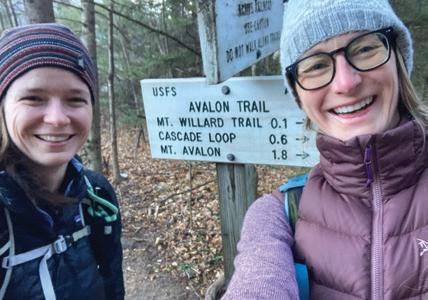

by Doaa Rashed and Debra Suarez. In a different project with SánchezMartín, she co-edited a special issue of TESOL Journal that was published in August 2024. The special issue focused on gender equality in education and each contributor addressed how pedagogical practices and educational institutions can create space for diverse gender identities. After wrapping up her first year at COA, she and her partner spent the summer with family and friends in Sweden and managed to squeeze in a mini backpacking trip in Europe, finally crossing Prague, Vienna, and Budapest off her bucket list.
Over winter break, the library's intrepid weekend supervisor, WENDY KEARNEY (’92), decided to move into a new career: retirement. Wendy started working for Thorndike Library as a work-study student in 1979. While at Thorndike, she developed a passion for libraries and has been a devout member of the library community on MDI and beyond ever since.
In addition to the decades Wendy has been a part of the COA community, her experiences span from working as a librarian at Northeast Harbor Library, the library at Jackson Laboratory,
Thuya Gardens’ rare book collection, Azalea Gardens’ library, and as a cataloguer of books for Acadia National Park. She worked for the Cornell University Johnson Graduate School of Management Library and, thanks to a grant, spent time studying British library practices at the Bodleian Library at the University of Oxford. Wendy is a woman of many talents and, true to the many hats island residents don, Wendy also had stints as the postmaster in Hulls Cove, as a film developer in a color photo lab, and as a gardener, naturalist, and tour guide, among other things.
Above all else, Wendy's kind disposition and fabulous stories of shenanigans at COA infused weekend evenings in the library with the feeling that the history of this college and island community is always just below the surface. At any given moment, Wendy's conjuring could bring the past back to life.
February 9, 1933–December 11, 2024
By professor emerita Anne Kozak
HOW DO WE pay tribute to a man who personified life—a person who was giving, generous, supportive, and loving? Not only were the Newlins dear friends, but Bill and his wife of 69 years, Louisa Foulke Newlin, were also long-term supporters of the college and COA’s writing and literature program. They taught writing and literature courses and have helped to fund that program.COA Lisa Stewart Chair in Literature and Women's Studies Karen Waldron and I—as well as many students—benefited enormously from their generosity and support. Over the years, Louisa and Bill worked with countless students, particularly some of the Davis scholars who graduated in 2005.
At his January 6 memorial service at St. Alban’s Episcopal Church in Washington, his family remembered Bill as someone who throughout his life recognized the goodness in others and the need to serve God, country, family, and friends. I was privileged to view that tribute where his three children, three granddaughters, a daughter-in-law, and sister Lucy Bell Sellers [a former theater professor at COA] all shared memories, sang, or read from Scripture.
In 1955, Bill graduated from Harvard and subsequently served as an officer in the US Army. After receiving graduate degrees from Harvard Business School and the Fletcher School of Law and Diplomacy, Bill joined the Foreign Service. Over his 25-year career, Bill worked in Paris and Guatemala, and in Germany during negotiations over the Berlin Wall. He was later a senior watch officer in the State Department’s Operations Center—an office that makes sensitive decisions involving classified information. In Brussels he served on the United States Mission to the European Community; subsequently he worked on the Law of the Sea and finished his tour of duty with the State Department as consul general in Nice.
Bill’s zest for life and service was also exemplified on Mount Desert Island and at College of the Atlantic. Here, he and his extended family—the Newlins, Foulkes, and Sellers—in 1991 gave the college the Newlin Gardens in memory of Bill’s father, E. Mortimer Newlin, and in 1998 they endowed Elizabeth Battles Newlin Chair in Botany honoring his mother. As children, Bill and Louisa summered in Northeast Harbor, and in 1976, they purchased Four Winds—a Northeast Harbor home that
once belonged to Louisa’s grandmother, and it was that home where they welcomed many of us from COA.
In 1987, Bill joined the Board of Trustees, where he served for 20 years and was named a life trustee in 2008. Bill served at a critical juncture in COA’s history: The college was recovering from the 1983 fire—rebuilding Kaelber Hall and the Thorndike Library, both severely damaged in the fire, and developing programs that expanded the concept of human ecology. The college had growing pains and needed a steady hand. “Bill and his family as well as other summer residents had the resources, ideas, and commitment to help us move forward,” said Shawn Keeley ’00, dean of institutional advancement. “We owe them a debt of gratitude.”
In refl ecting on Bill’s life through memories and photographs, former president Steve Katona said, “…two essential features are indelible. First is Bill’s huge, beautiful, ever-present smile which, like the Cheshire cat’s, will always be there to remind us of his spirit. Second, is the love he expressed so easily and generously. We treasure the last words we shared with Bill in July at the COA Summer Institute, when Susie said, ‘I love you, Bill,’ and he replied, ‘I love you, Susie.’ It was Bill’s nature to greet the world kindly, with such a cheerful smile and so much love, and we are all much the better for it.”
Karen [Waldron], who worked extensively with Bill when she was academic dean, recalled Bill’s ability to deal with sensitive issues and to forge consensus. “As a board member, he was profoundly experienced and understanding of the issues and concerns of people often with divergent points of view. The combination of this understanding and experience is, perhaps, his greatest gift to the college.”
Current board chair Beth Gardiner noted it was hard to understate the massive impact that Bill had on the college. “Nothing would stop Bill from being involved. Just last summer, despite failing health, Bill and his wonderful wife, Louisa, were fixtures at our Summer Institute.”
Bill and Louisa played major roles in my life as friends and faculty members. They gave unstintingly of their love and time. Often they extended their summer well into the fall, sometimes even to Thanksgiving, and extending their summer benefitted the college.
College of the Atlantic looks forward to hosting a celebration of life for Bill Newlin this summer.
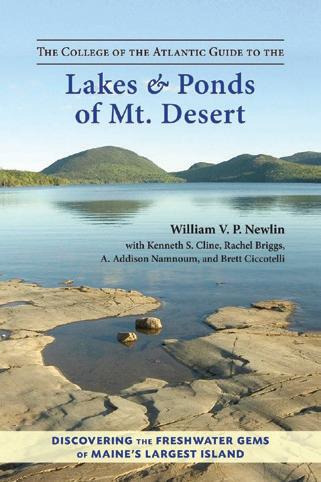
On several occasions, Louisa, a Shakespeare scholar at the Folger Library, taught Shakespeare, and Bill taught writing. In 2001, I was teaching a class for the incoming Davis scholars and soon realized that I needed to break the class into two sections. I asked Bill for help, and he said he’d be delighted to teach. And everything went quite well—that is until about two weeks after the end of the term when I called him to ask about his narrative evaluation, a COA requirement. In very strong tones, Bill told me I had never mentioned his having to write narrative evaluations. While literally that was probably true, I had assumed that as a long-time trustee of the college Bill knew that in part what makes COA unique is narrative evaluations.
Recently I found some of those evaluations, along with a self-evaluation, from one of Bill’s students, Santiago Salinas ’05, now a tenured associate professor in biology at Kalamazoo College in Michigan and the author of a number of papers in leading scientifi c journals. In his self-evaluation, Santiago wrote: “Undoubtedly this was a helpful experience… and my writing skills improved dramatically, thanks to Bill.” More recently in talking with Santiago, he told me, “I have great memories of his class—Bill’s frank, direct feedback was so weirdly refreshing to me when I was 18.”
In 2012, Bill collaborated with another COA faculty member, David Rockefeller Family Chair in Ecosystem Management and Protection Ken Cline, and three of his students to update and expand Bill’s Guide to the Lakes and Ponds of Mt. Desert, published in 1989 by Downeast Books and by the college in 2013 as The College of the
Atlantic Guide to the Lakes and Ponds of Mt. Desert. In the preface to the second edition, Bill, who was in his 80s, questioned whether he had the stamina to update the book. “As I pondered my options, and as time passed, fate in the person of Ken Cline, a professor at College of the Atlantic, gave me a nudge. He asked if I would be willing to work with a small group of students for a trimester and update the book for reissue. It was a toss-up at best if I would be able to update Lakes and Ponds by myself. But working with another professor and a handful of students was another matter. I jumped at the prospect.”
Bill and Louisa made another gift to the college. At my retirement in 2022, former COA president Darron Collins ’92 asked them to contribute to the Writing for the Future Fund in honor of my 45 years teaching writing at COA—a fund that supports writing faculty, expands the peer tutoring program, and draws on new methods of communication to prepare students for communicating in today’s world.
In early September 2024, just before they left for Washington, I spent a lovely few hours with Bill and Louisa in their Northeast Harbor home overlooking Somes Sound. Even though he had what appeared to have been a mild setback earlier in the week, he seemed well, and Bill and Louisa welcomed me for tea. We sat in the living room with a fire in the fireplace, talked about the upcoming election, campus issues, books we had been reading, and our commitment to celebrate Bill’s 92nd birthday next summer.
While that celebration will not occur, Louisa, Lucy Bell, and I will sit by the fire, drink tea, and spend time refl ecting on his contributions to the college and reminiscing about his accomplishments, his love for the island, and his many gifts to each of us.
Bill’s gifts as well as those of Lousia and the Foulke, Newlin, and Sellers families have helped to shape the COA ethos. We owe them so much and, like others, I will miss him.
The family has requested that gifts in Bill’s memory be made to the college. They may be sent to Advancement Offi ce, College of the Atlantic, 105 Eden St, Bar Harbor, ME 04609 or electronically at coa.edu/giving.
By COA Manager of Annual Fund and Major Gifts Amy Morley
THISPAST SUMMER, members of the Northern Lights Society gathered at COA Beech Hill Farm for a special event celebrating both sustainable farming and the generosity of planned gift donors at College of the Atlantic.
Each year, Northern Lights Society members come together at different COA locations to celebrate their commitment to the college through planned gifts. These donors make commitments such as bequests, charitable gift annuities, and gifts of life insurance or property—elements of their longterm giving strategy. Planned gifts represent a donor's intention to
showcased the farm’s expanding variety of certified organic produce and highlighted its role as a handson learning environment for both students and faculty.
whether through time, resources, or ideas—becomes part of a larger effort to shape the college’s future.
Ron Beard, COA trustee and Northern Lights Society member, eloquently expressed the importance of planned giving: “Including COA in my will aligns with the values I try to live day to day. My small contribution flows with the contribution of others, helping these experiments continue.”
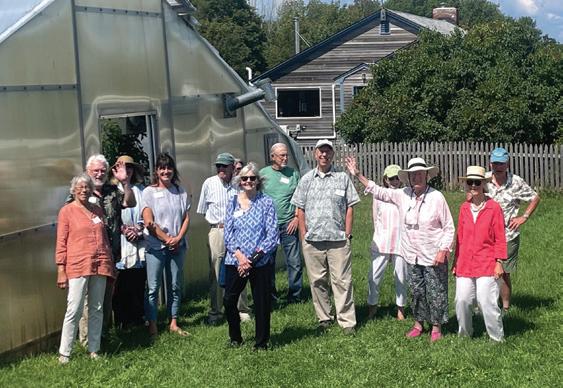

support COA beyond their lifetime, continuing the contributions they’ve made while alive. Unlike annual gifts, planned gifts are scheduled for the future, often as part of an individual’s or couple’s estate plans.
In August 2024, Anna Davis, comanager of Beech Hill Farm, led the group of Northern Lights Society members on an insightful tour. She
Beech Hill Farm is not only a place where fresh, organic food is grown for the college and the surrounding community, but also a vital educational hub where COA’s commitment to sustainability takes root. The farm offers students the opportunity to engage directly with innovative farming practices that reflect COA’s broader mission of environmental stewardship and academic excellence.
After the tour, the group enjoyed a delicious farm-to-table lunch, featuring quiche, roasted potatoes, garden salad, and blueberry galettes with ice cream for dessert—an experience that truly embodied the farm-to-table ethos. As they savored the meal, members of the Northern Lights Society shared heartfelt stories about why they support COA and what the college means to them. The event was a testament to the deep sense of community at COA, where each person’s contribution—
Ron’s words captured the essence of the Northern Lights Society: every planned gift, regardless of size, creates a lasting impact and supports COA’s mission for future generations of students. Planned gifts are a vital source of support, ensuring that the college can continue to offer transformative experiences like those at Beech Hill Farm, where education and sustainability go hand in hand.
Photos by Shawn Keeley.
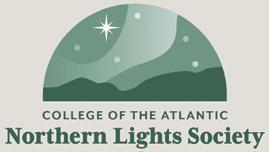
For information about membership in the Northern Lights Society, please contact Amy Morley at amorley@coa.edu.
(excerpted)
THANK YOU to College of the Atlantic’s Board of Trustees, led by Beth Gardiner. Thank you to the past presidents of College of the Atlantic who are here with us today: Steve Katona, David Hales, Andy Griffith, and Darron Collins. It is because of your leadership that COA is what it is today. I have immense appreciation for the COA community. Faculty—both current and emeriti—hard-working staff, our alumni, students, families, and friends. I value the ways that you attend to and sustain the vibrancy of this place. You are College of the Atlantic.
As I was preparing for today, I remembered a work of art that, to me, epitomizes College of the Atlantic—the vision of its founders, its present-day life, and its future existence.
Let me take you on an imaginary journey.
The year is 2114. You’re in Norway, because there is still a country called Norway, and you’re there either for work or for pleasure, because there is still both work and pleasure in 2114. You stop in at the library in Oslo. Across the room you see a pale wooden wall with a curious oval entrance. You approach the wall and read a sign. It says if you take off your shoes, you may enter. You step barefoot through a constricted hallway made of this same wood to find yourself inside a small room, a room that makes you feel like you’re inside the trunk of a tree. As you look around, you see that, set into the wood of the walls from floor to ceiling, are locked glass drawers, and when you peer through the glass, you see that each drawer holds a manuscript.
You are standing inside a 100-year work of art, which was conceived of and put into motion in the year 2014 by a young Scottish artist named Katie
By Sylvia Torti October 20, 2024 — College of the Atlantic
Paterson. In 2014, Katie Paterson was 21. When you visit this room in 2114, she has been dead for some time.
Let’s now ask our imaginations to roll backwards, back to 2014, when Katie was 21. She was contemplating ecology and time and our capacity to imagine, and make real, a future beyond ourselves. She used her imagination to conceive of this artwork called Future Library
What did she do?
First, she convinced the Norwegian government to let her cut down a plot of forest, to take the harvested wood and use it to build a beautiful small room, called Silent Room, within Oslo’s library. She then returned to the cleared forest with a team of people, and they planted 1,000 spruce trees. Those saplings are growing and will grow for 100 years.
Next, she approached the Canadian writer, Margaret Atwood, and asked her to write an original manuscript, a book that no one would read for 100 years, a book that would become the first of 100 books to be collected in Future Library. The only direction was that Atwood consider the themes of imagination and time.
Every year since 2014, another writer has been chosen by a committee to write a book that will be held in trust for the future.
Katie then created a thousand copies of a print depicting a cross section of a tree with 100 growth rings, and she sold them as certificates, thereby raising funds to support the project. Individuals who purchased an art piece, or certificate, will pass it onto someone in the next generation.
In 2114, the drawers will be unlocked. The spruce trees will be felled, and their pulp used to create paper on which these books, hidden for a century in the
case of Margaret Atwood’s book, and only for a year in the case of the last author chosen, will be published. All holders of the certificate will receive an anthology of 100 books.
Consider this. Katie Paterson wasn’t only thinking about ecology and how to push us beyond the narrow scope of a human lifespan, she was also thinking about the value of human institutions. She created a foundation to oversee the project. She negotiated a 100-year legal agreement with the city of Oslo. She considered fi nancial sustainability.
The foundation, which will change members every 10 years, is not only responsible for choosing authors, but also for the maintenance of the forest, for the ongoing expenses, for caretaking the artwork’s charter, and for allowing change while protecting the essence of Katie’s vision. The current stewards must trust one another and entrust the project to people they’ll never meet.
This is a deeply human-ecological piece of work.
Future Library hinges on faith in our shared humanity and trust in our ability to shape the future for good. In order for Future Library to exist now—as well as in the future—Katie Paterson, and all of the authors and stewards, have to believe that 100 years from now the forest will still stand, that it will have survived shifts in climate, that it will not have burned, been cut, or consumed by disease. They have to believe that in 100 years there will still be libraries, that we will have technologies for making paper, and artists who know how to print. And most importantly, they have to believe that there will still be a desire to read and learn from books.
College of the Atlantic is a metaversion of Future Library
